Paul van Yperen's Blog, page 166
March 22, 2021
Artistas de Cine
Ivo Blom found this sweet series of Spanish collectors cards by Chocolates Amatller in Barcelona. The series, called 'Artistas de cine' (Cinema artists), dates from the 1920s and all the caricatures of the silent film stars were made by Fulgencio Martínez Surroca (1902-1967), a cartoonist, illustrator, and publicist, born in Cieza, Murcia, Spain.
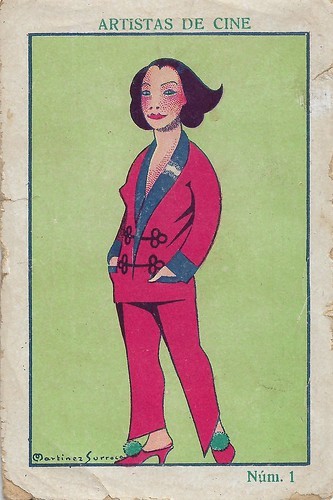
Spanish collectors card by Chocolates Amatller, Barcelona, in the 'Artistas de cine' series, no. 1: Greta Garbo . Image: Martinez Surroca.
Swedish Greta Garbo (1905-1990) was one of the greatest and most glamorous film stars ever produced by the Hollywood studio system. She was part of the Golden Age of the silent cinema of the 1920s and was one of the few actors who made a glorious transition to the talkies. She started her career in the European cinema and would always stay more popular in Europe than in the USA.
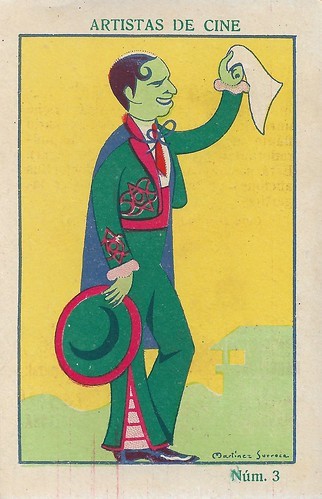
Spanish collectors card by Chocolates Amatller, Barcelona, in the 'Artistas de cine' series, no. 3: Douglas Fairbanks . Image: Martinez Surroca.
American actor Douglas Fairbanks (1883-1939) was best known for his swashbuckling roles in silent films such as The Mark of Zorro (1920), Robin Hood (1922), and The Thief of Bagdad (1924), but spent the early part of his career making comedies. Fairbanks was a founding member of United Artists and of The Motion Picture Academy. He hosted the first Oscars Ceremony in 1929. With his marriage to Mary Pickford in 1920, the couple became Hollywood royalty, and Fairbanks was referred to as The King of Hollywood'', but his career rapidly declined with the advent of the 'talkies. His final film was made in Great Britain, The Private Life of Don Juan (1934).
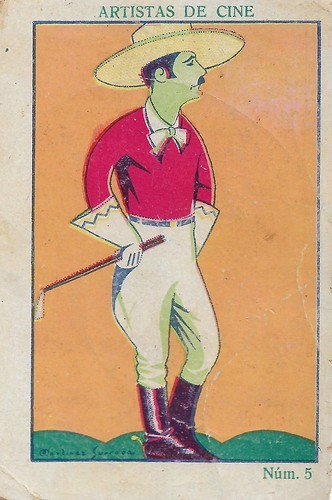
Spanish collectors card by Chocolates Amatller, Barcelona, in the 'Artistas de cine' series, no. 5: Norman Kerry. Image: Martinez Surroca.
Norman Kerry (1894–1956) was an American actor of the silent era, who peaked in the Lon Chaney films The Hunchback of the Notre Dame (1923), The Phantom of the Opera (1925), and The Unknown (1927).
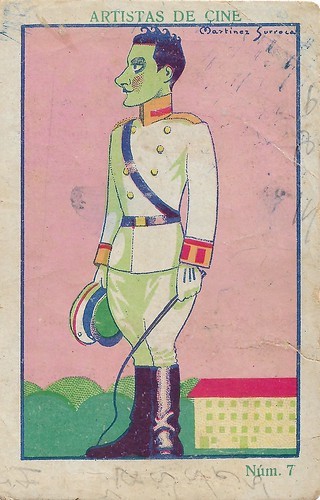
Spanish collectors card by Chocolates Amatller, Barcelona, in the 'Artistas de cine' series, no. 7: John Gilbert . Image: Martinez Surroca.
American actor, screenwriter, and director John Gilbert (1899-1936) rose to fame during the silent film era and became a popular leading man known as 'The Great Lover'.
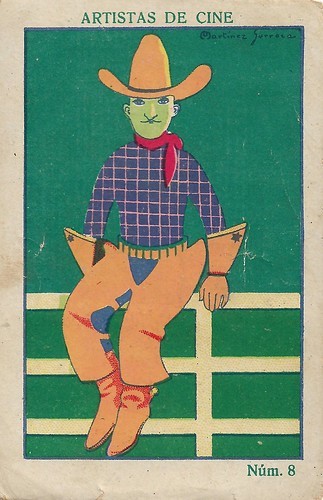
Spanish collectors card by Chocolates Amatller, Barcelona, in the 'Artistas de cine' series, no. 8: Tom Mix . Image: Martinez Surroca.
American film actor Tom Mix (1880-1940) was the star of many early Westerns between 1909 and 1935. Mix appeared in 291 films, all but nine of which were silent movies. He was Hollywood's first Western megastar and helped to define the genre for all cowboy actors who followed.
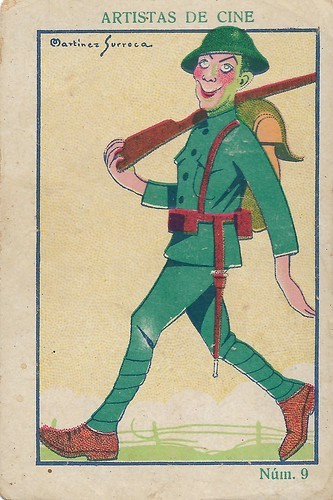
Spanish collectors card by Chocolates Amatller, Barcelona, in the 'Artistas de cine' series, no. 9: Karl Dane. Image: Martinez Surroca.
Danish-American comedian Karl Dane (1886-1934) became a star with his part as Slim The Big Parade (King Vidor1925), one of the most successful Hollywood films of the silent era. After signing with MGM in 1926, he appeared in supporting roles in several popular silent films before teaming up with George K. Arthur to form the successful comedy duo Dane & Arthur. They appeared in a number of silent, short comedy films and toured the vaudeville circuit. By 1930, Dane was relegated to less prominent roles, often with little to no dialogue. Later that year, MGM terminated his contract. Broke and despondent, he died of a self-inflicted gunshot wound in April 1934.
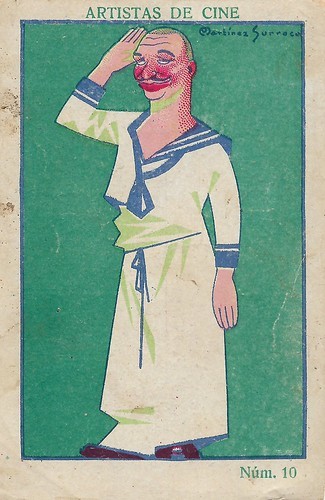
Spanish collectors card by Chocolates Amatller, Barcelona, in the 'Artistas de cine' series, no. 10: Wallace Beery . Image: Martinez Surroca.
American actor Wallace Beery (1885-1949) is best known for his portrayal of Bill in Min and Bill opposite Marie Dressler, as Long John Silver in Treasure Island, as Pancho Villa in Viva Villa!, and his titular role in The Champ, for which he won the Academy Award for Best Actor. Beery appeared in some 250 films in a 36-year career. He was the brother of actor Noah Beery, Sr. and uncle of actor Noah Beery, Jr.
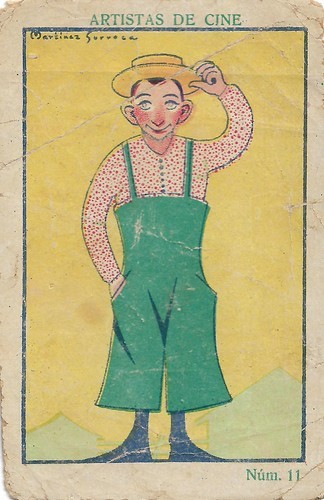
Spanish collectors card by Chocolates Amatller, Barcelona, in the 'Artistas de cine' series, no. 11: Larry Semon. Image: Martinez Surroca.
Lawrence 'Larry' Semon (1889-1928) was an American actor, director, producer, and screenwriter during the silent film era. In his day, Semon was considered a major film comedian, but he is now remembered mainly for working with both Stan Laurel and Oliver Hardy before they started working together. He is also sometimes noted for directing (as well as appearing in) the silent film The Wizard of Oz (1925), which had a slight influence on the better-known sound version The Wizard of Oz (1939).
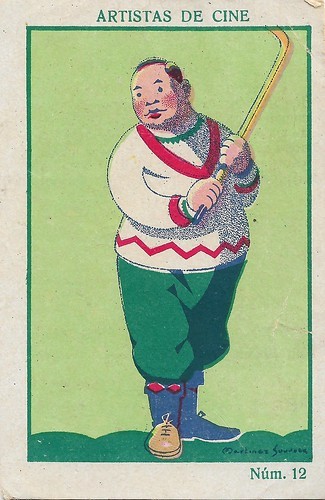
Spanish collectors card by Chocolates Amatller, Barcelona, in the 'Artistas de cine' series, no. 12: Walter Hiers. Image: Martinez Surroca.
Walter Hiers (1893-1933) was an American actor of the silent cinema.
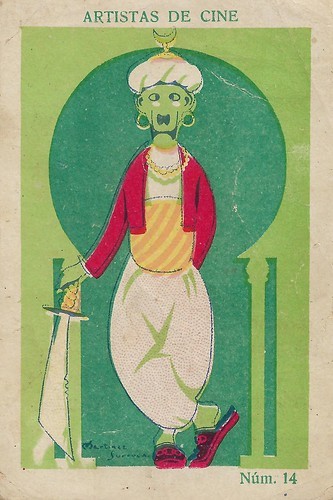
Spanish collectors card by Chocolates Amatller, Barcelona, in the 'Artistas de cine' series, no. 14: Ben Turpin. Image: Martinez Surroca.
Cross-eyed silent comedian Ben Turpin (1869-1940) was not born that way. Supposedly his right eye slipped out of alignment while playing the role of the similarly afflicted Happy Hooligan in vaudeville and it never adjusted. Ironically, it was this disability that would enhance his comic value and make him a top name in the silent film era. Turpin's true forte was impersonating the most dashingly romantic and sophisticated stars of the day and turning them into clumsy oafs. He also invented a Hollywood tradition by being the first actor to receive a pie in his face.
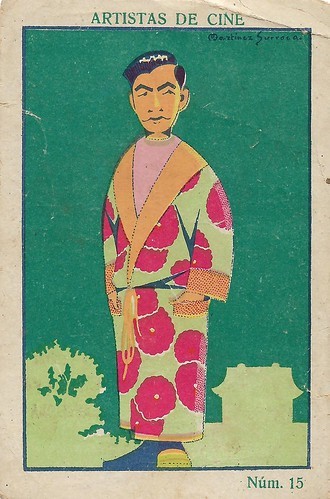
Spanish collectors card by Chocolates Amatller, Barcelona, in the 'Artistas de cine' series, no. 15: Sessue Hayakawa . Image: Martinez Surroca.
Sessue Hayakawa (1889–1973) was a Japanese Issei actor who starred in American, Japanese, French, German, and British films. He was the first Asian actor to find stardom in the United States and Europe. His 'broodingly handsome' good looks and typecasting as a sinister villain with sexual dominance made him a heartthrob among American women. Several years before Rudolph Valentino, he was Hollywood's first male sex symbol. During those early years, Hayakawa was as well known and as popular as Charlie Chaplin and Douglas Fairbanks, although today his name is largely unknown to the public.
Martínez Surroca
Fulgencio Martínez Surroca was born in Cieza, Murcia, Spain, in 1902.
From its first issues, he was one of the illustrators who most often published his drawings in the children's magazine Alegría, founded in Terrassa by Magdalena Rossell.
He was an art teacher at the School of Artistic Arts and Crafts of Barcelona. In 1929, the jury of the poster contest of the Barcelona Exhibition recommended the acquisition of the original that bore the number 70, entitled 'Carmen', and which was his work.
This is how this author began his long and personal career in Catalan poster design. A few years later, together with Helios Gómez (1905-1956), Lluís Muntané i Muns (1899-1987) and Joaquim Martí Bas (1910-1966), he founded the Associació de Cartellistes de Catalunya.
Among Martínez Surroca's most outstanding works as a graphic artist are his designs for the Assegurança Obligatòria de Maternitat (1935), for the Maternal Work of the Caixa de Pensions (1934) and, especially, the poster entitled Barcelonins: Compreu les vostres flors a la Rambla. Spring Festivities. April 1934 (1934), for which he won the contest called by Amics de la Rambla.
He is also the author of the poster of the Aurigemma Festivals at the Novedades Theater (1935) and the poster 'Tárrega. IV Provincial Contest of Agricultural Products' (1944), as well as those published in 1937 - at the height of the Civil War - by the Barcelona City Council with the titles 10 mesos de desordre: the one that produced the feixisme and Obeeix l´agent de tràfic: ell vetlla per la teva vida, of which the National Library of Madrid conserves individual copies.
Martínez Surroca was the brother of soccer player Salvador Martínez Surroca (1901-1974), who played for FC Barcelona between 1920 and 1926 and, later, for FC Lleida, CE Manresa and FC Tàrrega. Another brother, Antonio Martínez Surroca (1908-?), was an industrial chemist and trade unionist, and, after the Civil War, he went into exile in the Dominican Republic, Mexico, and Panama.
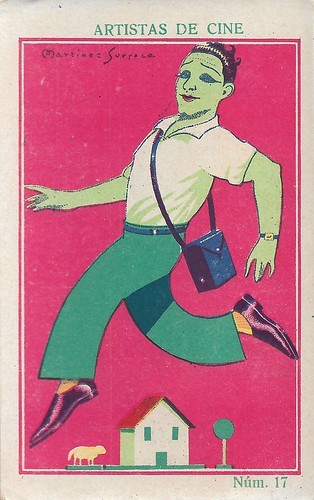
Spanish collectors card by Chocolates Amatller, Barcelona, in the 'Artistas de cine' series, no. 17: Richard Talmadge. Image: Martinez Surroca.
Richard Talmadge, originally Sylvester Metzetti, Ricardo Metzetti, or Sylvester Ricardo Metzett (1892-1981) was a German-born actor, stuntman, and film director.
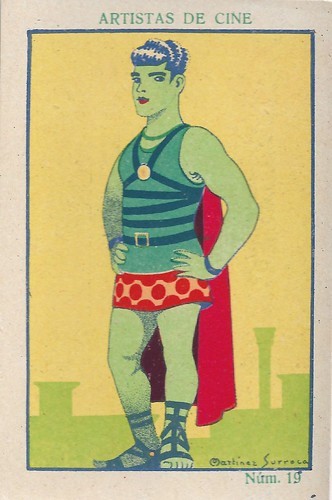
Spanish collectors card by Chocolates Amatller, Barcelona, in the 'Artistas de cine' series, no. 19: Ramon Novarro . Image: Martinez Surroca.
Mexican-American actor Ramon Novarro (1899-1968) was a popular Latin Lover of the 1920s and early 1930s. He was the star of silent Hollywood's biggest epic, Ben-Hur (Fred Niblo, 1925).
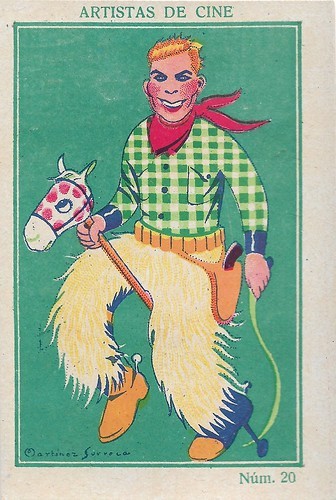
Spanish collectors card by Chocolates Amatller, Barcelona, in the 'Artistas de cine' series, no. 20: Hoot Gibson . Image: Martinez Surroca.
Hoot Gibson (1892-1962) was a rodeo champion and pioneering cowboy star of silent Westerns. With his easy combination of light, breezy, boyish charm comedy and riding abilities, Hoot filled a gap between the austere William S. Hart and the flamboyant Tom Mix and appealed both to adults (especially women) and kids. During the 1920s, he was one of the most popular children's matinée heroes, ranking second only to Mix, and one of Universal's top-paid stars. In his real life, however, he had an expensive love for fast cars, motorcycles, and airplanes and lead a rather painful rags-to-riches-and-back-to-rags career.
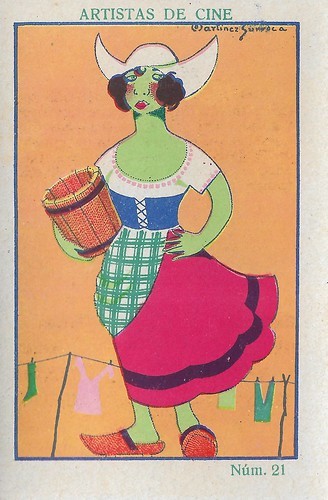
Spanish collectors card by Chocolates Amatller, Barcelona, in the 'Artistas de cine' series, no. 21: Renée Adorée. Image: Martinez Surroca.
French actress Renée Adorée (1898-1933) appeared in Hollywood in several silent films during the 1920s. She is best known as Melisande in the successful war epic The Big Parade (King Vidor, 1925) opposite John Gilbert. She died a few days after her 35th birthday.
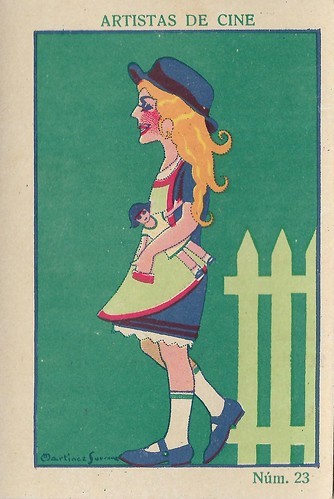
Spanish collectors card by Chocolates Amatller, Barcelona, in the 'Artistas de cine' series, no. 23: Mary Pickford . Image: Martinez Surroca.
Mary Pickford (1892-1979) was a legendary silent film actress and was known as 'America’s sweetheart.' She was the co-founder of United Artists and helped establish the AMPAS (Academy of Motion Pictures and Sciences).
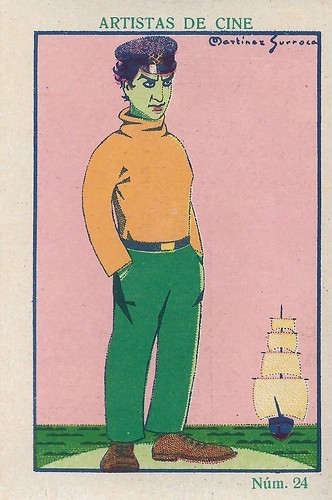
Spanish collectors card by Chocolates Amatller, Barcelona, in the 'Artistas de cine' series, no. 24: John Barrymore. Image: Martinez Surroca. The picture refers to the 'Moby Dick' adaptation The Sea Beast (Millard Webb, 1926).
John Barrymore (1882-1942) was an American stage and screen actor whose rise to superstardom and subsequent decline is one of the legendary tragedies of Hollywood. A member of the most famous generation of the most famous theatrical family in America, he was also its most acclaimed star. He excelled in high drama, in productions of 'Justice' (1916), 'Richard III' (1920), and 'Hamlet' (1922). After a success as Hamlet in London in 1925, Barrymore left the stage for 14 years and instead focused entirely on films.
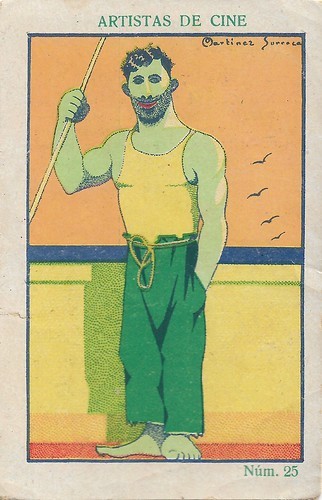
Spanish collectors card by Chocolates Amatller, Barcelona, in the 'Artistas de cine' series, no. 25: George O'Brien. Image: Martinez Surroca.
Athletic American actor George O'Brien (1899-1985) was a handsome American leading man of classic silent films, like John Ford's The Iron Horse (1924) and F. W. Murnau's Sunrise (1927). He became a different kind of star as a cowboy in B-Westerns during the sound era.
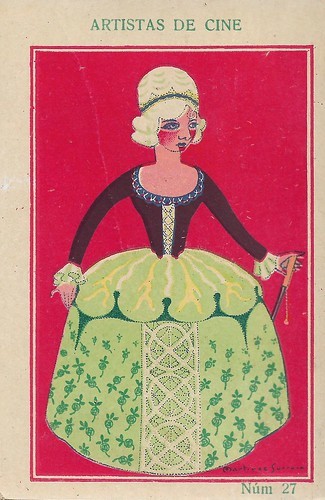
Spanish collectors card by Chocolates Amatller, Barcelona, in the 'Artistas de cine' series, no. 27: Alice Terry . Image: Martinez Surroca.
Alice Terry (1900–1987) was an American film actress and director, who appeared in almost 40 films between 1916 and 1933. Though a brunette, Terry's trademark look was her blonde hair, for which she wore wigs from 1920 onwards. Her most acclaimed role is the leading lady in The Four Horsemen of the Apocalypse (Rex Ingram, 1921) starring Rudolph Valentino. Rex Ingram, who married her in 1921, would shoot her in many of his films and often paired her to Ramon Novarro. Terry proved also in films without her husband’s direction she was a legitimate star. In 1923 the couple moved to the French Riviera, where they set up a small studio in Nice and made several films on location in North Africa, Spain, and Italy.
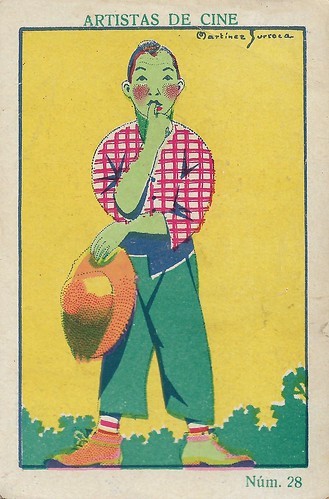
Spanish collectors card by Chocolates Amatller, Barcelona, in the 'Artistas de cine' series, no. 28: Charles Ray. Image: Martinez Surroca.
Charles Ray (1891-1943) was an American actor, scriptwriter, and director of the silent screen, who knew a parabole from rags to riches and back again. He worked for Paramount, his own company, United Artists and MGM. In the late 1910s and early 1920s, he was a very popular actor and one of Hollywood's best-paid stars.
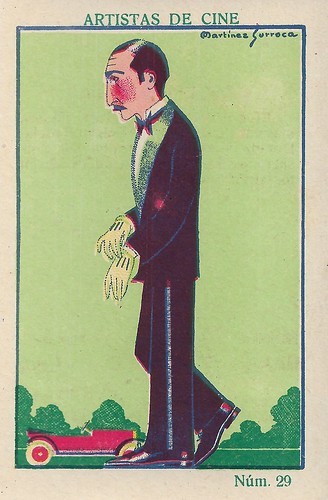
Spanish collectors card by Chocolates Amatller, Barcelona, in the 'Artistas de cine' series, no. 29: Adolphe Menjou . Image: Martinez Surroca.
Suave and debonair American actor Adolphe Menjou (1890-1963) with his trademark waxy black moustache was one of Hollywood's most distinguished stars and one of America's 'Best Dressed Men'. He started as a matinée idol in the silent cinema in such classics as Ernst Lubitsch's The Marriage Circle (1924). His sound films included Morocco (1931) with Marlene Dietrich and Gary Cooper, A Star is Born (1937), and Stanley Kubrick's Paths of Glory (1957) with Kirk Douglas. In 1931, he was nominated for an Oscar for The Front Page (1931).
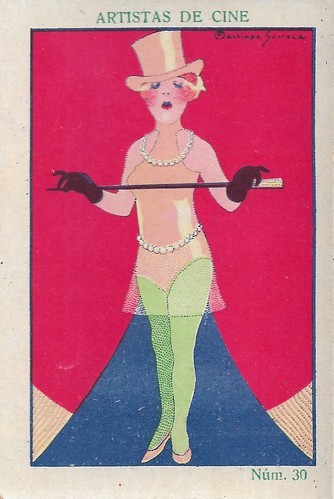
Spanish collectors card by Chocolates Amatller, Barcelona, in the 'Artistas de cine' series, no. 30: Mae Murray . Image: Martinez Surroca.
American actress and dancer Mae Murray (1885-1965) had her breakthrough on Broadway at the Ziegfeld Follies. Her film debut was in To Have and to Hold (1916). Murray became one of the biggest stars of Universal, often directed by her then-husband, Robert Z. Leonard. At the height of her career, she decided to found her own company with director John Stahl. While the films were successful, critics didn’t like them, because of her exaggerated emotions and her costumes. In the early 1920s, Murray started acting at Metro (later MGM). Murray’s most famous role was that in Erich Von Stroheim’s The Merry Widow (1925), co-starring John Gilbert.

Spanish collectors card by Chocolates Amatller, Barcelona, in the 'Artistas de cine' series, no. 32: William S. Hart . Image: Martinez Surroca.
William S. (Surrey) Hart (1864–1946) was an American silent film actor, screenwriter, director, and producer. He entered films in 1914 where, after playing supporting roles in two short films, he achieved stardom as the lead in The Bargain (Reginald Barker, 1914), his first Western. He became the foremost Western star of the silent era who played characters with honor and integrity. Hart was particularly interested in making realistic Westerns, and his films are noted for their authentic costumes and props. Hart also had an extraordinary acting ability, honed on Shakespearean theatre stages in the United States and England.
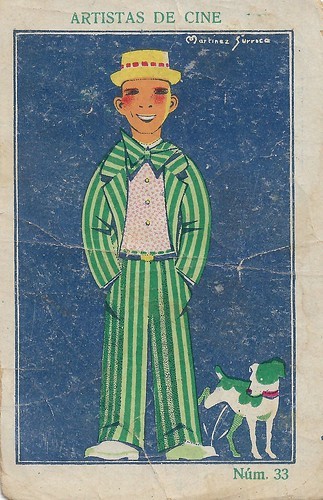
Spanish collectors card by Chocolates Amatller, Barcelona, in the 'Artistas de cine' series, no. 33: Bobby Vernon. Image: Martinez Surroca.
Bobby Vernon, born Sylvion de Jardin (1897-1939) was an American comedic actor in silent films. He later became a writer and comedy supervisor at Paramount for W. C. Fields and Bing Crosby, when the sound era arrived. Blue-eyed with medium brown hair, he stood five feet and two-and-a-half inches, making him perfect for juvenile comedy roles. His comedies were popular with children.
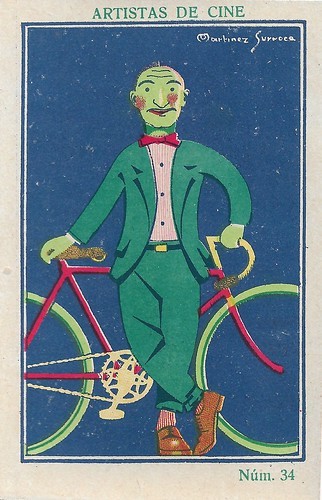
Spanish collectors card by Chocolates Amatller, Barcelona, in the 'Artistas de cine' series, no. 34: Biscot . Image: Martinez Surroca. This picture refers to Le roi de la pédale (Maurice Champreux, 1925).
Georges Biscot (1886-1945) was a popular French music-hall and revue singer and actor, who also knew a career in the French silent and sound cinema.
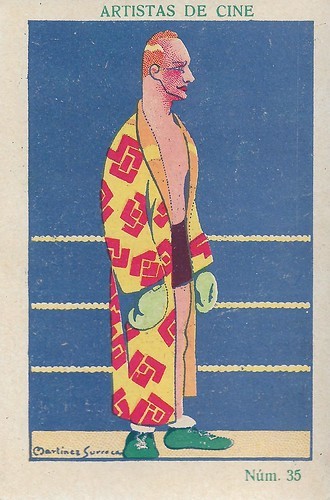
Spanish collectors card by Chocolates Amatller, Barcelona, in the 'Artistas de cine' series, no. 35: Reginald Denny . Image: Martinez Surroca.
English stage, film, and television actor Reginald Denny (1891-1967) was also an aviator and a pioneer in the field of radio-controlled, pilotless aviation. He appeared in more than 200 films, both in Great-Britain and in the United States, first as a lead in silent films and later as a character actor in sound films and TV productions.
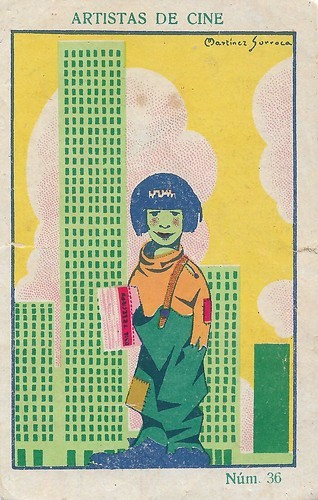
Spanish collectors card by Chocolates Amatller, Barcelona, in the 'Artistas de cine' series, no. 36: Jackie Coogan . Image: Martinez Surroca.
American actor John Leslie 'Jackie' Coogan (1914-1984) began as a child actor in silent films. He was Charlie Chaplin's irascible sidekick in The Kid (Charles Chaplin, 1921) and played the title role in Oliver Twist (Frank Lloyd, 1922). Many years later, he became known as Uncle Fester in the TV series The Addams Family (1964-1966). In the interim, he sued his mother and stepfather over his squandered film earnings ($48 million to $65 million adjusted for 2012 dollars) and provoked California to enact the first known legal protection for the earnings of child performers, widely known as 'the Coogan Act'.
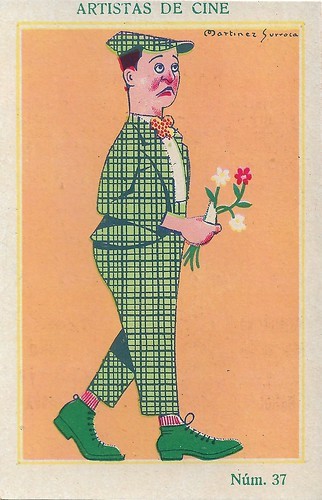
Spanish collectors card by Chocolates Amatller, Barcelona, in the 'Artistas de cine' series, no. 37: Lloyd Hamilton. Image: Martinez Surroca.
Lloyd Vernon Hamilton (1891-1935) was an American film comedian, best remembered for his work in the silent era.
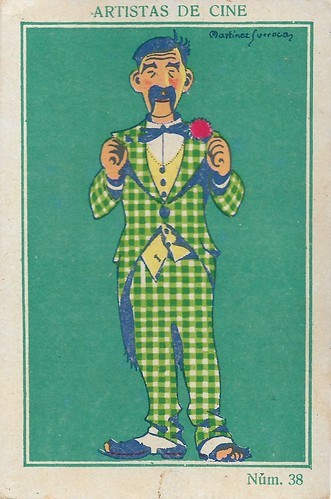
Spanish collectors card by Chocolates Amatller, Barcelona, in the 'Artistas de cine' series, no. 38: Snub Pollard. Image: Martinez Surroca.
Australian-born comedian Snub Pollard (1889-1962) with his walrus moustache was one of the well-known faces of the Hal Roach company during the 1910s.
Sources: Tebeosfera .

Spanish collectors card by Chocolates Amatller, Barcelona, in the 'Artistas de cine' series, no. 1: Greta Garbo . Image: Martinez Surroca.
Swedish Greta Garbo (1905-1990) was one of the greatest and most glamorous film stars ever produced by the Hollywood studio system. She was part of the Golden Age of the silent cinema of the 1920s and was one of the few actors who made a glorious transition to the talkies. She started her career in the European cinema and would always stay more popular in Europe than in the USA.

Spanish collectors card by Chocolates Amatller, Barcelona, in the 'Artistas de cine' series, no. 3: Douglas Fairbanks . Image: Martinez Surroca.
American actor Douglas Fairbanks (1883-1939) was best known for his swashbuckling roles in silent films such as The Mark of Zorro (1920), Robin Hood (1922), and The Thief of Bagdad (1924), but spent the early part of his career making comedies. Fairbanks was a founding member of United Artists and of The Motion Picture Academy. He hosted the first Oscars Ceremony in 1929. With his marriage to Mary Pickford in 1920, the couple became Hollywood royalty, and Fairbanks was referred to as The King of Hollywood'', but his career rapidly declined with the advent of the 'talkies. His final film was made in Great Britain, The Private Life of Don Juan (1934).

Spanish collectors card by Chocolates Amatller, Barcelona, in the 'Artistas de cine' series, no. 5: Norman Kerry. Image: Martinez Surroca.
Norman Kerry (1894–1956) was an American actor of the silent era, who peaked in the Lon Chaney films The Hunchback of the Notre Dame (1923), The Phantom of the Opera (1925), and The Unknown (1927).

Spanish collectors card by Chocolates Amatller, Barcelona, in the 'Artistas de cine' series, no. 7: John Gilbert . Image: Martinez Surroca.
American actor, screenwriter, and director John Gilbert (1899-1936) rose to fame during the silent film era and became a popular leading man known as 'The Great Lover'.

Spanish collectors card by Chocolates Amatller, Barcelona, in the 'Artistas de cine' series, no. 8: Tom Mix . Image: Martinez Surroca.
American film actor Tom Mix (1880-1940) was the star of many early Westerns between 1909 and 1935. Mix appeared in 291 films, all but nine of which were silent movies. He was Hollywood's first Western megastar and helped to define the genre for all cowboy actors who followed.

Spanish collectors card by Chocolates Amatller, Barcelona, in the 'Artistas de cine' series, no. 9: Karl Dane. Image: Martinez Surroca.
Danish-American comedian Karl Dane (1886-1934) became a star with his part as Slim The Big Parade (King Vidor1925), one of the most successful Hollywood films of the silent era. After signing with MGM in 1926, he appeared in supporting roles in several popular silent films before teaming up with George K. Arthur to form the successful comedy duo Dane & Arthur. They appeared in a number of silent, short comedy films and toured the vaudeville circuit. By 1930, Dane was relegated to less prominent roles, often with little to no dialogue. Later that year, MGM terminated his contract. Broke and despondent, he died of a self-inflicted gunshot wound in April 1934.

Spanish collectors card by Chocolates Amatller, Barcelona, in the 'Artistas de cine' series, no. 10: Wallace Beery . Image: Martinez Surroca.
American actor Wallace Beery (1885-1949) is best known for his portrayal of Bill in Min and Bill opposite Marie Dressler, as Long John Silver in Treasure Island, as Pancho Villa in Viva Villa!, and his titular role in The Champ, for which he won the Academy Award for Best Actor. Beery appeared in some 250 films in a 36-year career. He was the brother of actor Noah Beery, Sr. and uncle of actor Noah Beery, Jr.

Spanish collectors card by Chocolates Amatller, Barcelona, in the 'Artistas de cine' series, no. 11: Larry Semon. Image: Martinez Surroca.
Lawrence 'Larry' Semon (1889-1928) was an American actor, director, producer, and screenwriter during the silent film era. In his day, Semon was considered a major film comedian, but he is now remembered mainly for working with both Stan Laurel and Oliver Hardy before they started working together. He is also sometimes noted for directing (as well as appearing in) the silent film The Wizard of Oz (1925), which had a slight influence on the better-known sound version The Wizard of Oz (1939).

Spanish collectors card by Chocolates Amatller, Barcelona, in the 'Artistas de cine' series, no. 12: Walter Hiers. Image: Martinez Surroca.
Walter Hiers (1893-1933) was an American actor of the silent cinema.

Spanish collectors card by Chocolates Amatller, Barcelona, in the 'Artistas de cine' series, no. 14: Ben Turpin. Image: Martinez Surroca.
Cross-eyed silent comedian Ben Turpin (1869-1940) was not born that way. Supposedly his right eye slipped out of alignment while playing the role of the similarly afflicted Happy Hooligan in vaudeville and it never adjusted. Ironically, it was this disability that would enhance his comic value and make him a top name in the silent film era. Turpin's true forte was impersonating the most dashingly romantic and sophisticated stars of the day and turning them into clumsy oafs. He also invented a Hollywood tradition by being the first actor to receive a pie in his face.

Spanish collectors card by Chocolates Amatller, Barcelona, in the 'Artistas de cine' series, no. 15: Sessue Hayakawa . Image: Martinez Surroca.
Sessue Hayakawa (1889–1973) was a Japanese Issei actor who starred in American, Japanese, French, German, and British films. He was the first Asian actor to find stardom in the United States and Europe. His 'broodingly handsome' good looks and typecasting as a sinister villain with sexual dominance made him a heartthrob among American women. Several years before Rudolph Valentino, he was Hollywood's first male sex symbol. During those early years, Hayakawa was as well known and as popular as Charlie Chaplin and Douglas Fairbanks, although today his name is largely unknown to the public.
Martínez Surroca
Fulgencio Martínez Surroca was born in Cieza, Murcia, Spain, in 1902.
From its first issues, he was one of the illustrators who most often published his drawings in the children's magazine Alegría, founded in Terrassa by Magdalena Rossell.
He was an art teacher at the School of Artistic Arts and Crafts of Barcelona. In 1929, the jury of the poster contest of the Barcelona Exhibition recommended the acquisition of the original that bore the number 70, entitled 'Carmen', and which was his work.
This is how this author began his long and personal career in Catalan poster design. A few years later, together with Helios Gómez (1905-1956), Lluís Muntané i Muns (1899-1987) and Joaquim Martí Bas (1910-1966), he founded the Associació de Cartellistes de Catalunya.
Among Martínez Surroca's most outstanding works as a graphic artist are his designs for the Assegurança Obligatòria de Maternitat (1935), for the Maternal Work of the Caixa de Pensions (1934) and, especially, the poster entitled Barcelonins: Compreu les vostres flors a la Rambla. Spring Festivities. April 1934 (1934), for which he won the contest called by Amics de la Rambla.
He is also the author of the poster of the Aurigemma Festivals at the Novedades Theater (1935) and the poster 'Tárrega. IV Provincial Contest of Agricultural Products' (1944), as well as those published in 1937 - at the height of the Civil War - by the Barcelona City Council with the titles 10 mesos de desordre: the one that produced the feixisme and Obeeix l´agent de tràfic: ell vetlla per la teva vida, of which the National Library of Madrid conserves individual copies.
Martínez Surroca was the brother of soccer player Salvador Martínez Surroca (1901-1974), who played for FC Barcelona between 1920 and 1926 and, later, for FC Lleida, CE Manresa and FC Tàrrega. Another brother, Antonio Martínez Surroca (1908-?), was an industrial chemist and trade unionist, and, after the Civil War, he went into exile in the Dominican Republic, Mexico, and Panama.

Spanish collectors card by Chocolates Amatller, Barcelona, in the 'Artistas de cine' series, no. 17: Richard Talmadge. Image: Martinez Surroca.
Richard Talmadge, originally Sylvester Metzetti, Ricardo Metzetti, or Sylvester Ricardo Metzett (1892-1981) was a German-born actor, stuntman, and film director.

Spanish collectors card by Chocolates Amatller, Barcelona, in the 'Artistas de cine' series, no. 19: Ramon Novarro . Image: Martinez Surroca.
Mexican-American actor Ramon Novarro (1899-1968) was a popular Latin Lover of the 1920s and early 1930s. He was the star of silent Hollywood's biggest epic, Ben-Hur (Fred Niblo, 1925).

Spanish collectors card by Chocolates Amatller, Barcelona, in the 'Artistas de cine' series, no. 20: Hoot Gibson . Image: Martinez Surroca.
Hoot Gibson (1892-1962) was a rodeo champion and pioneering cowboy star of silent Westerns. With his easy combination of light, breezy, boyish charm comedy and riding abilities, Hoot filled a gap between the austere William S. Hart and the flamboyant Tom Mix and appealed both to adults (especially women) and kids. During the 1920s, he was one of the most popular children's matinée heroes, ranking second only to Mix, and one of Universal's top-paid stars. In his real life, however, he had an expensive love for fast cars, motorcycles, and airplanes and lead a rather painful rags-to-riches-and-back-to-rags career.

Spanish collectors card by Chocolates Amatller, Barcelona, in the 'Artistas de cine' series, no. 21: Renée Adorée. Image: Martinez Surroca.
French actress Renée Adorée (1898-1933) appeared in Hollywood in several silent films during the 1920s. She is best known as Melisande in the successful war epic The Big Parade (King Vidor, 1925) opposite John Gilbert. She died a few days after her 35th birthday.

Spanish collectors card by Chocolates Amatller, Barcelona, in the 'Artistas de cine' series, no. 23: Mary Pickford . Image: Martinez Surroca.
Mary Pickford (1892-1979) was a legendary silent film actress and was known as 'America’s sweetheart.' She was the co-founder of United Artists and helped establish the AMPAS (Academy of Motion Pictures and Sciences).

Spanish collectors card by Chocolates Amatller, Barcelona, in the 'Artistas de cine' series, no. 24: John Barrymore. Image: Martinez Surroca. The picture refers to the 'Moby Dick' adaptation The Sea Beast (Millard Webb, 1926).
John Barrymore (1882-1942) was an American stage and screen actor whose rise to superstardom and subsequent decline is one of the legendary tragedies of Hollywood. A member of the most famous generation of the most famous theatrical family in America, he was also its most acclaimed star. He excelled in high drama, in productions of 'Justice' (1916), 'Richard III' (1920), and 'Hamlet' (1922). After a success as Hamlet in London in 1925, Barrymore left the stage for 14 years and instead focused entirely on films.

Spanish collectors card by Chocolates Amatller, Barcelona, in the 'Artistas de cine' series, no. 25: George O'Brien. Image: Martinez Surroca.
Athletic American actor George O'Brien (1899-1985) was a handsome American leading man of classic silent films, like John Ford's The Iron Horse (1924) and F. W. Murnau's Sunrise (1927). He became a different kind of star as a cowboy in B-Westerns during the sound era.

Spanish collectors card by Chocolates Amatller, Barcelona, in the 'Artistas de cine' series, no. 27: Alice Terry . Image: Martinez Surroca.
Alice Terry (1900–1987) was an American film actress and director, who appeared in almost 40 films between 1916 and 1933. Though a brunette, Terry's trademark look was her blonde hair, for which she wore wigs from 1920 onwards. Her most acclaimed role is the leading lady in The Four Horsemen of the Apocalypse (Rex Ingram, 1921) starring Rudolph Valentino. Rex Ingram, who married her in 1921, would shoot her in many of his films and often paired her to Ramon Novarro. Terry proved also in films without her husband’s direction she was a legitimate star. In 1923 the couple moved to the French Riviera, where they set up a small studio in Nice and made several films on location in North Africa, Spain, and Italy.

Spanish collectors card by Chocolates Amatller, Barcelona, in the 'Artistas de cine' series, no. 28: Charles Ray. Image: Martinez Surroca.
Charles Ray (1891-1943) was an American actor, scriptwriter, and director of the silent screen, who knew a parabole from rags to riches and back again. He worked for Paramount, his own company, United Artists and MGM. In the late 1910s and early 1920s, he was a very popular actor and one of Hollywood's best-paid stars.

Spanish collectors card by Chocolates Amatller, Barcelona, in the 'Artistas de cine' series, no. 29: Adolphe Menjou . Image: Martinez Surroca.
Suave and debonair American actor Adolphe Menjou (1890-1963) with his trademark waxy black moustache was one of Hollywood's most distinguished stars and one of America's 'Best Dressed Men'. He started as a matinée idol in the silent cinema in such classics as Ernst Lubitsch's The Marriage Circle (1924). His sound films included Morocco (1931) with Marlene Dietrich and Gary Cooper, A Star is Born (1937), and Stanley Kubrick's Paths of Glory (1957) with Kirk Douglas. In 1931, he was nominated for an Oscar for The Front Page (1931).

Spanish collectors card by Chocolates Amatller, Barcelona, in the 'Artistas de cine' series, no. 30: Mae Murray . Image: Martinez Surroca.
American actress and dancer Mae Murray (1885-1965) had her breakthrough on Broadway at the Ziegfeld Follies. Her film debut was in To Have and to Hold (1916). Murray became one of the biggest stars of Universal, often directed by her then-husband, Robert Z. Leonard. At the height of her career, she decided to found her own company with director John Stahl. While the films were successful, critics didn’t like them, because of her exaggerated emotions and her costumes. In the early 1920s, Murray started acting at Metro (later MGM). Murray’s most famous role was that in Erich Von Stroheim’s The Merry Widow (1925), co-starring John Gilbert.

Spanish collectors card by Chocolates Amatller, Barcelona, in the 'Artistas de cine' series, no. 32: William S. Hart . Image: Martinez Surroca.
William S. (Surrey) Hart (1864–1946) was an American silent film actor, screenwriter, director, and producer. He entered films in 1914 where, after playing supporting roles in two short films, he achieved stardom as the lead in The Bargain (Reginald Barker, 1914), his first Western. He became the foremost Western star of the silent era who played characters with honor and integrity. Hart was particularly interested in making realistic Westerns, and his films are noted for their authentic costumes and props. Hart also had an extraordinary acting ability, honed on Shakespearean theatre stages in the United States and England.

Spanish collectors card by Chocolates Amatller, Barcelona, in the 'Artistas de cine' series, no. 33: Bobby Vernon. Image: Martinez Surroca.
Bobby Vernon, born Sylvion de Jardin (1897-1939) was an American comedic actor in silent films. He later became a writer and comedy supervisor at Paramount for W. C. Fields and Bing Crosby, when the sound era arrived. Blue-eyed with medium brown hair, he stood five feet and two-and-a-half inches, making him perfect for juvenile comedy roles. His comedies were popular with children.

Spanish collectors card by Chocolates Amatller, Barcelona, in the 'Artistas de cine' series, no. 34: Biscot . Image: Martinez Surroca. This picture refers to Le roi de la pédale (Maurice Champreux, 1925).
Georges Biscot (1886-1945) was a popular French music-hall and revue singer and actor, who also knew a career in the French silent and sound cinema.

Spanish collectors card by Chocolates Amatller, Barcelona, in the 'Artistas de cine' series, no. 35: Reginald Denny . Image: Martinez Surroca.
English stage, film, and television actor Reginald Denny (1891-1967) was also an aviator and a pioneer in the field of radio-controlled, pilotless aviation. He appeared in more than 200 films, both in Great-Britain and in the United States, first as a lead in silent films and later as a character actor in sound films and TV productions.

Spanish collectors card by Chocolates Amatller, Barcelona, in the 'Artistas de cine' series, no. 36: Jackie Coogan . Image: Martinez Surroca.
American actor John Leslie 'Jackie' Coogan (1914-1984) began as a child actor in silent films. He was Charlie Chaplin's irascible sidekick in The Kid (Charles Chaplin, 1921) and played the title role in Oliver Twist (Frank Lloyd, 1922). Many years later, he became known as Uncle Fester in the TV series The Addams Family (1964-1966). In the interim, he sued his mother and stepfather over his squandered film earnings ($48 million to $65 million adjusted for 2012 dollars) and provoked California to enact the first known legal protection for the earnings of child performers, widely known as 'the Coogan Act'.

Spanish collectors card by Chocolates Amatller, Barcelona, in the 'Artistas de cine' series, no. 37: Lloyd Hamilton. Image: Martinez Surroca.
Lloyd Vernon Hamilton (1891-1935) was an American film comedian, best remembered for his work in the silent era.

Spanish collectors card by Chocolates Amatller, Barcelona, in the 'Artistas de cine' series, no. 38: Snub Pollard. Image: Martinez Surroca.
Australian-born comedian Snub Pollard (1889-1962) with his walrus moustache was one of the well-known faces of the Hal Roach company during the 1910s.
Sources: Tebeosfera .
Published on March 22, 2021 23:00
March 21, 2021
Lauren Bacall
At 19, legendary film actress Lauren Bacall (1924-2014) became an overnight star as 'Slim' opposite Humphrey Bogart in her memorable film debut in Howard Hawks' To Have and Have Not (1942). She became known for her distinctive husky voice and glamorous looks in Film Noirs such as The Big Sleep (1946), Dark Passage (1947), and Key Largo (1948), and the delicious comedy How to Marry a Millionaire (1953) with Marilyn Monroe. After a 50-year career, she received a Golden Globe and her first Oscar nomination for supporting actress for her role as Barbra Streisand’s mother in The Mirror Has Two Faces (1997).
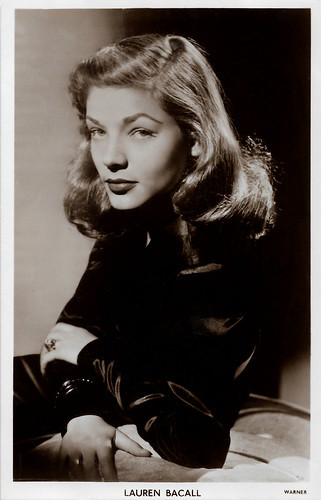
British postcard in the Picturegoer Series, London, no. W. 198. Photo: Warner Bros.
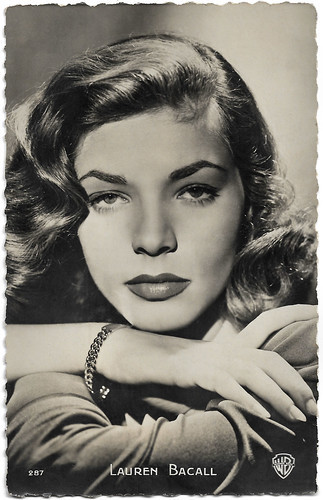
French postcard by Editions P.I., no. 287. Photo: Warner Bros.
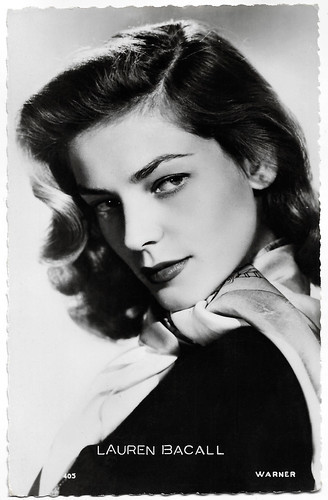
French postcard by Editions P.I., Paris, no. 405. Photo: Warner Bros, 1953.
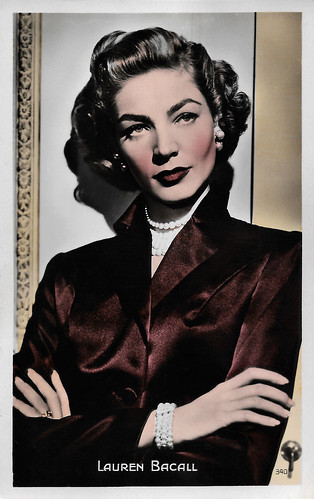
French postcard by Editions P.I., Paris, no. 340.
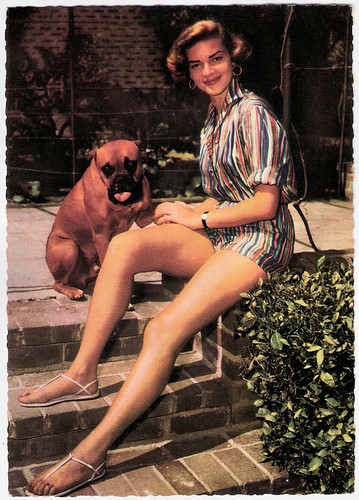
West-German postcard. Photo: 20th Century Fox.
Spotted by 'Slim' Hawks
Lauren Bacall was born Betty Joan Perske in 1924 in The Bronx in New York City. She was the daughter of Natalie Weinstein-Bacal, a Romanian Jewish immigrant, and William Perske, who was born in New Jersey, to Polish Jewish parents.
Her family was middle-class, with her father working as a salesman and her mother as a secretary. They divorced when she was five and she rarely saw her father after that.
Following a study at the American Academy of Dramatic Arts, she was crowned Miss Greenwich Village in 1942. Bacall gained nationwide attention by posing for a 1943 cover of Harper's Bazaar magazine.
This photo was spotted by Nancy Gross "Slim" Hawks, the wife of film director Howard Hawks, and prompted Hawks to put her under personal contract. He wanted to "create" a star from fresh, raw material and changed her name to Lauren Bacall. For her screen debut, Hawks cast Bacall as Marie Browning opposite Humphrey Bogart in the thriller To Have and Have Not (Howard Hawks, 1944).
Hal Erickson at AllMovie: "The young actress was so nervous that she walked around with her chin pressed against her collarbone to keep from shaking. As a result, she had to glance upward every time she spoke, an affectation which came across as sexy and alluring, earning Bacall the nickname 'The Look'. She also spoke in a deep, throaty manner, effectively obscuring the fact that she was only 19-years-old. Thanks to the diligence of Hawks and his crew - and the actress' unique delivery of such lines as "If you want anything, just whistle..." - Bacall found herself lauded as the most sensational newcomer of 1944. She also found herself in love with Humphrey Bogart , whom she subsequently married."
Bogie and Bacall co-starred in three more crime films, The Big Sleep (Howard Hawks, 1946), Dark Passage (Delmer Daves, 1947), and Key Largo (John Huston, 1948), also with Edward G. Robinson , and Lionel Barrymore. These films increased the actress' popularity, but also led critics to suggest that she was incapable of carrying a picture on her own. Bacall's disappointing solo turn opposite Charles Boyer in Confidential Agent (Herman Shumlin, 1945) seemed to confirm this.
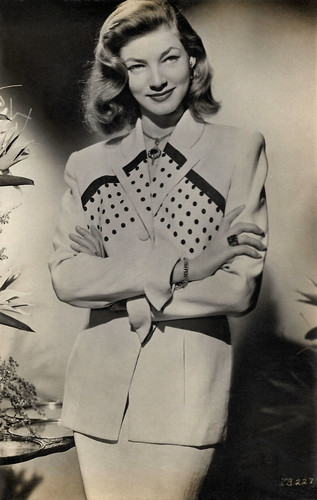
Spanish postcard by JDP, Valencia, no. 2262.
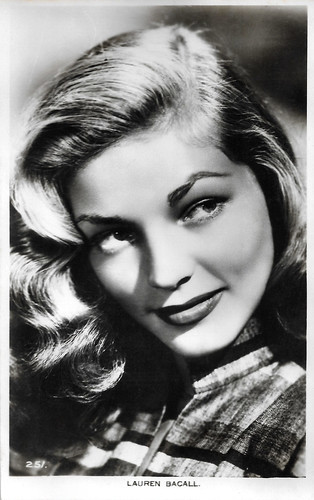
British Real Photograph postcard, no. 251.
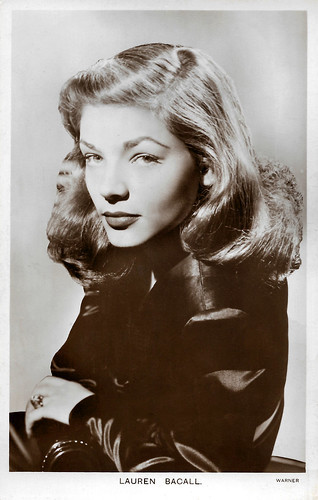
British postcard in the Picturegoer Series, London, no. W 198. Photo: Warner.
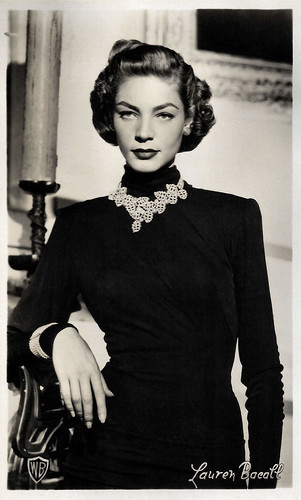
Belgian collectors card by Fotoprim, Brussels, for De Beukelaer, Antwerp, no. A 40. Photo: Warner Bros.
A whistle in his coffin
Lauren Bacall was a quick study and good listener, and in 1950, she starred without her husband in Bright Leaf (Michael Curtiz, 1950), a drama set in 1894 with Gary Cooper .
Before long she was turning in more first-rate performances in such films as Young Man With a Horn (Michael Curtiz, 1950) opposite Kirk Douglas and Doris Day , and the comedy How to Marry a Millionaire (Jean Negulesco, 1953) with Betty Grable and Marilyn Monroe . Her first comedy was a smash hit.
Bogart's death in 1957 after a long and painful bout with throat cancer left Lauren Bacall personally devastated. At the funeral, she put a whistle in his coffin. It was a reference to the famous line she says to him in their first film together To Have and Have Not (1944): "You know how to whistle, don't you? You just put your lips together and blow."
In the tradition of her show-must-go-on husband, she continued to perform to the best of her ability in films such as the sophisticated comedy Designing Woman (Vincente Minnelli, 1957) with Gregory Peck, and the drama The Gift of Love (Jean Negulesco, 1958) opposite Robert Stack. The latter turned out to be a big disappointment.
Denny Jackson at IMDb : "Undaunted, Lauren moved back to New York City and appeared in several Broadway plays to huge critical acclaim. She was enjoying acting before live audiences and the audiences, in turn, enjoyed her fine performances."

Belgian postcard. Photo: Warner Bros. Lauren Bacall and Charles Boyer in Confidential Agent (Herman Shumlin, 1945).
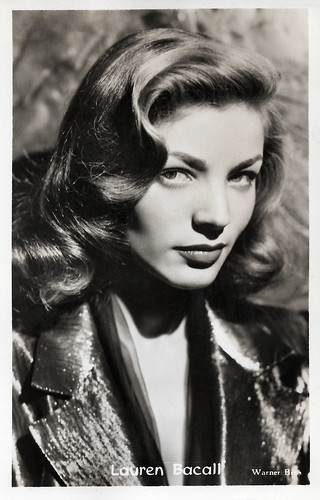
Dutch postcard. Photo: Warner Bros. Publicity still for The Big Sleep (Howard Hawks, 1946).
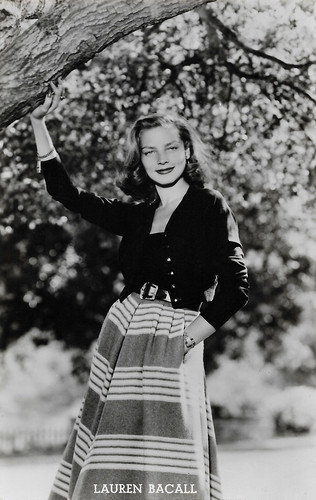
Belgian postcard, no. 381. Photo: Warner Bros.
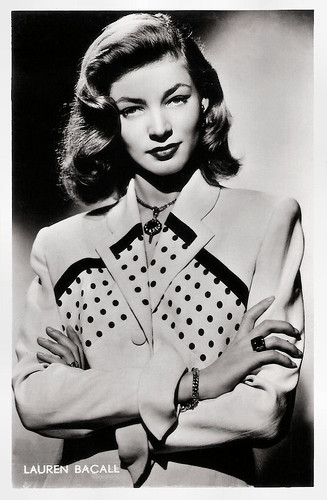
Dutch postcard by J. Sleeding N.V., Amsterdam. Photo: Warner Bros.
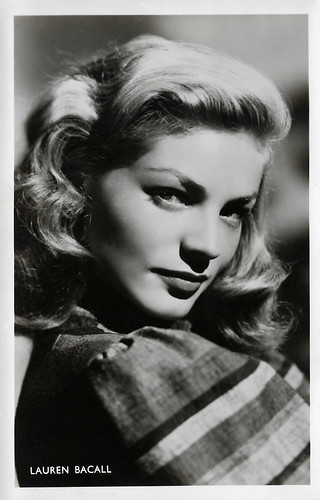
Dutch postcard.
A legendary, outspoken Broadway actress
Lauren Bacall was away from the big screen for five years, but she returned in 1964 to appear in the thriller Shock Treatment (Denis Sanders, 1964) with Stuart Whitman and Carol Lynley , and the comedy Sex and the Single Girl (Richard Quine, 1964) with Tony Curtis, Natalie Wood, and Henry Fonda .
In 1966, Lauren starred in the crime film Harper (Jack Smight, 1966) with Paul Newman and Julie Harris. In the late 1960s, after Bacall's second marriage to another hard-case actor, Jason Robards Jr., she received only a handful of negligible film roles and all but dropped out of filmmaking.
In 1970, Bacall made a triumphant comeback in the stage production 'Applause', a musical adaptation of All About Eve (Joseph L. Mankiewicz, 1950). For her role as grand dame Margo Channing, originally played by Bette Davis in the film version, Bacall won a Tony Award.
Hal Erickson at AllMovie : "Her sultry-vixen persona long in the past, Bacall spent the '70s playing variations on her worldly, resourceful Applause role, sometimes merely being decorative (Murder on the Orient Express, 1974), but most often delivering class-A performances (The Shootist, 1976). After playing the quasi-autobiographical part of a legendary, outspoken Broadway actress in 1981's The Fan, she spent the next ten years portraying Lauren Bacall -- and no one did it better."
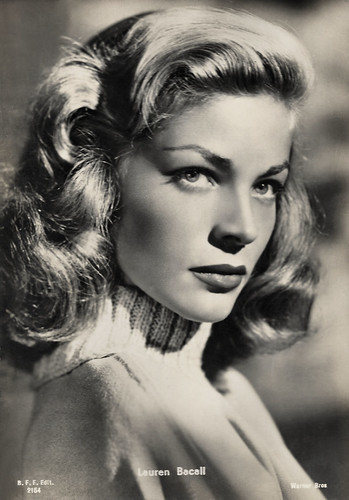
Italian postcard by B.F.F. Edit (Casa Editr. Ballerini & Fratini, Firenze), no. 2154. Photo: Scotty Welbourne, 1946 / Warner Bros.
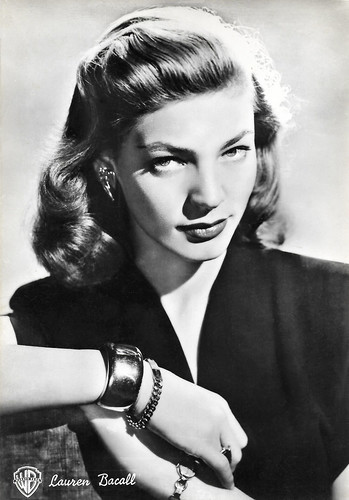
Italian postcard by Bromofoto, Milano, no. 50. Photo: Warner Bros.
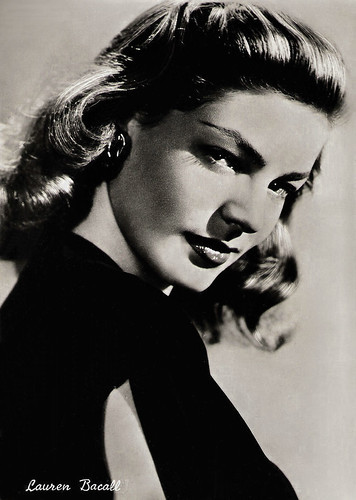
Italian postcard by Bromofoto, Milano, no. 169.
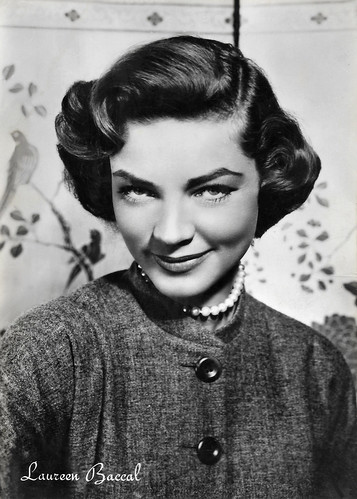
Italian postcard by Rotalfoto, Milano, no. 605.
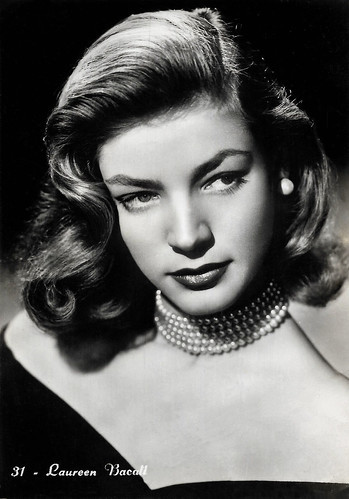
Italian postcard by Turismofoto, no. 31.
Not merely a "professional personality"
Lauren Bacall was away from films again, this time for seven years. In the interim, she again appeared on the stages of Broadway. In 1981, she won her second Tony for 'Woman of the Year', based on the film Woman of the Year (George Stevens, 1942) with Katharine Hepburn .
When she returned, it was for the filming of the Agatha Christie mystery Appointment with Death (Michael Winner, 1988) with Peter Ustinov as Hercule Poirot, and Mr. North (Danny Huston, 1988), starring Anthony Edwards and Robert Mitchum .
Then followed the Stephen King adaptation Misery (Rob Reiner, 1990) and several made-for-television films. In one of these, The Portrait (Arthur Penn, 1993, she and her Designing Woman co-star Gregory Peck played a still-amorous elderly couple. Once more, Bacall proved here that she was a superb actress and not merely a "professional personality".
In 1994, she paid tribute to her first role as 'Slim' in To Have and Have Not with a character called 'Slim Chrysler' in Prêt-à-Porter (Robert Altman, 1994), released to theatres fifty years after the premiere of To Have and Have Not (Howard Hawks, 1944).
During the filming of The Mirror Has Two Faces (Barbra Streisand, 1996), Lauren Bacall traveled to France to accept a special César Award for her lifetime achievement in film. For her role in Mirror, which cast her as Barbra Streisand's mother, Bacall earned a Golden Globe award and an Oscar nomination.
She continued to work on a number of projects into the next decade, including Diamonds (John Asher, 1999), in which she appeared alongside Kirk Douglas , with whom she had last co-starred in the romantic drama Young Man with a Horn (Michael Curtiz, 1950).
In the new century, she worked twice with internationally respected filmmaker Lars von Trier, appearing in his films Dogville (2003) with Nicole Kidman, and Manderlay (2005) with Willem Dafoe. She was in the Nicole Kidman film Birth (Jonathan Glazer, 2004) and appeared in the documentary Cameraman: The Life and Work of Jack Cardiff (Craig McCall, 2010). Bacall won an Honorary Oscar in 2010.
Her autobiography, 'By Myself and Then Some', won a National Book Award in 1980. Lauren Bacall died in 2014 in New York, at age 89. She was the mother of producer Stephen H. Bogart (1949), Leslie Bogart (1952), and actor Sam Robards (1961).
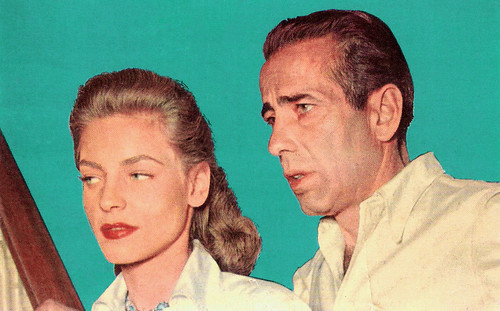
French postcard by Imp. De Marchi Frères, Marseille. With Humphrey Bogart .
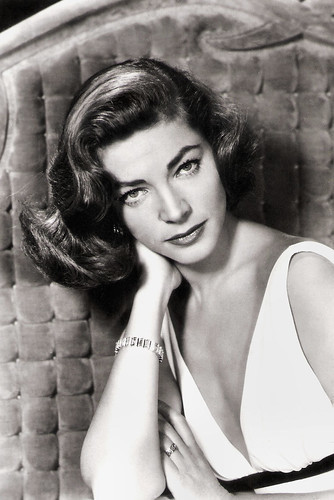
Yugoslavian postcard by ZK, no. 3910.
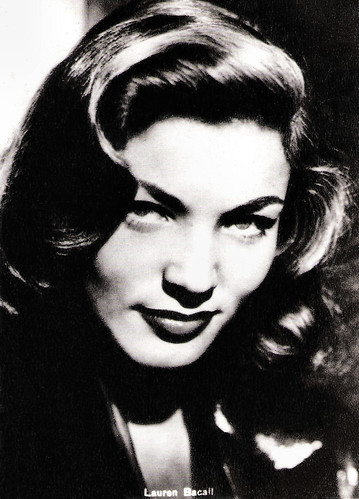
Vintage postcard, no. C 120.
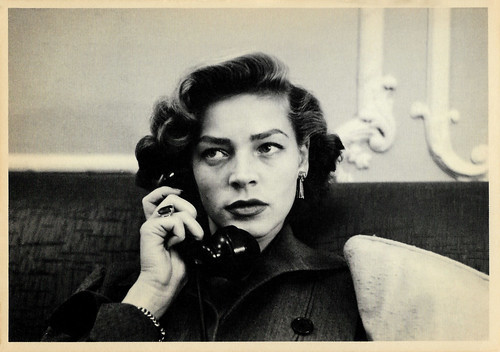
American postcard by Rizzoli International Bookstore, New York, 1984. Photo: Ruth Orkin. Caption: Lauren Bacall at the St. Regis, NYC, 1950.
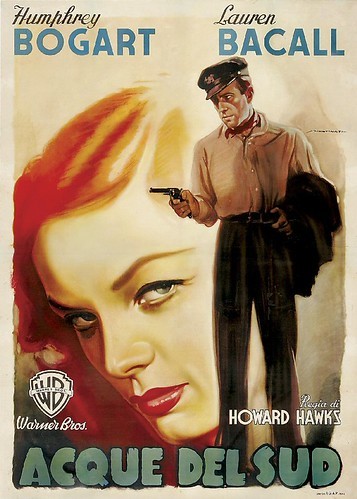
Italian Film poster 'Acque del sud' (To Have and Have Not, 1944), designed by Luigi Martinati. This poster was published on our old blog Truus, Bob and Jan too! say: Hello World (truus-bob.livejournal.com/) with a comment on Luigi Martinati.
Sources: Hal Erickson (AllMovie), (IMDb), Wikipedia, and .

British postcard in the Picturegoer Series, London, no. W. 198. Photo: Warner Bros.

French postcard by Editions P.I., no. 287. Photo: Warner Bros.

French postcard by Editions P.I., Paris, no. 405. Photo: Warner Bros, 1953.

French postcard by Editions P.I., Paris, no. 340.

West-German postcard. Photo: 20th Century Fox.
Spotted by 'Slim' Hawks
Lauren Bacall was born Betty Joan Perske in 1924 in The Bronx in New York City. She was the daughter of Natalie Weinstein-Bacal, a Romanian Jewish immigrant, and William Perske, who was born in New Jersey, to Polish Jewish parents.
Her family was middle-class, with her father working as a salesman and her mother as a secretary. They divorced when she was five and she rarely saw her father after that.
Following a study at the American Academy of Dramatic Arts, she was crowned Miss Greenwich Village in 1942. Bacall gained nationwide attention by posing for a 1943 cover of Harper's Bazaar magazine.
This photo was spotted by Nancy Gross "Slim" Hawks, the wife of film director Howard Hawks, and prompted Hawks to put her under personal contract. He wanted to "create" a star from fresh, raw material and changed her name to Lauren Bacall. For her screen debut, Hawks cast Bacall as Marie Browning opposite Humphrey Bogart in the thriller To Have and Have Not (Howard Hawks, 1944).
Hal Erickson at AllMovie: "The young actress was so nervous that she walked around with her chin pressed against her collarbone to keep from shaking. As a result, she had to glance upward every time she spoke, an affectation which came across as sexy and alluring, earning Bacall the nickname 'The Look'. She also spoke in a deep, throaty manner, effectively obscuring the fact that she was only 19-years-old. Thanks to the diligence of Hawks and his crew - and the actress' unique delivery of such lines as "If you want anything, just whistle..." - Bacall found herself lauded as the most sensational newcomer of 1944. She also found herself in love with Humphrey Bogart , whom she subsequently married."
Bogie and Bacall co-starred in three more crime films, The Big Sleep (Howard Hawks, 1946), Dark Passage (Delmer Daves, 1947), and Key Largo (John Huston, 1948), also with Edward G. Robinson , and Lionel Barrymore. These films increased the actress' popularity, but also led critics to suggest that she was incapable of carrying a picture on her own. Bacall's disappointing solo turn opposite Charles Boyer in Confidential Agent (Herman Shumlin, 1945) seemed to confirm this.

Spanish postcard by JDP, Valencia, no. 2262.

British Real Photograph postcard, no. 251.

British postcard in the Picturegoer Series, London, no. W 198. Photo: Warner.

Belgian collectors card by Fotoprim, Brussels, for De Beukelaer, Antwerp, no. A 40. Photo: Warner Bros.
A whistle in his coffin
Lauren Bacall was a quick study and good listener, and in 1950, she starred without her husband in Bright Leaf (Michael Curtiz, 1950), a drama set in 1894 with Gary Cooper .
Before long she was turning in more first-rate performances in such films as Young Man With a Horn (Michael Curtiz, 1950) opposite Kirk Douglas and Doris Day , and the comedy How to Marry a Millionaire (Jean Negulesco, 1953) with Betty Grable and Marilyn Monroe . Her first comedy was a smash hit.
Bogart's death in 1957 after a long and painful bout with throat cancer left Lauren Bacall personally devastated. At the funeral, she put a whistle in his coffin. It was a reference to the famous line she says to him in their first film together To Have and Have Not (1944): "You know how to whistle, don't you? You just put your lips together and blow."
In the tradition of her show-must-go-on husband, she continued to perform to the best of her ability in films such as the sophisticated comedy Designing Woman (Vincente Minnelli, 1957) with Gregory Peck, and the drama The Gift of Love (Jean Negulesco, 1958) opposite Robert Stack. The latter turned out to be a big disappointment.
Denny Jackson at IMDb : "Undaunted, Lauren moved back to New York City and appeared in several Broadway plays to huge critical acclaim. She was enjoying acting before live audiences and the audiences, in turn, enjoyed her fine performances."

Belgian postcard. Photo: Warner Bros. Lauren Bacall and Charles Boyer in Confidential Agent (Herman Shumlin, 1945).

Dutch postcard. Photo: Warner Bros. Publicity still for The Big Sleep (Howard Hawks, 1946).

Belgian postcard, no. 381. Photo: Warner Bros.

Dutch postcard by J. Sleeding N.V., Amsterdam. Photo: Warner Bros.

Dutch postcard.
A legendary, outspoken Broadway actress
Lauren Bacall was away from the big screen for five years, but she returned in 1964 to appear in the thriller Shock Treatment (Denis Sanders, 1964) with Stuart Whitman and Carol Lynley , and the comedy Sex and the Single Girl (Richard Quine, 1964) with Tony Curtis, Natalie Wood, and Henry Fonda .
In 1966, Lauren starred in the crime film Harper (Jack Smight, 1966) with Paul Newman and Julie Harris. In the late 1960s, after Bacall's second marriage to another hard-case actor, Jason Robards Jr., she received only a handful of negligible film roles and all but dropped out of filmmaking.
In 1970, Bacall made a triumphant comeback in the stage production 'Applause', a musical adaptation of All About Eve (Joseph L. Mankiewicz, 1950). For her role as grand dame Margo Channing, originally played by Bette Davis in the film version, Bacall won a Tony Award.
Hal Erickson at AllMovie : "Her sultry-vixen persona long in the past, Bacall spent the '70s playing variations on her worldly, resourceful Applause role, sometimes merely being decorative (Murder on the Orient Express, 1974), but most often delivering class-A performances (The Shootist, 1976). After playing the quasi-autobiographical part of a legendary, outspoken Broadway actress in 1981's The Fan, she spent the next ten years portraying Lauren Bacall -- and no one did it better."

Italian postcard by B.F.F. Edit (Casa Editr. Ballerini & Fratini, Firenze), no. 2154. Photo: Scotty Welbourne, 1946 / Warner Bros.

Italian postcard by Bromofoto, Milano, no. 50. Photo: Warner Bros.

Italian postcard by Bromofoto, Milano, no. 169.

Italian postcard by Rotalfoto, Milano, no. 605.

Italian postcard by Turismofoto, no. 31.
Not merely a "professional personality"
Lauren Bacall was away from films again, this time for seven years. In the interim, she again appeared on the stages of Broadway. In 1981, she won her second Tony for 'Woman of the Year', based on the film Woman of the Year (George Stevens, 1942) with Katharine Hepburn .
When she returned, it was for the filming of the Agatha Christie mystery Appointment with Death (Michael Winner, 1988) with Peter Ustinov as Hercule Poirot, and Mr. North (Danny Huston, 1988), starring Anthony Edwards and Robert Mitchum .
Then followed the Stephen King adaptation Misery (Rob Reiner, 1990) and several made-for-television films. In one of these, The Portrait (Arthur Penn, 1993, she and her Designing Woman co-star Gregory Peck played a still-amorous elderly couple. Once more, Bacall proved here that she was a superb actress and not merely a "professional personality".
In 1994, she paid tribute to her first role as 'Slim' in To Have and Have Not with a character called 'Slim Chrysler' in Prêt-à-Porter (Robert Altman, 1994), released to theatres fifty years after the premiere of To Have and Have Not (Howard Hawks, 1944).
During the filming of The Mirror Has Two Faces (Barbra Streisand, 1996), Lauren Bacall traveled to France to accept a special César Award for her lifetime achievement in film. For her role in Mirror, which cast her as Barbra Streisand's mother, Bacall earned a Golden Globe award and an Oscar nomination.
She continued to work on a number of projects into the next decade, including Diamonds (John Asher, 1999), in which she appeared alongside Kirk Douglas , with whom she had last co-starred in the romantic drama Young Man with a Horn (Michael Curtiz, 1950).
In the new century, she worked twice with internationally respected filmmaker Lars von Trier, appearing in his films Dogville (2003) with Nicole Kidman, and Manderlay (2005) with Willem Dafoe. She was in the Nicole Kidman film Birth (Jonathan Glazer, 2004) and appeared in the documentary Cameraman: The Life and Work of Jack Cardiff (Craig McCall, 2010). Bacall won an Honorary Oscar in 2010.
Her autobiography, 'By Myself and Then Some', won a National Book Award in 1980. Lauren Bacall died in 2014 in New York, at age 89. She was the mother of producer Stephen H. Bogart (1949), Leslie Bogart (1952), and actor Sam Robards (1961).

French postcard by Imp. De Marchi Frères, Marseille. With Humphrey Bogart .

Yugoslavian postcard by ZK, no. 3910.

Vintage postcard, no. C 120.

American postcard by Rizzoli International Bookstore, New York, 1984. Photo: Ruth Orkin. Caption: Lauren Bacall at the St. Regis, NYC, 1950.

Italian Film poster 'Acque del sud' (To Have and Have Not, 1944), designed by Luigi Martinati. This poster was published on our old blog Truus, Bob and Jan too! say: Hello World (truus-bob.livejournal.com/) with a comment on Luigi Martinati.
Sources: Hal Erickson (AllMovie), (IMDb), Wikipedia, and .
Published on March 21, 2021 23:00
March 20, 2021
Before Hollywood: Selig
The Selig Polyscope Company was an American motion picture company that was founded in Chicago in 1896 by William Nicholas Selig (1864–1948), one of the true pioneers of the film industry. His company produced hundreds of early, widely distributed silent films and was responsible for many landmark events in early cinema including the first film version of The Wonderful Wizard of Oz (1910) and the first cliff-hanger serial, The Adventures of Kathlyn (1913). The company also established Southern California's first permanent film studio, in the historic Edendale district of Los Angeles. Tom Mix, Harold Lloyd, Colleen Moore, and Roscoe 'Fatty' Arbuckle made their first films for Selig. With the release of The Spoilers (1914), Selig enjoyed his greatest success. But things quickly changed and the company ended film production in 1918.
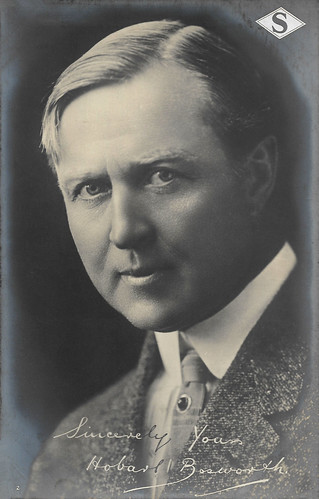
British postcard in the Selig Players Series, no. 2. Photo: Selig Polyscope Co.
Hobart Bosworth (1867-1943) was a pioneering American film director, writer, producer, and actor, who started in 1908 at the Selig Polyscope Company in The Count of Monte Christo (1908) and Dr. Jekyll/Mr. Hyde (1908). Due to his role in pioneering California for the film industry, Bosworth often was referred to as the 'Dean of Hollywood'.
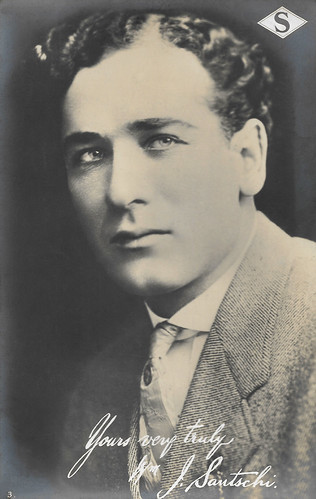
British postcard in the Selig Players Series, no. 3. Photo: Selig Polyscope Co.
Tom Santschi. (1878-1931) was an American leading man and character actor of the silent film era. In 1909, he joined The Selig Polyscope Co. of Chicago but soon moved to their new Californian studio in Los Angeles. He gradually mounted from bit player to male lead, acting in dozens of shorts for Selig, along with actors such as Hobart Bosworth and Robert Leonard, and actresses like Kathlyn Williams. With Williams, he starred in the early Selig serial The Adventures of Kathlyn (Francis J. Grandon, 1913). He became famous for his part in the first film adaptation of The Spoilers (Colin Campbell, 1914), in which he staged such a realistic brawl with his opponent William Farnum, that both men afterward suffered severe cuts, contusions, and broken bones.
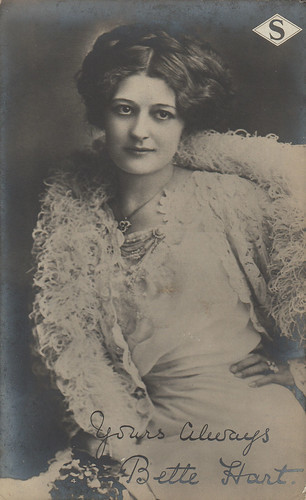
British postcard in the Selig Player Series, no. 4. Photo: Selig Polyscope Co. Collection: Marlene Pilaete.
Betty Harte (1882–1965) or Bette Hart was an adventurous American leading lady of early silent cinema. She became the first leading lady of the Selig Polyscope Company’s Los Angeles division and appeared in Westerns, period dramas, and Swashbucklers, invariably performing her own stunts. She starred in nine feature films and 108 short films and is credited with writing four screenplays.
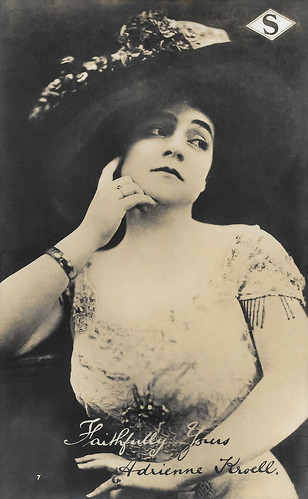
British postcard in the Selig Player Series, no. 7. Photo: Selig Polyscope Co.
American actress Adrienne Kroell (1892-1949) appeared in over 75 to 90 films between 1909 and 1914, mostly for the Selig Polyscope Company. The "Selig Coquette" was considered one of the most beautiful women in the film business.
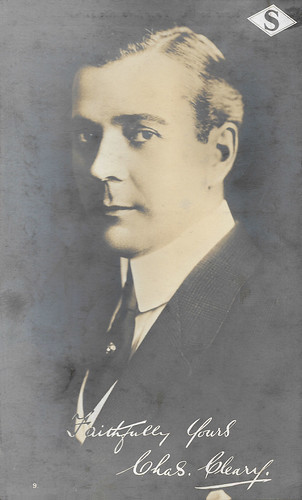
British postcard in the Selig Player Series, no. 9. Photo: Selig Polyscope Co.
Charles Clary (1873-1931) was an American actor of the silent film era. He began his film career in 1910 with the Selig Company in Chicago where he made his film debut in Brown of Harvard (Colin Campbell, 1911) with Edgar G. Wynn. Clary appeared in 206 films between 1910 and 1930.
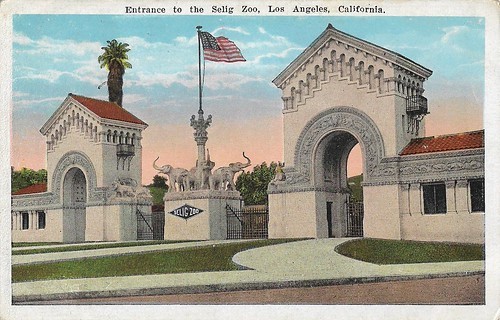
American postcard by California Postcard Co., Los Angeles. The Selig Zoo was constructed in 1915. "The zoo’s Mission-style entrance, which featured two large arches and statues of elephants and lions made of Parian marble. Florentine sculptor Carlo Romanelli was the artist responsible for the unique design. Early reports boasted that the zoo entrance alone cost $60,000 to construct."
Legal turmoil over disputes with lawyers representing Thomas Edison
William Selig had worked as a magician and minstrel show operator on the west coast of California. Later on, in Chicago, he entered the film business using his own photographic equipment, free from patent restrictions imposed through companies controlled by Thomas Edison.
In 1896, with help from Union Metal Works and Andrew Schustek, he shot his first film, Tramp and the Dog. He went on to successfully produce local actualities, slapstick comedies, early travelogues, and industrial films. A major client was Armour and Company.
In 1908 Selig Polyscope was involved in the production of The Fairylogue and Radio-Plays, a touring 'multimedia' attempt to bring L. Frank Baum's Oz books to a wider public which played to full houses but was nonetheless a financial disaster for Baum.
By 1909 Selig had studios making short features in Chicago and the Edendale district of Los Angeles. The company also distributed stock film footage and titles from other studios. That year, Roscoe 'Fatty' Arbuckle 's film debut was a Selig comedy short.
The company's early existence was fraught with legal turmoil over disputes with lawyers representing Thomas Edison's interests. In 1909 Selig and several other studio heads settled with Edison by creating an alliance with the inventor. Effectively a cartel, Motion Picture Patents Company dominated the industry for a few years until the Supreme Court (in 1913 and 1915) ruled the firm was an illegal monopoly.
In 1910 Selig Polyscope produced a wholly new filmed version of The Wonderful Wizard of Oz (Otis Turner, 1910). The company produced the first two-reel film, Damon and Pythias (Otis Turner, 1914), successfully distributed its pictures in Great Britain, and maintained an office in London for several years before World War I. Although Selig Polyscope produced a wide variety of films, the company was most widely known for its wild animal shorts, historical subjects, and early Westerns.
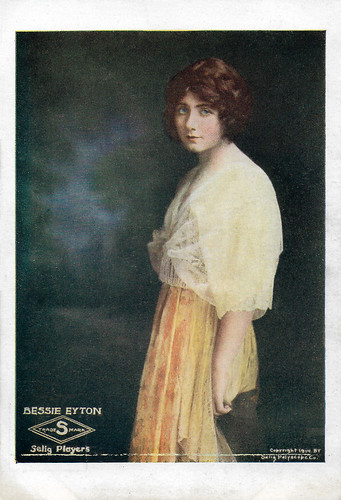
American postcard in the Selig Players series, 1914. Photo: Selig Polyscope Co.
American actress Bessie Eyton (1890-1965) starred in at least 200 melodramas, Westerns, and crime films. She was one of Selig's most popular stars.
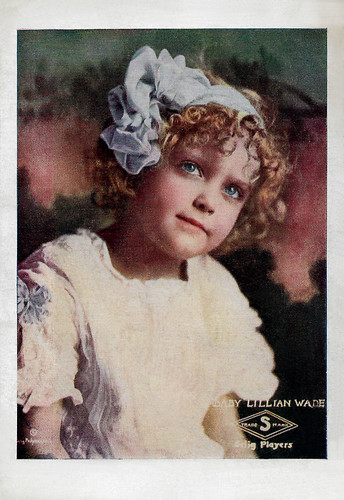
American postcard in the Selig Players series. Photo: Selig Polyscope Co.
American child actress Baby Lillian Wade (1907-1990) was one of the stars of the Selig Polyscope Company between 1911 and 1918. She starred in such films as When Lillian Was Little Red Riding Hood (1913) and Little Orphant Annie (1918). Wade appeared in around 60 films for Selig.
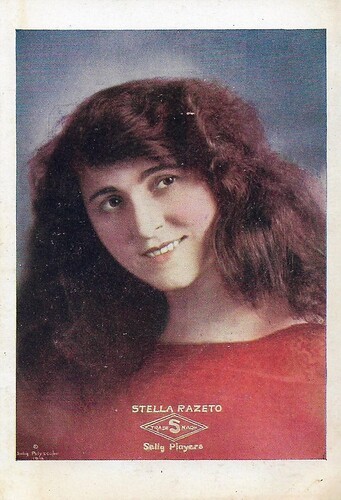
American postcard in the Selig Players series. Photo: Selig Polyscope Co.
Stella Razeto (1881-1948) was an American actress of the silent screen, who worked at the companies Selig and Universal, often directed there by her husband Edward LeSaint.
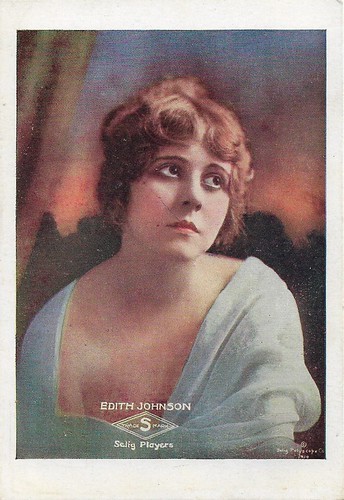
American postcard in the Selig Players series. Photo: Selig Polyscope Co.
Edith Johnson (1894-1969) was an American actress of the silent era. She appeared in 66 films between 1913 and 1924, mostly serials, action films, and Westerns. She and her husband William Duncan were "the king and queen of the serial".
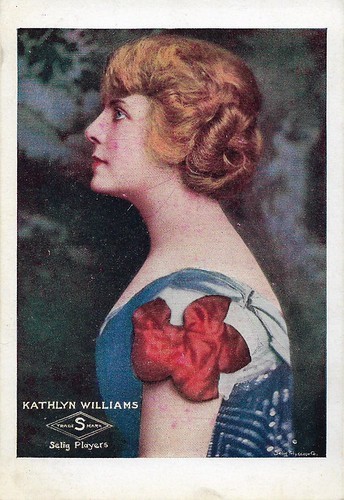
American postcard in the Selig Players series. Photo: Selig Polyscope Co.
Kathlyn Williams (1879-1960) was an American actress, known for her blonde beauty and daring antics. She performed on stage as well as in early silent films, in particular at the Selig Polyscope Company in the early 1910s, where she was at first publicised as "The Selig Girl". She made history, however, with the very first serial adventure, The Adventures of Kathlyn (1913), which contained a number of wild animals, and it saved the faltering studio from bankruptcy.
Highly successful short films involving wild animals in exotic settings
Attracted by Southern California's mild, dry climate, varied geography for location shooting, and isolation from Edison's legal representatives on the east coast, William Selig set up his studio in Edendale in 1909 with director Francis Boggs, who began the facility in a rented bungalow and quickly expanded, designing the studio's front entrance after Mission San Gabriel.
An early production there was The Count of Monte Cristo (1910). Edendale soon became Selig Polyscope's headquarters, but in 1911 Boggs was murdered by a Japanese gardener who also wounded Selig. The company produced hundreds of short features at Edendale, including many early Westerns featuring Tom Mix which were also shot at Las Vegas, New Mexico.
Selig Polyscope made dozens of highly successful short films involving wild animals in exotic settings, including a popular re-creation of an African safari hunt by Teddy Roosevelt. In 1914 Selig made 14 short experimental "talking pictures" with Scottish actor Harry Lauder .
In 1913, through a collaborative partnership with the Chicago Tribune, Selig produced The Adventures of Kathlyn, introducing a dramatic serial plot device that came to be known as the cliffhanger. Each chapter's story was simultaneously published in the newspaper. A combination of wild animals, clever dramatic action, and Kathlyn Williams' screen presence resulted in significant success. The Tribune’s circulation reportedly increased by 10% and both a dance and a cocktail were named after Williams, whose likeness was reportedly sold on over 50,000 postcards.
With the release of The Spoilers (Colin Campbell, 1914) starring William Farnum and Kathlyn Williams , Selig enjoyed his greatest success. At this point, Selig Polyscope appeared to have a bright future, but things quickly changed. During this time the industry was evolving from producing the short films Selig specialised into modern feature-length productions. While William did make longer films like The Spoilers, he felt shorts were the way of the future. The onset of World War I also hurt Selig Polyscope, given its extensive European operations.
By 1913 Selig had gathered a large collection of animals for his films and spent substantial funds acquiring and developing 32 acres (130,000 m2) of land in Lincoln Heights northeast of downtown Los Angeles, where he opened a large public zoo. In 1915, Selig entered into an agreement with Vitagraph Studios, Lubin Manufacturing Company, and Essanay Studios to form a film distribution partnership known as V-L-S-E, Incorporated. However, the dissolution of the Patents Company made the industry more competitive, dooming the pioneer studios.
World War I cut severely into the substantial revenues Selig Polyscope had been garnering in Europe and the company shunned profitable film industry trends, which had shifted towards dramatic (and more costly) full-length feature films. In 1917 Selig sold the Edendale facility to producer William Fox and moved his movie studio to the zoo in East Los Angeles. Selig Polyscope became insolvent and ceased operations in 1918. Tom Mix signed with Fox back at Edendale and went on to even greater success as a matinée cowboy star.
Film studios rented animals and staged many shoots at the Selig zoo sometimes later claiming they had been filmed in Africa. The first Tarzan of the Apes (Scott Sidney, 1918) with Elmo Lincoln was filmed there. In 1920 Louis B. Mayer rented his first studio space for Mayer Pictures at the site.
Selig planned to develop it into a major tourist attraction, amusement park, and popular resort named Selig Zoo Park with a Ferris wheel, carousels, mechanical rides, an enormous swimming pool with a sandy beach and a wave-making machine, hotel, theatre, cinema, restaurants and thousands of daily visitors, more than 30 years before Disneyland. Only a single carousel was built. Selig Polyscope's extensive collection of props and furnishings were auctioned off at the zoo in 1923.
Selig finally sold the zoo following a flood during the Great Depression. Selig moved into independent production after closing his studios, working infrequently until the 1930s. His glory days were past, though, and he faded into obscurity.
Some of the animals of Selig's zoo were donated to Los Angeles County, forming a substantial addition to Griffith Park Zoo. The property was used as a jalopy racetrack during the 1940s and early 1950s. In 1955 the site was described as "an inactive amusement park."
The carousel survived on the site until 1976 when it was destroyed by fire. The former Selig zoo's arched front gate with its lavish animal sculptures was a crumbling landmark in Lincoln Heights for many decades. By 2003 the sculptures were reportedly being restored for installation at the Los Angeles Zoo and in 2007 tennis courts were on the site.
In the late 1940s, William Selig made a large donation of business records to the Academy of Motion Picture Arts and Sciences Library. The William Selig papers, together with the donation, include Selig's correspondence, scripts, scrapbooks, production files, and six feet of photographs that include production stills from over 500 films that are otherwise lost. Only about 225 of the 3,500 films released by Selig between 1896 and 1938 have survived.
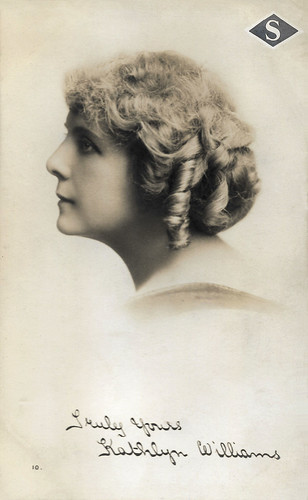
British postcard in the Selig Player Series, no. 10. Photo: Selig Polyscope Co.
Kathlyn Williams (1879-1960) was an American actress, known for her blonde beauty and daring antics. She performed on stage as well as in early silent film, in particular at the company Selig Polyscope in the early 1910s. There she was known as "The Selig Girl".
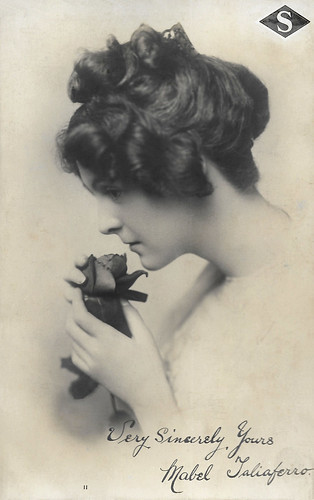
British postcard in the Selig Players Series, no. 11. Photo: Selig Polyscope Co.
American stage and silent-screen actress Mabel Taliaferro (1887-1979) was known as "the Sweetheart of American Movies". After a successful stage career, she entered the cinema at Selig in 1911.
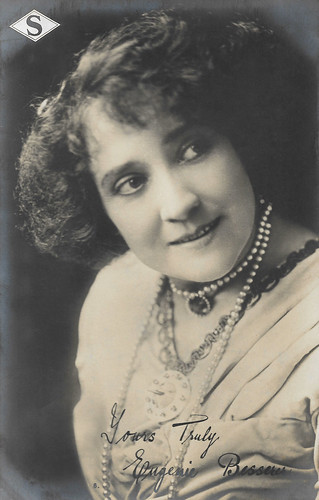
British postcard in the Selig Player Series. Photo: Selig Polyscope Co.
Eugenie Besserer (1868-1934) was an American actress who starred in silent films and features of the early sound era. At 42, she made her film debut in Selig's The Wonderful Wizard of Oz (1910), the earliest surviving film version of L. Frank Baum's novel. Her most prominent role is that of Al Jolson's mother in the first talkie, The Jazz Singer (1927).

British postcard in the Selig Player Series. Photo: Selig Polyscope Co.
Herbert Rawlinson (1885-1953) was a British actor who knew a rich career in American silent cinema, and less so in sound films. He made his film debut in 1911 as the male lead Hank Gibson opposite Tom Mix in a supporting part as the sheriff in the short film The Cowboy and the Shrew, produced by Selig Polyscope. Rawlinson became one of Selig's main actors, and had an enormous output of shorts there, already some 33 films in 1911 and some 40 titles in 1912. He alternated starring roles with major supporting parts, opposite such actors as Hobart Bosworth, Tom Santschi, and Sydney Ayres. All in all, he played in some 400 films.
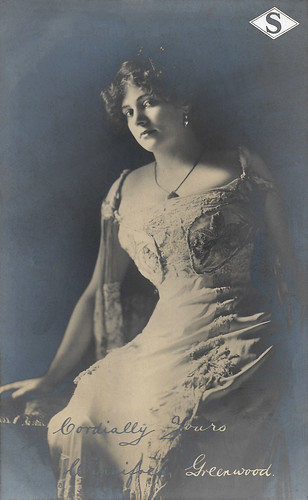
British postcard in the Selig Players Series. Photo: Selig Polyscope Co.
Winifred Greenwood (1885-1961) was an American silent film actress. In 1910, Greenwood was signed by the Selig Polyscope Company. One of her first films was the silent short Brown of Harvard (1911) based on the 1906 play of the same name by Rida Johnson Young. She starred in a number of films with Charlotte Burton including The Shriner's Daughter (1913). She played a child model in The Beggar Child (1914). Often her co-stars were Ed Coxen and her husband George Field, such as in the short comedy-drama Wife Wanted (1915). Between 1910 and 1927, she starred in over 200 films.
Sources: Wikipedia and .
Check out our earlier Before Hollywood posts: Vitagraph, Essanay, Biograph, Lubin, Flying A, Kalem, and Edison.

British postcard in the Selig Players Series, no. 2. Photo: Selig Polyscope Co.
Hobart Bosworth (1867-1943) was a pioneering American film director, writer, producer, and actor, who started in 1908 at the Selig Polyscope Company in The Count of Monte Christo (1908) and Dr. Jekyll/Mr. Hyde (1908). Due to his role in pioneering California for the film industry, Bosworth often was referred to as the 'Dean of Hollywood'.

British postcard in the Selig Players Series, no. 3. Photo: Selig Polyscope Co.
Tom Santschi. (1878-1931) was an American leading man and character actor of the silent film era. In 1909, he joined The Selig Polyscope Co. of Chicago but soon moved to their new Californian studio in Los Angeles. He gradually mounted from bit player to male lead, acting in dozens of shorts for Selig, along with actors such as Hobart Bosworth and Robert Leonard, and actresses like Kathlyn Williams. With Williams, he starred in the early Selig serial The Adventures of Kathlyn (Francis J. Grandon, 1913). He became famous for his part in the first film adaptation of The Spoilers (Colin Campbell, 1914), in which he staged such a realistic brawl with his opponent William Farnum, that both men afterward suffered severe cuts, contusions, and broken bones.

British postcard in the Selig Player Series, no. 4. Photo: Selig Polyscope Co. Collection: Marlene Pilaete.
Betty Harte (1882–1965) or Bette Hart was an adventurous American leading lady of early silent cinema. She became the first leading lady of the Selig Polyscope Company’s Los Angeles division and appeared in Westerns, period dramas, and Swashbucklers, invariably performing her own stunts. She starred in nine feature films and 108 short films and is credited with writing four screenplays.

British postcard in the Selig Player Series, no. 7. Photo: Selig Polyscope Co.
American actress Adrienne Kroell (1892-1949) appeared in over 75 to 90 films between 1909 and 1914, mostly for the Selig Polyscope Company. The "Selig Coquette" was considered one of the most beautiful women in the film business.

British postcard in the Selig Player Series, no. 9. Photo: Selig Polyscope Co.
Charles Clary (1873-1931) was an American actor of the silent film era. He began his film career in 1910 with the Selig Company in Chicago where he made his film debut in Brown of Harvard (Colin Campbell, 1911) with Edgar G. Wynn. Clary appeared in 206 films between 1910 and 1930.

American postcard by California Postcard Co., Los Angeles. The Selig Zoo was constructed in 1915. "The zoo’s Mission-style entrance, which featured two large arches and statues of elephants and lions made of Parian marble. Florentine sculptor Carlo Romanelli was the artist responsible for the unique design. Early reports boasted that the zoo entrance alone cost $60,000 to construct."
Legal turmoil over disputes with lawyers representing Thomas Edison
William Selig had worked as a magician and minstrel show operator on the west coast of California. Later on, in Chicago, he entered the film business using his own photographic equipment, free from patent restrictions imposed through companies controlled by Thomas Edison.
In 1896, with help from Union Metal Works and Andrew Schustek, he shot his first film, Tramp and the Dog. He went on to successfully produce local actualities, slapstick comedies, early travelogues, and industrial films. A major client was Armour and Company.
In 1908 Selig Polyscope was involved in the production of The Fairylogue and Radio-Plays, a touring 'multimedia' attempt to bring L. Frank Baum's Oz books to a wider public which played to full houses but was nonetheless a financial disaster for Baum.
By 1909 Selig had studios making short features in Chicago and the Edendale district of Los Angeles. The company also distributed stock film footage and titles from other studios. That year, Roscoe 'Fatty' Arbuckle 's film debut was a Selig comedy short.
The company's early existence was fraught with legal turmoil over disputes with lawyers representing Thomas Edison's interests. In 1909 Selig and several other studio heads settled with Edison by creating an alliance with the inventor. Effectively a cartel, Motion Picture Patents Company dominated the industry for a few years until the Supreme Court (in 1913 and 1915) ruled the firm was an illegal monopoly.
In 1910 Selig Polyscope produced a wholly new filmed version of The Wonderful Wizard of Oz (Otis Turner, 1910). The company produced the first two-reel film, Damon and Pythias (Otis Turner, 1914), successfully distributed its pictures in Great Britain, and maintained an office in London for several years before World War I. Although Selig Polyscope produced a wide variety of films, the company was most widely known for its wild animal shorts, historical subjects, and early Westerns.

American postcard in the Selig Players series, 1914. Photo: Selig Polyscope Co.
American actress Bessie Eyton (1890-1965) starred in at least 200 melodramas, Westerns, and crime films. She was one of Selig's most popular stars.

American postcard in the Selig Players series. Photo: Selig Polyscope Co.
American child actress Baby Lillian Wade (1907-1990) was one of the stars of the Selig Polyscope Company between 1911 and 1918. She starred in such films as When Lillian Was Little Red Riding Hood (1913) and Little Orphant Annie (1918). Wade appeared in around 60 films for Selig.

American postcard in the Selig Players series. Photo: Selig Polyscope Co.
Stella Razeto (1881-1948) was an American actress of the silent screen, who worked at the companies Selig and Universal, often directed there by her husband Edward LeSaint.

American postcard in the Selig Players series. Photo: Selig Polyscope Co.
Edith Johnson (1894-1969) was an American actress of the silent era. She appeared in 66 films between 1913 and 1924, mostly serials, action films, and Westerns. She and her husband William Duncan were "the king and queen of the serial".

American postcard in the Selig Players series. Photo: Selig Polyscope Co.
Kathlyn Williams (1879-1960) was an American actress, known for her blonde beauty and daring antics. She performed on stage as well as in early silent films, in particular at the Selig Polyscope Company in the early 1910s, where she was at first publicised as "The Selig Girl". She made history, however, with the very first serial adventure, The Adventures of Kathlyn (1913), which contained a number of wild animals, and it saved the faltering studio from bankruptcy.
Highly successful short films involving wild animals in exotic settings
Attracted by Southern California's mild, dry climate, varied geography for location shooting, and isolation from Edison's legal representatives on the east coast, William Selig set up his studio in Edendale in 1909 with director Francis Boggs, who began the facility in a rented bungalow and quickly expanded, designing the studio's front entrance after Mission San Gabriel.
An early production there was The Count of Monte Cristo (1910). Edendale soon became Selig Polyscope's headquarters, but in 1911 Boggs was murdered by a Japanese gardener who also wounded Selig. The company produced hundreds of short features at Edendale, including many early Westerns featuring Tom Mix which were also shot at Las Vegas, New Mexico.
Selig Polyscope made dozens of highly successful short films involving wild animals in exotic settings, including a popular re-creation of an African safari hunt by Teddy Roosevelt. In 1914 Selig made 14 short experimental "talking pictures" with Scottish actor Harry Lauder .
In 1913, through a collaborative partnership with the Chicago Tribune, Selig produced The Adventures of Kathlyn, introducing a dramatic serial plot device that came to be known as the cliffhanger. Each chapter's story was simultaneously published in the newspaper. A combination of wild animals, clever dramatic action, and Kathlyn Williams' screen presence resulted in significant success. The Tribune’s circulation reportedly increased by 10% and both a dance and a cocktail were named after Williams, whose likeness was reportedly sold on over 50,000 postcards.
With the release of The Spoilers (Colin Campbell, 1914) starring William Farnum and Kathlyn Williams , Selig enjoyed his greatest success. At this point, Selig Polyscope appeared to have a bright future, but things quickly changed. During this time the industry was evolving from producing the short films Selig specialised into modern feature-length productions. While William did make longer films like The Spoilers, he felt shorts were the way of the future. The onset of World War I also hurt Selig Polyscope, given its extensive European operations.
By 1913 Selig had gathered a large collection of animals for his films and spent substantial funds acquiring and developing 32 acres (130,000 m2) of land in Lincoln Heights northeast of downtown Los Angeles, where he opened a large public zoo. In 1915, Selig entered into an agreement with Vitagraph Studios, Lubin Manufacturing Company, and Essanay Studios to form a film distribution partnership known as V-L-S-E, Incorporated. However, the dissolution of the Patents Company made the industry more competitive, dooming the pioneer studios.
World War I cut severely into the substantial revenues Selig Polyscope had been garnering in Europe and the company shunned profitable film industry trends, which had shifted towards dramatic (and more costly) full-length feature films. In 1917 Selig sold the Edendale facility to producer William Fox and moved his movie studio to the zoo in East Los Angeles. Selig Polyscope became insolvent and ceased operations in 1918. Tom Mix signed with Fox back at Edendale and went on to even greater success as a matinée cowboy star.
Film studios rented animals and staged many shoots at the Selig zoo sometimes later claiming they had been filmed in Africa. The first Tarzan of the Apes (Scott Sidney, 1918) with Elmo Lincoln was filmed there. In 1920 Louis B. Mayer rented his first studio space for Mayer Pictures at the site.
Selig planned to develop it into a major tourist attraction, amusement park, and popular resort named Selig Zoo Park with a Ferris wheel, carousels, mechanical rides, an enormous swimming pool with a sandy beach and a wave-making machine, hotel, theatre, cinema, restaurants and thousands of daily visitors, more than 30 years before Disneyland. Only a single carousel was built. Selig Polyscope's extensive collection of props and furnishings were auctioned off at the zoo in 1923.
Selig finally sold the zoo following a flood during the Great Depression. Selig moved into independent production after closing his studios, working infrequently until the 1930s. His glory days were past, though, and he faded into obscurity.
Some of the animals of Selig's zoo were donated to Los Angeles County, forming a substantial addition to Griffith Park Zoo. The property was used as a jalopy racetrack during the 1940s and early 1950s. In 1955 the site was described as "an inactive amusement park."
The carousel survived on the site until 1976 when it was destroyed by fire. The former Selig zoo's arched front gate with its lavish animal sculptures was a crumbling landmark in Lincoln Heights for many decades. By 2003 the sculptures were reportedly being restored for installation at the Los Angeles Zoo and in 2007 tennis courts were on the site.
In the late 1940s, William Selig made a large donation of business records to the Academy of Motion Picture Arts and Sciences Library. The William Selig papers, together with the donation, include Selig's correspondence, scripts, scrapbooks, production files, and six feet of photographs that include production stills from over 500 films that are otherwise lost. Only about 225 of the 3,500 films released by Selig between 1896 and 1938 have survived.

British postcard in the Selig Player Series, no. 10. Photo: Selig Polyscope Co.
Kathlyn Williams (1879-1960) was an American actress, known for her blonde beauty and daring antics. She performed on stage as well as in early silent film, in particular at the company Selig Polyscope in the early 1910s. There she was known as "The Selig Girl".

British postcard in the Selig Players Series, no. 11. Photo: Selig Polyscope Co.
American stage and silent-screen actress Mabel Taliaferro (1887-1979) was known as "the Sweetheart of American Movies". After a successful stage career, she entered the cinema at Selig in 1911.

British postcard in the Selig Player Series. Photo: Selig Polyscope Co.
Eugenie Besserer (1868-1934) was an American actress who starred in silent films and features of the early sound era. At 42, she made her film debut in Selig's The Wonderful Wizard of Oz (1910), the earliest surviving film version of L. Frank Baum's novel. Her most prominent role is that of Al Jolson's mother in the first talkie, The Jazz Singer (1927).

British postcard in the Selig Player Series. Photo: Selig Polyscope Co.
Herbert Rawlinson (1885-1953) was a British actor who knew a rich career in American silent cinema, and less so in sound films. He made his film debut in 1911 as the male lead Hank Gibson opposite Tom Mix in a supporting part as the sheriff in the short film The Cowboy and the Shrew, produced by Selig Polyscope. Rawlinson became one of Selig's main actors, and had an enormous output of shorts there, already some 33 films in 1911 and some 40 titles in 1912. He alternated starring roles with major supporting parts, opposite such actors as Hobart Bosworth, Tom Santschi, and Sydney Ayres. All in all, he played in some 400 films.

British postcard in the Selig Players Series. Photo: Selig Polyscope Co.
Winifred Greenwood (1885-1961) was an American silent film actress. In 1910, Greenwood was signed by the Selig Polyscope Company. One of her first films was the silent short Brown of Harvard (1911) based on the 1906 play of the same name by Rida Johnson Young. She starred in a number of films with Charlotte Burton including The Shriner's Daughter (1913). She played a child model in The Beggar Child (1914). Often her co-stars were Ed Coxen and her husband George Field, such as in the short comedy-drama Wife Wanted (1915). Between 1910 and 1927, she starred in over 200 films.
Sources: Wikipedia and .
Check out our earlier Before Hollywood posts: Vitagraph, Essanay, Biograph, Lubin, Flying A, Kalem, and Edison.
Published on March 20, 2021 23:00
March 19, 2021
Recently acquired: five vintage film flyers
EFSP focuses on film star postcards, but we love to side-step once in a while. Today we share five flyers or leaflets which we found recently. Two were made in the Netherlands in the early 1930s for two Hollywood films, Employees' Entrance (Roy Del Ruth, 1933) and The Sign of the Cross (Cecil B. DeMille, 1932). The other three are German-language "programm-hefte" for three classics, Fritz Lang's last German film before he fled to Hollywood, Das Testament des Dr. Mabuse/The Testament of Dr. Mabuse (1933), and two Hitchcock classics, To Catch A Thief (1955) and Psycho (1960).
The Sign of the Cross (1932)
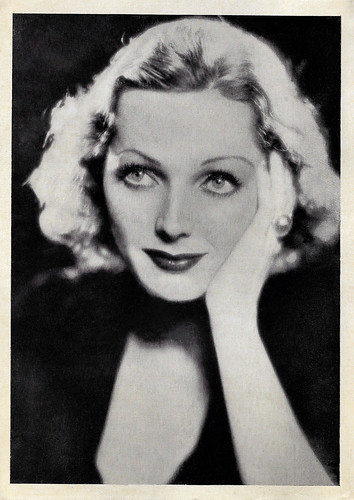
Dutch flyer, part 1. Adrienne Ames in The Sign of the Cross (Cecil B. DeMille, 1932).
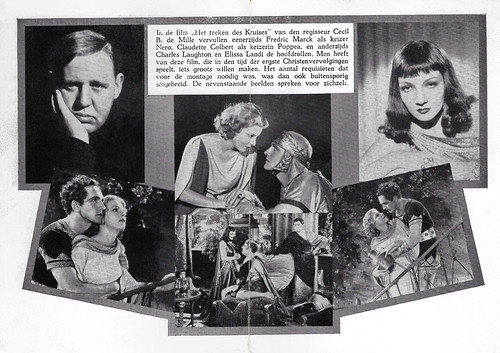
Dutch flyer, part 2. Charles Laughton , Fredric March, Elissa Landi, and Claudette Colbert in The Sign of the Cross (Cecil B. DeMille, 1932).
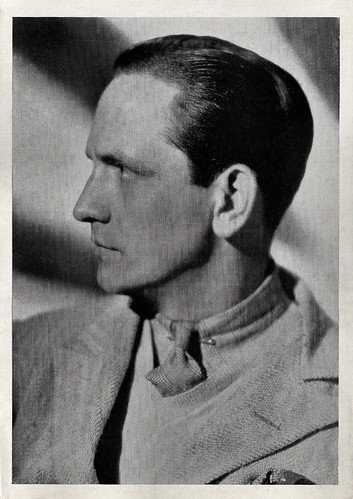
Dutch flyer, part 3. Fredric March in The Sign of the Cross (Cecil B. DeMille, 1932).
Employees' Entrance (1933)
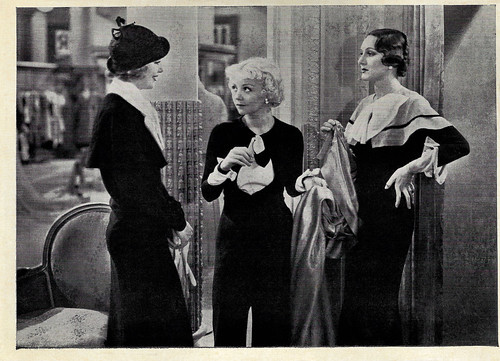
Dutch flyer, part 1. Photo: Warner Bros / First National Pictures. Alice White in Employees' Entrance (Roy Del Ruth, 1933).
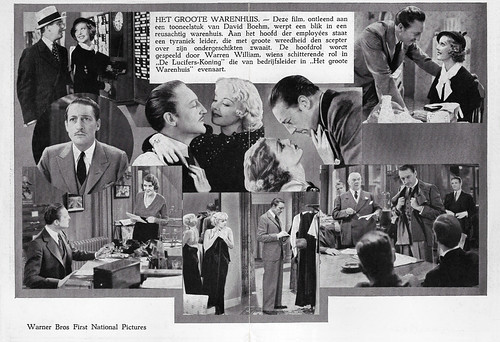
Dutch flyer, part 2. Photo: Warner Bros / First National Pictures. Loretta Young, Warren William, and Alice White in Employees' Entrance (Roy Del Ruth, 1933).
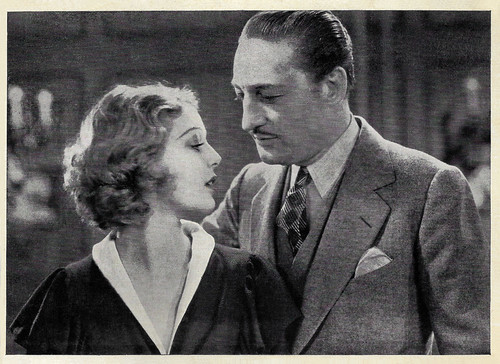
Dutch flyer, part 3. Photo: Warner Bros / First National Pictures. Loretta Young and Warren William in Employees' Entrance (Roy Del Ruth, 1933).
Das Testament des Dr. Mabuse (1933)
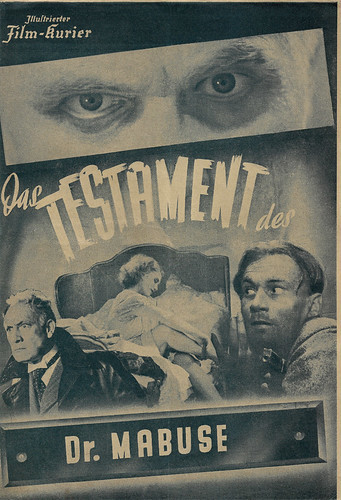
German flyer by Illustrierte Film-Kurier, no. 1168, 1952, part 1. Das Testament des Dr. Mabuse/The Testament of Dr. Mabuse (Fritz Lang, 1933).

German flyer by Illustrierte Film-Kurier, no. 1168, 1952, part 2. Das Testament des Dr. Mabuse/The Testament of Dr. Mabuse (Fritz Lang, 1933).
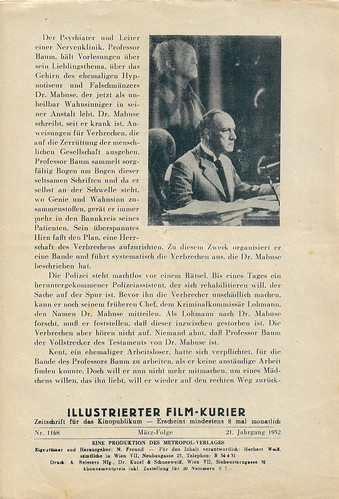
German flyer by Illustrierte Film-Kurier, no. 1168, 1952, part 3. Das Testament des Dr. Mabuse/The Testament of Dr. Mabuse (Fritz Lang, 1933).
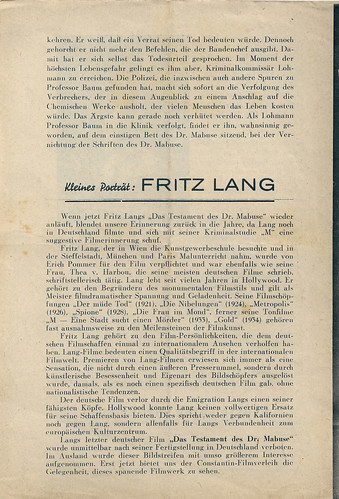
German flyer by Illustrierte Film-Kurier, no. 1168, 1952, part 4. Das Testament des Dr. Mabuse/The Testament of Dr. Mabuse (Fritz Lang, 1933).
To Catch A Thief (1955)
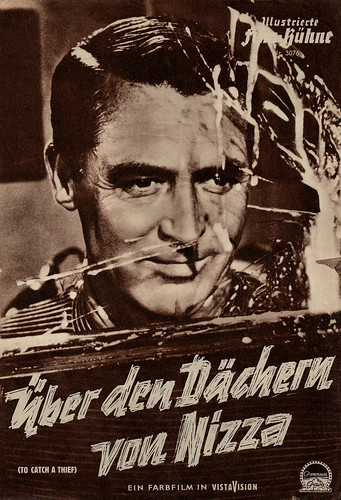
German flyer by Illustrierte film-bühne, no. 3076, part 1. Photos: Paramount. Cary Grant in To Catch A Thief (Alfred Hitchcock, 1955).
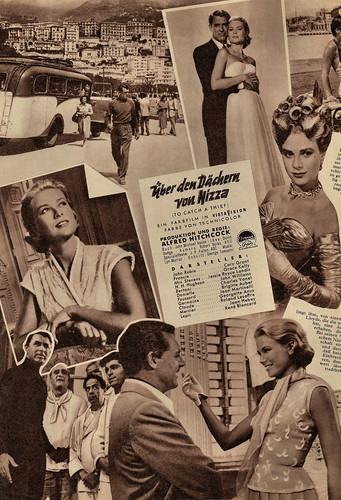
German flyer by Illustrierte film-bühne, no. 3076, part 2. Photos: Paramount. Cary Grant and Grace Kelly in To Catch A Thief (Alfred Hitchcock, 1955).
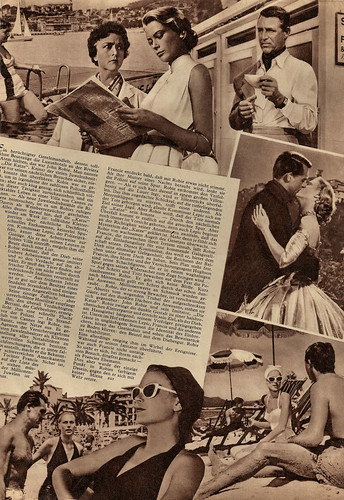
German flyer by Illustrierte film-bühne, no. 3076, part 3. Photos: Paramount. Cary Grant and Grace Kelly in To Catch A Thief (Alfred Hitchcock, 1955).
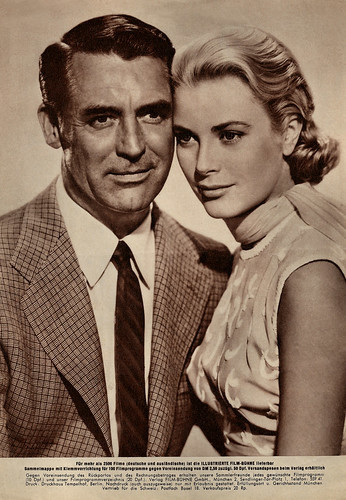
German flyer by Illustrierte film-bühne, no. 3076, part 4. Photos: Paramount. Cary Grant and Grace Kelly in To Catch A Thief (Alfred Hitchcock, 1955).
Psycho (1960)
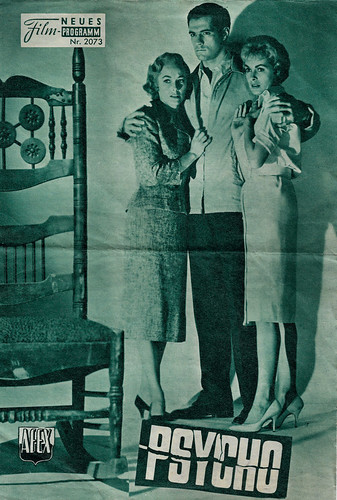
Austrian flyer (front) by Neues Film-programm, no. 2073, October 1960. Photo: Afex. Vera Miles, John Gavin, and Janet Leigh in Psycho (Alfred Hitchcock, 1960).
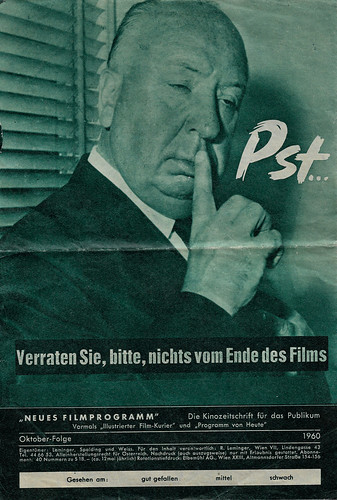
Austrian flyer (back) by Neues Film-programm, no. 2073, October 1960. Photo: Afex. Alfred Hitchcock in the trailer for Psycho (Alfred Hitchcock, 1960). Caption: Pst ... Please don't reveal anything about the end of the film.
The Sign of the Cross (1932)

Dutch flyer, part 1. Adrienne Ames in The Sign of the Cross (Cecil B. DeMille, 1932).

Dutch flyer, part 2. Charles Laughton , Fredric March, Elissa Landi, and Claudette Colbert in The Sign of the Cross (Cecil B. DeMille, 1932).

Dutch flyer, part 3. Fredric March in The Sign of the Cross (Cecil B. DeMille, 1932).
Employees' Entrance (1933)

Dutch flyer, part 1. Photo: Warner Bros / First National Pictures. Alice White in Employees' Entrance (Roy Del Ruth, 1933).

Dutch flyer, part 2. Photo: Warner Bros / First National Pictures. Loretta Young, Warren William, and Alice White in Employees' Entrance (Roy Del Ruth, 1933).

Dutch flyer, part 3. Photo: Warner Bros / First National Pictures. Loretta Young and Warren William in Employees' Entrance (Roy Del Ruth, 1933).
Das Testament des Dr. Mabuse (1933)

German flyer by Illustrierte Film-Kurier, no. 1168, 1952, part 1. Das Testament des Dr. Mabuse/The Testament of Dr. Mabuse (Fritz Lang, 1933).

German flyer by Illustrierte Film-Kurier, no. 1168, 1952, part 2. Das Testament des Dr. Mabuse/The Testament of Dr. Mabuse (Fritz Lang, 1933).

German flyer by Illustrierte Film-Kurier, no. 1168, 1952, part 3. Das Testament des Dr. Mabuse/The Testament of Dr. Mabuse (Fritz Lang, 1933).

German flyer by Illustrierte Film-Kurier, no. 1168, 1952, part 4. Das Testament des Dr. Mabuse/The Testament of Dr. Mabuse (Fritz Lang, 1933).
To Catch A Thief (1955)

German flyer by Illustrierte film-bühne, no. 3076, part 1. Photos: Paramount. Cary Grant in To Catch A Thief (Alfred Hitchcock, 1955).

German flyer by Illustrierte film-bühne, no. 3076, part 2. Photos: Paramount. Cary Grant and Grace Kelly in To Catch A Thief (Alfred Hitchcock, 1955).

German flyer by Illustrierte film-bühne, no. 3076, part 3. Photos: Paramount. Cary Grant and Grace Kelly in To Catch A Thief (Alfred Hitchcock, 1955).

German flyer by Illustrierte film-bühne, no. 3076, part 4. Photos: Paramount. Cary Grant and Grace Kelly in To Catch A Thief (Alfred Hitchcock, 1955).
Psycho (1960)

Austrian flyer (front) by Neues Film-programm, no. 2073, October 1960. Photo: Afex. Vera Miles, John Gavin, and Janet Leigh in Psycho (Alfred Hitchcock, 1960).

Austrian flyer (back) by Neues Film-programm, no. 2073, October 1960. Photo: Afex. Alfred Hitchcock in the trailer for Psycho (Alfred Hitchcock, 1960). Caption: Pst ... Please don't reveal anything about the end of the film.
Published on March 19, 2021 23:00
March 18, 2021
Claire Trevor
American actress Claire Trevor (1910-2000) appeared in 68 feature films from 1933 to 1982. She often played the hard-boiled blonde or another type of shady lady. She won the Oscar for Best Supporting Actress for her role in Key Largo (1948) and received nominations for her roles in Dead End (1937) and The High and the Mighty (1954). But she is now best known for the classic Western Stagecoach (1939) with John Wayne.
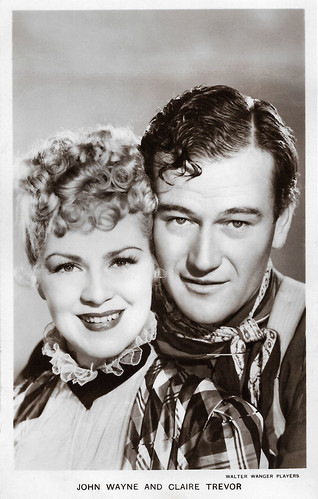
British postcard in the Film Partners Series, London, no. P 289. Photo: Walter Wanger. John Wayne and Claire Trevor in Stagecoach (John Ford, 1939).
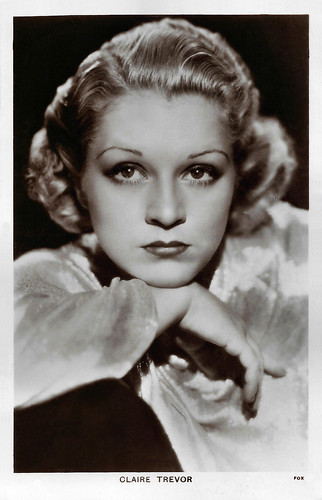
British postcard in the Picturegoer Series, London, no. 809. Photo: Fox.
A complex, kicked-around dance hall girl
Claire Trevor was born Claire Wemlinger in 1910 in Bensonhurst, Brooklyn. She was the only child of Noel Wemlinger, a Fifth Avenue merchant tailor, and his wife, Benjamina ('Betty'). Claire was raised in New York City and, from 1923, in Larchmont, New York.
For many years, her year of birth was misreported as 1909, a rare instance of an actress actually being younger than her given age, which is why her age at the time of her death was initially given as 91, not 90.
After completing high school, Trevor began her career with six months of art classes at Columbia University and six months at the American Academy of Dramatic Arts. She made her stage debut in the summer of 1929 with a repertory company in Ann Arbor, Michigan.
In 1930, aged 20, she signed with Warner Bros. Not far from her home in Brooklyn was Vitagraph Studios, the last and best of the early sound process studios, which had been acquired by Warner Bros. and had become Vitaphone in 1925. Trevor appeared in several of the nearly 2000 shorts cranked out by the studio between 1926 and 1930.
She also performed in summer stock theatre. In 1932, she starred on Broadway as the female lead in 'Whistling in the Dark'. The next year, she made her film debut with a leading role in the Western Life in the Raw (Louis King, 1933) opposite George O'Brien.
From 1933 to 1938, Trevor starred in 29 films, often having either the lead role or the role of heroine. In 1937, she was the second lead actress after top-billed Sylvia Sidney in the crime drama Dead End (William Wyler, 1937), with Humphrey Bogart . Her role as a slum girl forced by poverty into prostitution led to her nomination for Best Supporting Actress.
She was well established as a solid leading lady now. Her most memorable performance during this period was the Western Stagecoach (John Ford, 1939) with John Wayne in his breakthrough role. William McPeak at IMDb : "All her abilities to bring complexity to a character showed in her kicked-around dance hall girl "Dallas", one of the great early female roles. She and Wayne were electric, and they were paired in three more films during their careers."
From 1937 to 1940, she appeared with Edward G. Robinson in the popular radio series 'Big Town' while continuing to make films.
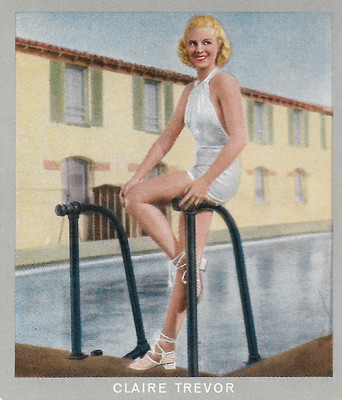
German cigarette card by Ross Verlag in the 'Künstler im Film' series for Zigarettenfabrik Monopol, Dresden, Serie 1, image 164 (of 200). Photo: 20th Century Fox.
Distinguished matron and mother roles, and Ma Barker
In the early 1940s, Claire Trevor was a regular on 'The Old Gold Don Ameche Show' on the NBC Red Radio Network, starring with Don Ameche in presentations of plays by Mark Hellinger.
Two of Trevor's most memorable roles were in the Film Noirs Murder, My Sweet (Edward Dmytryk, 1944) opposite Dick Powell , and Born to Kill (Robert Wise, 1947) with Lawrence Tierney.
In Key Largo (John Huston, 1948), Trevor played Gaye Dawn, the washed-up nightclub singer and gangster's moll. For that role, she won the Oscar for Best Supporting Actress. Her third and final Oscar nomination was for her performance in the disaster film The High and the Mighty (William A. Wellman, 1954) with John Wayne .
In 1957, she won an Emmy for her role as the flighty wife of Fredric March in the Producers' Showcase episode entitled Dodsworth (Alex Segal, 1956). As she aged she easily transitioned into 'distinguished matron' and mother roles, one of her most unusual ones being the murderous Ma Barker in The Untouchables: Ma Barker and Her Boys (1959), a notoriously gun-blasting episode of the notorious gun-blasting series.
Her appearances became very rare after the mid-1960s. She played Charlotte, the mother of Kay (Sally Field) in her final film, the romantic comedy Kiss Me Goodbye (Robert Mulligan, 1982). Her final screen role was for the TV film, Norman Rockwell's Breaking Home Ties (1987). Trevor made a guest appearance at the 70th Academy Awards in 1998.
Claire Trevor married Clark Andrews, director of her radio show, in 1938, but they divorced four years later. Her second marriage in 1943 to Navy lieutenant Cylos William Dunsmore produced her only child, son Charles. The marriage ended in divorce in 1947. The next year, Trevor married Milton Bren, a film producer with two sons from a previous marriage, and they moved to Newport Beach, California. In 1978, Trevor's son Charles died in the crash of PSA Flight 182, followed by the death of her husband Milton from a brain tumor in 1979.
Devastated by these losses, she returned to Manhattan for some years, living in a Fifth Avenue apartment and taking a few acting roles amid a busy social life. She eventually returned to California, where she remained for the rest of her life, becoming a generous supporter of the arts. Claire Trevor died of respiratory failure in Newport Beach, California, in 2000, at the age of 90. She was survived by her two stepsons and extended family. For her contribution to the film industry, she has a star on the Hollywood Walk of Fame at 6933 Hollywood Boulevard.
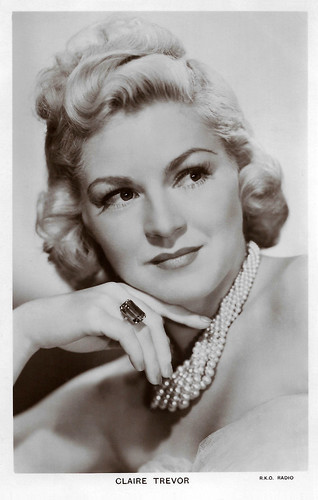
British postcard in the Picturegoer Series, London, no. 809a. Photo: R.K.O. Radio.
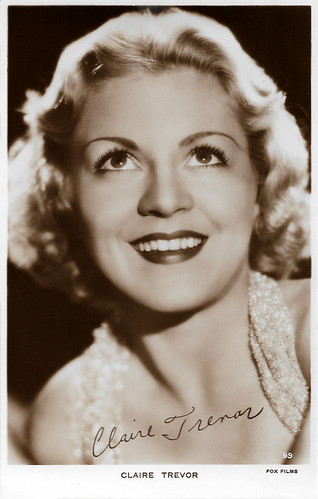
British postcard by Milton, no. 99. Photo: Fox Films.
Sources: (IMDb), Wikipedia, and .

British postcard in the Film Partners Series, London, no. P 289. Photo: Walter Wanger. John Wayne and Claire Trevor in Stagecoach (John Ford, 1939).

British postcard in the Picturegoer Series, London, no. 809. Photo: Fox.
A complex, kicked-around dance hall girl
Claire Trevor was born Claire Wemlinger in 1910 in Bensonhurst, Brooklyn. She was the only child of Noel Wemlinger, a Fifth Avenue merchant tailor, and his wife, Benjamina ('Betty'). Claire was raised in New York City and, from 1923, in Larchmont, New York.
For many years, her year of birth was misreported as 1909, a rare instance of an actress actually being younger than her given age, which is why her age at the time of her death was initially given as 91, not 90.
After completing high school, Trevor began her career with six months of art classes at Columbia University and six months at the American Academy of Dramatic Arts. She made her stage debut in the summer of 1929 with a repertory company in Ann Arbor, Michigan.
In 1930, aged 20, she signed with Warner Bros. Not far from her home in Brooklyn was Vitagraph Studios, the last and best of the early sound process studios, which had been acquired by Warner Bros. and had become Vitaphone in 1925. Trevor appeared in several of the nearly 2000 shorts cranked out by the studio between 1926 and 1930.
She also performed in summer stock theatre. In 1932, she starred on Broadway as the female lead in 'Whistling in the Dark'. The next year, she made her film debut with a leading role in the Western Life in the Raw (Louis King, 1933) opposite George O'Brien.
From 1933 to 1938, Trevor starred in 29 films, often having either the lead role or the role of heroine. In 1937, she was the second lead actress after top-billed Sylvia Sidney in the crime drama Dead End (William Wyler, 1937), with Humphrey Bogart . Her role as a slum girl forced by poverty into prostitution led to her nomination for Best Supporting Actress.
She was well established as a solid leading lady now. Her most memorable performance during this period was the Western Stagecoach (John Ford, 1939) with John Wayne in his breakthrough role. William McPeak at IMDb : "All her abilities to bring complexity to a character showed in her kicked-around dance hall girl "Dallas", one of the great early female roles. She and Wayne were electric, and they were paired in three more films during their careers."
From 1937 to 1940, she appeared with Edward G. Robinson in the popular radio series 'Big Town' while continuing to make films.

German cigarette card by Ross Verlag in the 'Künstler im Film' series for Zigarettenfabrik Monopol, Dresden, Serie 1, image 164 (of 200). Photo: 20th Century Fox.
Distinguished matron and mother roles, and Ma Barker
In the early 1940s, Claire Trevor was a regular on 'The Old Gold Don Ameche Show' on the NBC Red Radio Network, starring with Don Ameche in presentations of plays by Mark Hellinger.
Two of Trevor's most memorable roles were in the Film Noirs Murder, My Sweet (Edward Dmytryk, 1944) opposite Dick Powell , and Born to Kill (Robert Wise, 1947) with Lawrence Tierney.
In Key Largo (John Huston, 1948), Trevor played Gaye Dawn, the washed-up nightclub singer and gangster's moll. For that role, she won the Oscar for Best Supporting Actress. Her third and final Oscar nomination was for her performance in the disaster film The High and the Mighty (William A. Wellman, 1954) with John Wayne .
In 1957, she won an Emmy for her role as the flighty wife of Fredric March in the Producers' Showcase episode entitled Dodsworth (Alex Segal, 1956). As she aged she easily transitioned into 'distinguished matron' and mother roles, one of her most unusual ones being the murderous Ma Barker in The Untouchables: Ma Barker and Her Boys (1959), a notoriously gun-blasting episode of the notorious gun-blasting series.
Her appearances became very rare after the mid-1960s. She played Charlotte, the mother of Kay (Sally Field) in her final film, the romantic comedy Kiss Me Goodbye (Robert Mulligan, 1982). Her final screen role was for the TV film, Norman Rockwell's Breaking Home Ties (1987). Trevor made a guest appearance at the 70th Academy Awards in 1998.
Claire Trevor married Clark Andrews, director of her radio show, in 1938, but they divorced four years later. Her second marriage in 1943 to Navy lieutenant Cylos William Dunsmore produced her only child, son Charles. The marriage ended in divorce in 1947. The next year, Trevor married Milton Bren, a film producer with two sons from a previous marriage, and they moved to Newport Beach, California. In 1978, Trevor's son Charles died in the crash of PSA Flight 182, followed by the death of her husband Milton from a brain tumor in 1979.
Devastated by these losses, she returned to Manhattan for some years, living in a Fifth Avenue apartment and taking a few acting roles amid a busy social life. She eventually returned to California, where she remained for the rest of her life, becoming a generous supporter of the arts. Claire Trevor died of respiratory failure in Newport Beach, California, in 2000, at the age of 90. She was survived by her two stepsons and extended family. For her contribution to the film industry, she has a star on the Hollywood Walk of Fame at 6933 Hollywood Boulevard.

British postcard in the Picturegoer Series, London, no. 809a. Photo: R.K.O. Radio.

British postcard by Milton, no. 99. Photo: Fox Films.
Sources: (IMDb), Wikipedia, and .
Published on March 18, 2021 23:00
March 17, 2021
Three Henny Porten films (2)
Last month, EFSP had a post with three films by Henny Porten, one of the three most popular stars of German silent cinema. For this post, Ivo Blom selected three more Porten films for which Ross Verlag published a series of postcards with film scenes. Ivo chose this time the drama Die Flammen lügen/The flames lie (1926), the romantic comedy Liebe im Kuhstall/Love in the Cowshed (1928), and the early sound film Skandal um Eva/Scandalous Eva (1930).
Die Flammen lügen (1926)
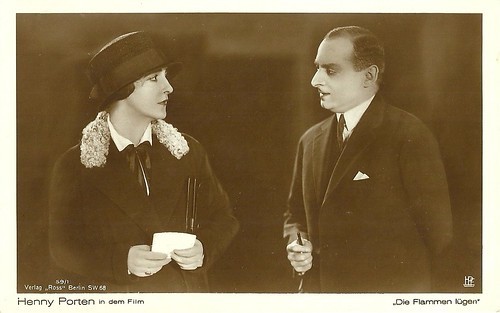
German postcard by Ross Verlag, no. 59/1. Photo: Henny Porten-Froehlich Produktion. Henny Porten and Ferdinand von Alten in Die Flammen lügen/The flames lie (Carl Froehlich, 1926).

German postcard by Ross Verlag, no. 59/2. Photo: Henny Porten-Froehlich Produktion. Henny Porten in Die Flammen lügen/The flames lie (Carl Froehlich, 1926). The men may be Paul Bildt and Gerd Briese as Porten's father and brother in the film.
Die Flammen lügen/The flames lie (Carl Froehlich, 1926) is a German silent melodrama, written by Friedrich Raff. Henny Porten played the lead role as Gertrud von Gehr. Gertrud is the daughter of the retired officer Major von Gehr (Paul Bildt), who is annoyed by the new house of his neighbour, the wealthy factory owner Conrad Birkinger ( Hans Adalbert Schlettow ).
To make matters worse, Gehr's daughter Gertrud falls in love with Birkinger, and one day they get married. Their childless marriage is not a happy one. Birkinger cheats on his wife with his former girlfriend Doritt Lenee (Ruth Weyher). The unfaithful husband even goes so far that he and Doritt rent a room in a hotel as Mr. and Mrs. Birkinger.
When a fire breaks out in the hotel, the two can not escape and perish in the flames. Now Gertrud Birkinger is officially dead. At first, she does not notice anything about this development, because she too stayed in the hotel because she had secretly travelled to join her husband. But she could be saved.
After a lengthy recovery, Gertrud returns to her old, premarital life and devotes herself entirely to her brother Hermann's ( Gerd Briese ) children.
Die Flammen Lügen was shot in April and May 1926 in the Berlin-Staaken studio. The film passed the censorship on September 25th and was banned from youth. The premiere took place on 22 October 22nd, 1926 in the Berlin movie palace Mozartsaal. Franz Schroedter was responsible for the film sets, Axel Graatkjær was the director of photography, and Walter Supper the editor.
Paimann’s Filmlisten reviewed: “The subject is kept quite sentimental and has a number of gripping moments. The direction is steady, the presentation and photography smooth.
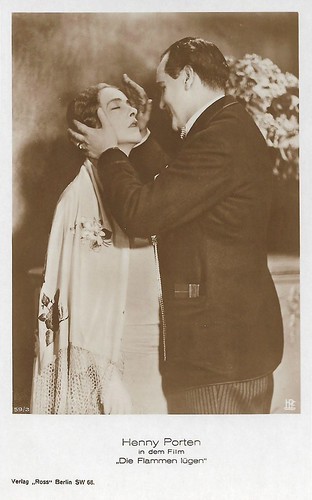
German postcard by Ross Verlag, no. 59/3. Photo: Henny Porten-Froehlich Produktion. Henny Porten and Hans Adalbert Schlettow in Die Flammen lügen/The flames lie (Carl Froehlich, 1926).
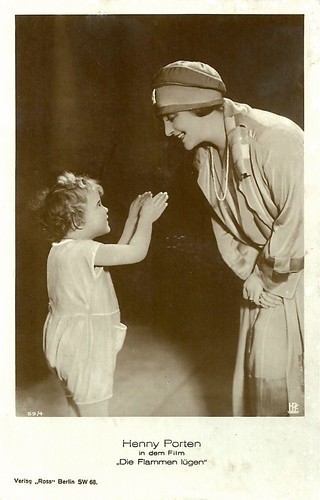
German postcard by Ross Verlag, no. 59/4. Photo: Henny Porten-Froehlich Produktion. Henny Porten in Die Flammen lügen (Carl Froehlich, 1926).
Liebe im Kuhstall (1928)
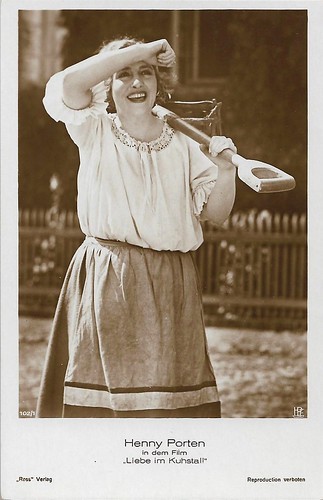
German postcard by Ross Verlag, no. 102/1. Photo: Henny Porten Freuhlich-Produktion. Henny Porten in Liebe im Kuhstall/Love in the Cowshed (Carl Froelich, 1928).
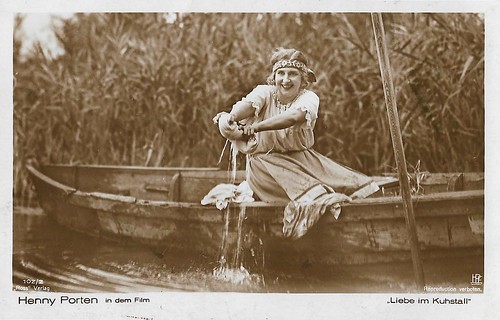
German postcard by Ross Verlag, no. 102/2. Photo: Henny Porten Freuhlich-Produktion. Henny Porten in Liebe im Kuhstall/Love in the Cowshed (Carl Froelich, 1928).
In Liebe im Kuhstall/Love in the Cowshed (Carl Froelich, 1928), Janos von Holodronz (Iwan Kowal-Samborski) is a real good-for-nothing from old nobility. Together with his four friends, he lives in a completely dilapidated estate. Now, according to his uncle Albrecht (Eugen Neufeld), only marrying a wealthy lady can save his economic survival. He believes that the wealthy Countess Koritowska would be an ideal marriage candidate. But Janos stands across, he doesn't want to. At least not this unknown woman, because he (and his four cronies as well) has long since lost his heart to the perky cowgirl Marischka ( Henny Porten ).
One day she appeared out of nowhere, or better said: she was discovered in the hay. That is where the young woman had laid down to rest the night before when she was surprised by a downpour on her wandering after work in the cowshed. The five men don't think twice: of course, this Marischka finds work with them straight away. The buxom cowgirl immediately notices that she is turning the heads of the men on the farm and makes full use of this. The peasant girl, who doesn't seem to have much experience in her job, soon messes up the entire estate.
One day Janos' uncle Albrecht, Knight of Holodronz, appears and frankly offers his nephew money if he should finally lead a distinguished young lady from a good (and above all wealthy) home to the altar. His four friends then have a "brilliant" idea. Why not just make Marischka "elegant" and sell it to the wealthy uncle as a "good match". Said and done. But soon all this becomes too stupid for Marischka. She confesses the truth to her uncle and runs away crying. The five men's beautiful plan seems to have failed, and Janos would like to tie himself up with a rope straight away. But the stupid cowgirl stole it and used it to tie her bundle, as she left the yard at once.
The crybaby, disappointed by Janos, explains that she will bring the rope back at Pentecost when the merchant of the place where Janos is heavily in debt has taken over the farm and moved into it. Janos should have been chased from the farm by then. How can the latter suspect that this whole story was only staged by Countess Koritowska, who in truth is identical to Marischka and of course also not a cowgirl, in order to test Janos as a possible marriage candidate? In the end, after all the trials and tribulations, the lovers still find each other.
Other actors in Liebe im Kuhstall/Love in the Cowshed (Carl Froelich, 1928) were Oskar Karlweis as Oberleutnant a. D. Wedelski, Otto Wallburg as Wenzel the soap cutter, and - debuting on screen - Felix Bressart as bailiff. Fritz Friedmann-Frederich and Walter Supper scripted the film. Sets were by Gustav A. Knauer and Willy Schiller, cinematography by Gustave Preiss. Porten's husband Wilhelm Kauffmann co-produced the film and was production manager too. The film premiered 26 October 1928 at the Berlin cinema Capitol.
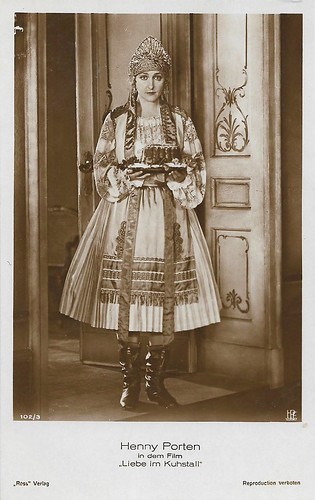
German postcard by Ross Verlag, no. 102/3. Photo: Henny Porten Freuhlich-Produktion. Henny Porten in Liebe im Kuhstall/Love in the Cowshed (Carl Froelich, 1928).
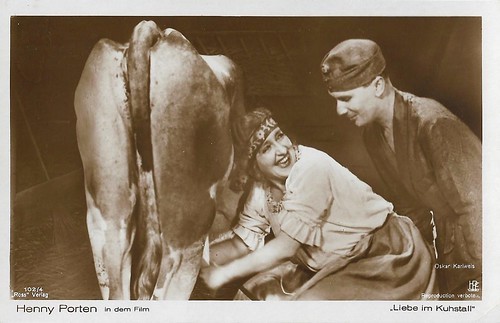
German postcard by Ross Verlag, no. 102/4. Photo: Henny Porten Freuhlich-Produktion. Henny Porten and Oskar Karlweiss in Liebe im Kuhstall/Love in the Cowshed (Carl Froelich, 1928).
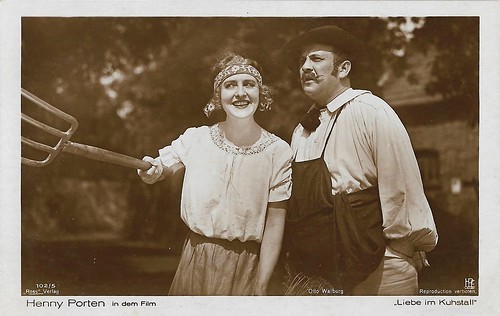
German postcard by Ross Verlag, no. 102/5. Photo: Henny Porten Freuhlich-Produktion. Henny Porten and Otto Wallburg in Liebe im Kuhstall/Love in the Cowshed (Carl Froelich, 1928).
Skandal um Eva (1930)
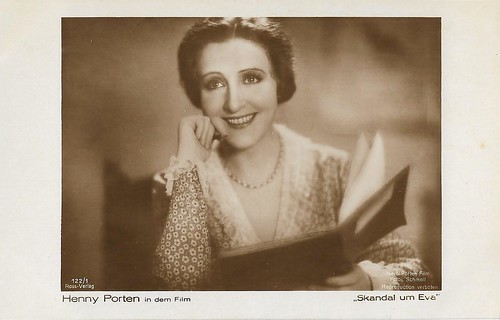
German postcard by Ross Verlag, no. 122/1. Photo: Schmoll / Henny Porten Freuhlich-Produktion. Henny Porten in Skandal um Eva/Scandalous Eva (Georg Wilhelm Pabst, 1930).
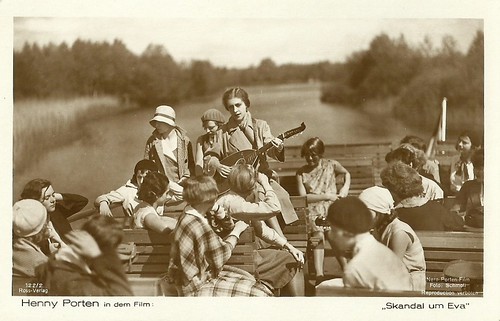
German postcard by Ross Verlag, no. 122/2. Photo: Schmoll / Nero-Porten-Film. Henny Porten in Skandal um Eva/Scandalous Eva (Georg Wilhelm Pabst, 1930).
In Skandal um Eva/Scandalous Eva (Georg Wilhelm Pabst, 1930), Eva Rüttgers ( Henny Porten ) is a young teacher in a German provincial town. She becomes engaged to the educator Dr. Kurt Hiller ( Oskar Sima ). By chance, she learns of a four-year-old Hiller's illegitimate son. She secretly drives to the foster parents of little Gustav and returns with him to town.
What was actually planned as a surprise for her fiancé turned into a moral scandal. Hiller does not recognise his own son and, like the rest of the city, considers him to be Eva's illegitimate son, who has deliberately kept this son a secret and now wants to bring him into the marriage.
Eva is supposed to be fired from her position as a teacher. This gets the students involved. They do not want to be separated from the popular teacher and this leads to the clarification of the misunderstanding with their protests.
Skandal um Eva/Scandalous Eva (Georg Wilhelm Pabst, 1930) was based on the popular stage farce 'Skandal um Olly' by Heinrich Ilgenstein. It was both Porten and G.W. Pabst's first sound film. It was considered an entertaining film that showed the mastery of Porten.
Skandal um Eva/Scandalous Eva (Georg Wilhelm Pabst, 1930) was scripted by Friedrich Raff and Julius Urgiß, the cinematography was by Fritz Arno Wagner, and editing by Wolfgang Loë-Bagier and Marc Sorkin. The film premiered in Germany on 11 June 1930.
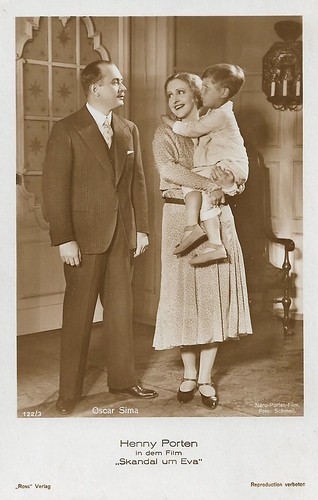
German postcard by Ross Verlag, no. 122/3. Photo: Schmoll / Nero-Porten-Film. Henny Porten and Oskar Sima in Skandal um Eva/Scandalous Eva (Georg Wilhelm Pabst, 1930).
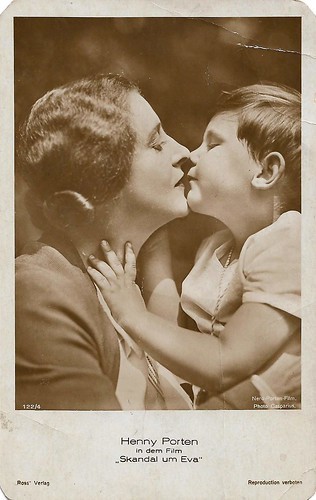
German postcard by Ross Verlag, no. 122/4. Photo: Schmoll / Nero-Porten-Film. Henny Porten in Skandal um Eva/Scandalous Eva (Georg Wilhelm Pabst, 1930).
Sources: Wikipedia (German) and IMDb.
Die Flammen lügen (1926)

German postcard by Ross Verlag, no. 59/1. Photo: Henny Porten-Froehlich Produktion. Henny Porten and Ferdinand von Alten in Die Flammen lügen/The flames lie (Carl Froehlich, 1926).

German postcard by Ross Verlag, no. 59/2. Photo: Henny Porten-Froehlich Produktion. Henny Porten in Die Flammen lügen/The flames lie (Carl Froehlich, 1926). The men may be Paul Bildt and Gerd Briese as Porten's father and brother in the film.
Die Flammen lügen/The flames lie (Carl Froehlich, 1926) is a German silent melodrama, written by Friedrich Raff. Henny Porten played the lead role as Gertrud von Gehr. Gertrud is the daughter of the retired officer Major von Gehr (Paul Bildt), who is annoyed by the new house of his neighbour, the wealthy factory owner Conrad Birkinger ( Hans Adalbert Schlettow ).
To make matters worse, Gehr's daughter Gertrud falls in love with Birkinger, and one day they get married. Their childless marriage is not a happy one. Birkinger cheats on his wife with his former girlfriend Doritt Lenee (Ruth Weyher). The unfaithful husband even goes so far that he and Doritt rent a room in a hotel as Mr. and Mrs. Birkinger.
When a fire breaks out in the hotel, the two can not escape and perish in the flames. Now Gertrud Birkinger is officially dead. At first, she does not notice anything about this development, because she too stayed in the hotel because she had secretly travelled to join her husband. But she could be saved.
After a lengthy recovery, Gertrud returns to her old, premarital life and devotes herself entirely to her brother Hermann's ( Gerd Briese ) children.
Die Flammen Lügen was shot in April and May 1926 in the Berlin-Staaken studio. The film passed the censorship on September 25th and was banned from youth. The premiere took place on 22 October 22nd, 1926 in the Berlin movie palace Mozartsaal. Franz Schroedter was responsible for the film sets, Axel Graatkjær was the director of photography, and Walter Supper the editor.
Paimann’s Filmlisten reviewed: “The subject is kept quite sentimental and has a number of gripping moments. The direction is steady, the presentation and photography smooth.

German postcard by Ross Verlag, no. 59/3. Photo: Henny Porten-Froehlich Produktion. Henny Porten and Hans Adalbert Schlettow in Die Flammen lügen/The flames lie (Carl Froehlich, 1926).

German postcard by Ross Verlag, no. 59/4. Photo: Henny Porten-Froehlich Produktion. Henny Porten in Die Flammen lügen (Carl Froehlich, 1926).
Liebe im Kuhstall (1928)

German postcard by Ross Verlag, no. 102/1. Photo: Henny Porten Freuhlich-Produktion. Henny Porten in Liebe im Kuhstall/Love in the Cowshed (Carl Froelich, 1928).

German postcard by Ross Verlag, no. 102/2. Photo: Henny Porten Freuhlich-Produktion. Henny Porten in Liebe im Kuhstall/Love in the Cowshed (Carl Froelich, 1928).
In Liebe im Kuhstall/Love in the Cowshed (Carl Froelich, 1928), Janos von Holodronz (Iwan Kowal-Samborski) is a real good-for-nothing from old nobility. Together with his four friends, he lives in a completely dilapidated estate. Now, according to his uncle Albrecht (Eugen Neufeld), only marrying a wealthy lady can save his economic survival. He believes that the wealthy Countess Koritowska would be an ideal marriage candidate. But Janos stands across, he doesn't want to. At least not this unknown woman, because he (and his four cronies as well) has long since lost his heart to the perky cowgirl Marischka ( Henny Porten ).
One day she appeared out of nowhere, or better said: she was discovered in the hay. That is where the young woman had laid down to rest the night before when she was surprised by a downpour on her wandering after work in the cowshed. The five men don't think twice: of course, this Marischka finds work with them straight away. The buxom cowgirl immediately notices that she is turning the heads of the men on the farm and makes full use of this. The peasant girl, who doesn't seem to have much experience in her job, soon messes up the entire estate.
One day Janos' uncle Albrecht, Knight of Holodronz, appears and frankly offers his nephew money if he should finally lead a distinguished young lady from a good (and above all wealthy) home to the altar. His four friends then have a "brilliant" idea. Why not just make Marischka "elegant" and sell it to the wealthy uncle as a "good match". Said and done. But soon all this becomes too stupid for Marischka. She confesses the truth to her uncle and runs away crying. The five men's beautiful plan seems to have failed, and Janos would like to tie himself up with a rope straight away. But the stupid cowgirl stole it and used it to tie her bundle, as she left the yard at once.
The crybaby, disappointed by Janos, explains that she will bring the rope back at Pentecost when the merchant of the place where Janos is heavily in debt has taken over the farm and moved into it. Janos should have been chased from the farm by then. How can the latter suspect that this whole story was only staged by Countess Koritowska, who in truth is identical to Marischka and of course also not a cowgirl, in order to test Janos as a possible marriage candidate? In the end, after all the trials and tribulations, the lovers still find each other.
Other actors in Liebe im Kuhstall/Love in the Cowshed (Carl Froelich, 1928) were Oskar Karlweis as Oberleutnant a. D. Wedelski, Otto Wallburg as Wenzel the soap cutter, and - debuting on screen - Felix Bressart as bailiff. Fritz Friedmann-Frederich and Walter Supper scripted the film. Sets were by Gustav A. Knauer and Willy Schiller, cinematography by Gustave Preiss. Porten's husband Wilhelm Kauffmann co-produced the film and was production manager too. The film premiered 26 October 1928 at the Berlin cinema Capitol.

German postcard by Ross Verlag, no. 102/3. Photo: Henny Porten Freuhlich-Produktion. Henny Porten in Liebe im Kuhstall/Love in the Cowshed (Carl Froelich, 1928).

German postcard by Ross Verlag, no. 102/4. Photo: Henny Porten Freuhlich-Produktion. Henny Porten and Oskar Karlweiss in Liebe im Kuhstall/Love in the Cowshed (Carl Froelich, 1928).

German postcard by Ross Verlag, no. 102/5. Photo: Henny Porten Freuhlich-Produktion. Henny Porten and Otto Wallburg in Liebe im Kuhstall/Love in the Cowshed (Carl Froelich, 1928).
Skandal um Eva (1930)

German postcard by Ross Verlag, no. 122/1. Photo: Schmoll / Henny Porten Freuhlich-Produktion. Henny Porten in Skandal um Eva/Scandalous Eva (Georg Wilhelm Pabst, 1930).

German postcard by Ross Verlag, no. 122/2. Photo: Schmoll / Nero-Porten-Film. Henny Porten in Skandal um Eva/Scandalous Eva (Georg Wilhelm Pabst, 1930).
In Skandal um Eva/Scandalous Eva (Georg Wilhelm Pabst, 1930), Eva Rüttgers ( Henny Porten ) is a young teacher in a German provincial town. She becomes engaged to the educator Dr. Kurt Hiller ( Oskar Sima ). By chance, she learns of a four-year-old Hiller's illegitimate son. She secretly drives to the foster parents of little Gustav and returns with him to town.
What was actually planned as a surprise for her fiancé turned into a moral scandal. Hiller does not recognise his own son and, like the rest of the city, considers him to be Eva's illegitimate son, who has deliberately kept this son a secret and now wants to bring him into the marriage.
Eva is supposed to be fired from her position as a teacher. This gets the students involved. They do not want to be separated from the popular teacher and this leads to the clarification of the misunderstanding with their protests.
Skandal um Eva/Scandalous Eva (Georg Wilhelm Pabst, 1930) was based on the popular stage farce 'Skandal um Olly' by Heinrich Ilgenstein. It was both Porten and G.W. Pabst's first sound film. It was considered an entertaining film that showed the mastery of Porten.
Skandal um Eva/Scandalous Eva (Georg Wilhelm Pabst, 1930) was scripted by Friedrich Raff and Julius Urgiß, the cinematography was by Fritz Arno Wagner, and editing by Wolfgang Loë-Bagier and Marc Sorkin. The film premiered in Germany on 11 June 1930.

German postcard by Ross Verlag, no. 122/3. Photo: Schmoll / Nero-Porten-Film. Henny Porten and Oskar Sima in Skandal um Eva/Scandalous Eva (Georg Wilhelm Pabst, 1930).

German postcard by Ross Verlag, no. 122/4. Photo: Schmoll / Nero-Porten-Film. Henny Porten in Skandal um Eva/Scandalous Eva (Georg Wilhelm Pabst, 1930).
Sources: Wikipedia (German) and IMDb.
Published on March 17, 2021 23:00
March 16, 2021
Betty Nansen
Betty Nansen (1873-1943) was a Danish stage and silent film actress. She was also director of the theatre that still carries her name, the Betty Nansen Teatret (Betty Nansen Theatre), a theatre situated on Frederiksberg.
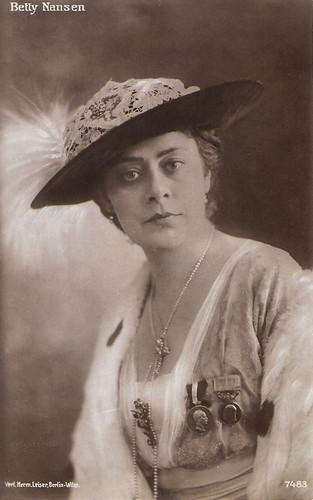
German postcard by Verlag Hermann Leiser, Berlin-Wilm., no. 7483.
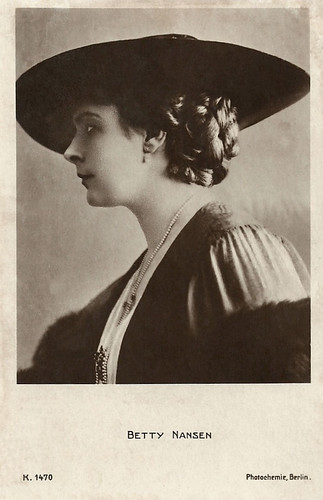
German postcard by Photochemie, Berlin, no. K. 1470.
The primadonna of the Copenhagen theatre
Betty Nansen née Betty Anna Maria Müller in 1873 – was the daughter of actor, theatre manager, and stage director at the Dagmarteatret Frederik Carl Christian Oscar Müller and his wife, actress Maria Petrine Petersen.
In 1892 Nansen entered the theatre school of Det kongelige Teater (Royal Danish Theatre). In 1893 she debuted in Victorien Sardou’s 'Dora' at Copenhagen’s Casino Theater, after which she played Magda in the German play 'Hjemmet' (Heimat/Homeland) by Hermann Sudermann.
She soon became the primadonna of the Copenhagen theatre. Between 1896 and 1899 she was employed at The Royal Theatre, debuting as Martha Bernick in Henrik Ibsen’s 'Samfundets støtter' (Pillars of Society) and playing also Bødvild in 'Vølund Smed' (Wayland the Smith).
She then moved to the Dagmarteatret, where she had her real breakthrough between 1899 and 1903. She acted in all kinds of plays such as the Norwegian play 'Paul Lange og Tora Parsberg'. She had individual guest performances at the Nationaltheatret i (National Theatre) in Norway in June 1902, October 1903, and May 1910.
Furthermore, she visited her Nationaltheatret in Spring 1903 as the head of a Danish tour, and again in August-September 1926, she visited Den Nationale Scene in Norway, this time with her second husband Henrik Bentzon. Nansen left the Dagmar Theatre in 1903 when she couldn’t stand Martinius Nielsen's despotic leadership anymore.
She went to the People's Theatre, where she became the first female Copenhagen theatre manager and joined this as co-director as well until 1905. Here she played the title role in 'Agnes' which was one of her greatest successes in her early career. In the years 1907-1910, she was again an actress at the Royal Theatre. She visited the Norwegian and Swedish scenes and then returned to the Dagmarteatret until 1911.
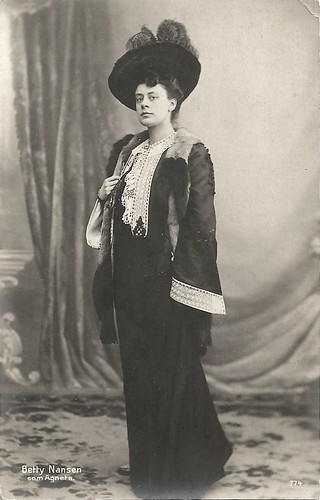
Danish postcard by Ed. Paul Heckscher, no. 774. Photo: Mary Steen. Betty Nansen in the play 'Agnete'. In 1903 joined the People's Theatre, where she became the first female Copenhagen theatre manager and joined this as co-director as well until 1905. Here she played the title role in 'Agnete' (Agnes), which was one of her greatest successes in her early career.
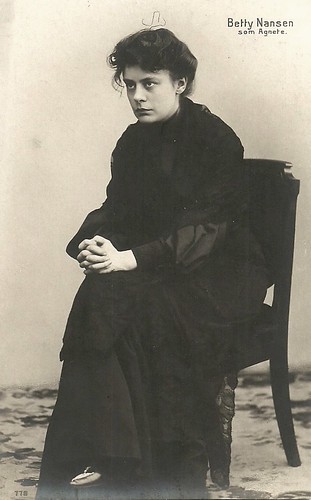
Danish postcard by Ed. Paul Heckscher, no. 778. Photo: Mary Steen. Betty Nansen in the play 'Agnete'.
Acting in a few Hollywood films for Fox
In 1913 Betty Nansen debuted in film in the Nordisk production Bristet lykke/A Paradise Lost (August Blom, 1913), with Olaf Fönss and Poul Reumert. Nansen plays the wife of a rich attorney (Fönss), who is deluded her husband doesn’t care about her anymore, only about his work. She starts an affair with a baron, who proves to be a dangerous robber.
More films at Nordisk followed, mostly directed by the prolific August Blom, some by Holger-Madsen or Robert Dinesen . These included Prinsesse Elena/Princess Helena (Holger-Madsen, 1913) with Sven Aggerholm, Af elskovs nåde/Acquitted (August Blom, 1913) with Adam Poulsen, Moderen/The Mother (Robert Dinesen, 1913) with Nicolai Johannsen, and Hammerslaget (Robert Dinesen, 1913) with Johannsen and Aggerholm.
In 1914 followed Sønnen/Her Son (Agust Blom, 1914) with Carl Lauritzen and Arne Weel, Revolutionsbryllup/A Revolution Marriage (August Blom, 1914) with Valdemar Psilander and Nicolai Johannsen, Eventyrersken/Exiled (August Blom, 1914) with Aage Hertel, Under skæbnens hjul (Holger-Madsen, 1914), and finally En ensome kvinde/The Doctor’s Legacy (August Blom, 1914) with Frederik Jacobsen, which was only released in 1917.
In 1914 Nansen went to the United States where she tried to forge a career and acted in a few films for Fox, including starring roles in The Celebrated Scandal (released 1915), Anna Karenina (1915), A Woman's Resurrection (1915), and The Song of Hate (1915).
While Should a Mother Tell, based on a story and script by Rex Ingram , dealt with a mother who must choose between the happiness of her 16-year old daughter and innocent man, The Song of Hate was simply an adaptation by Ingram of Sardou’s play 'Tosca' (made even more famous by Puccini’s opera), with Nansen as Floria Tosca and Arthur Hoops as Scarpia. All these films were directed by J. Gordon Edwards. The films were, however, no success.
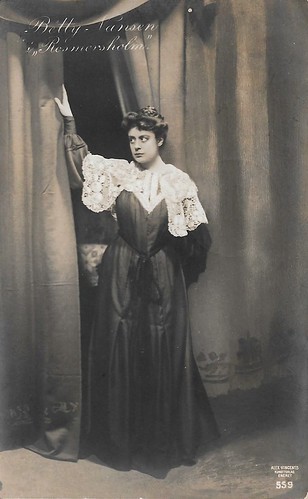
Danish postcard by Alex Vincents Kunstförlag, Eneret, no. 559. Betty Nansen in the Henrik Ibsen play 'Rosmersholm' (1906).
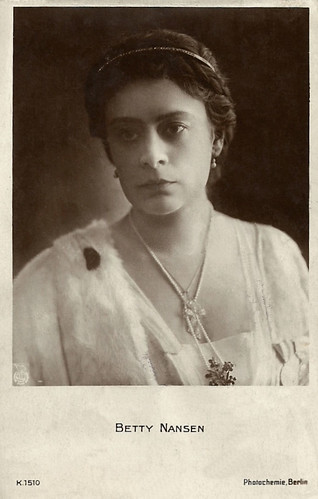
German postcard by Photochemie, Berlin, no. K. 1510. Photo: Nordisk Films.
Realising her dream of a new artistic scene in Frederiksberg
During these years, Betty Nansen did guest performances in both the Scandinavian capitals, but also in Russia, America, and France. In Paris, she played with Henrik Bentzon in 'Ghosts'.
In 1917 she bought the Alexandra Theatre at the Frederiksberg Allee and renamed it the Betty Nansen Theatre, creating one of the most literary theatres in the country. She sat at the helm and went as a talented stage director and administrator in the process of realising her dream of a new artistic scene in Frederiksberg.
The audience got the return of the prima donna already in the opening performance, a French comedy where Mrs. Director Nansen appeared as an exuberant young widow in a silver dress. Nansen remained head of the theatre until her death in 1943.
In 1936 something non-traditional happened when Stig Lommer had her perform in a show to the tune of Alexander's Ragtime Band. Betty Nansen surprised also with plans to expand the theatre, which henceforth would operate with a film company.
In her final years, Betty Nansen had plans for a film project, which she called the "Eternity film" - a modern film about the life of Jesus, where Henrik Bentzon was to play Christ and Nansen herself the Virgin Mary.
Betty Nansen was married in 1896 in Copenhagen with author and Gyldendal director Peter Nansen. The marriage lasted until 1912. In 1927, she was married to the 22 years younger Norwegian actor Henrik Bentzon. The marriage was dissolved in 1933.
Betty Nansen mingled often in the theatre politics debate. In the years 1935-1940, she was Chair of the Private Theaters Director Association. In 1907 Betty Nansen was awarded the medal Ingenio et Arti and in 1938 with the Order of Merit in gold. Along with Henrik Bentzon, she bought Kontumatshuset, the old Quarantine Station in Skagen, which they called "Strandgården". Betty Nansen died in 1943 and was buried in the dunes at Kontumatshuset.
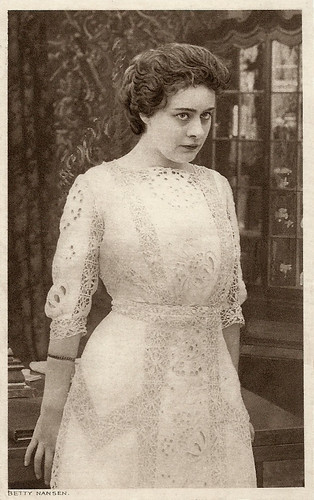
British postcard by the Vandyck Printers, Bristol, and London. Photo: The Ideal Film Renting Co., London.
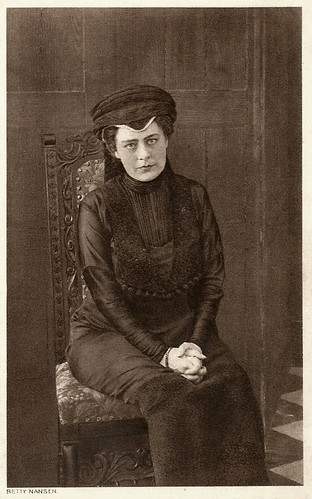
British postcard by the Vandyck Printers, Bristol, and London. Photo: The Ideal Film Renting Co., London.
Sources: Wikipedia (English and Danish), Danskefilm, and .

German postcard by Verlag Hermann Leiser, Berlin-Wilm., no. 7483.

German postcard by Photochemie, Berlin, no. K. 1470.
The primadonna of the Copenhagen theatre
Betty Nansen née Betty Anna Maria Müller in 1873 – was the daughter of actor, theatre manager, and stage director at the Dagmarteatret Frederik Carl Christian Oscar Müller and his wife, actress Maria Petrine Petersen.
In 1892 Nansen entered the theatre school of Det kongelige Teater (Royal Danish Theatre). In 1893 she debuted in Victorien Sardou’s 'Dora' at Copenhagen’s Casino Theater, after which she played Magda in the German play 'Hjemmet' (Heimat/Homeland) by Hermann Sudermann.
She soon became the primadonna of the Copenhagen theatre. Between 1896 and 1899 she was employed at The Royal Theatre, debuting as Martha Bernick in Henrik Ibsen’s 'Samfundets støtter' (Pillars of Society) and playing also Bødvild in 'Vølund Smed' (Wayland the Smith).
She then moved to the Dagmarteatret, where she had her real breakthrough between 1899 and 1903. She acted in all kinds of plays such as the Norwegian play 'Paul Lange og Tora Parsberg'. She had individual guest performances at the Nationaltheatret i (National Theatre) in Norway in June 1902, October 1903, and May 1910.
Furthermore, she visited her Nationaltheatret in Spring 1903 as the head of a Danish tour, and again in August-September 1926, she visited Den Nationale Scene in Norway, this time with her second husband Henrik Bentzon. Nansen left the Dagmar Theatre in 1903 when she couldn’t stand Martinius Nielsen's despotic leadership anymore.
She went to the People's Theatre, where she became the first female Copenhagen theatre manager and joined this as co-director as well until 1905. Here she played the title role in 'Agnes' which was one of her greatest successes in her early career. In the years 1907-1910, she was again an actress at the Royal Theatre. She visited the Norwegian and Swedish scenes and then returned to the Dagmarteatret until 1911.

Danish postcard by Ed. Paul Heckscher, no. 774. Photo: Mary Steen. Betty Nansen in the play 'Agnete'. In 1903 joined the People's Theatre, where she became the first female Copenhagen theatre manager and joined this as co-director as well until 1905. Here she played the title role in 'Agnete' (Agnes), which was one of her greatest successes in her early career.

Danish postcard by Ed. Paul Heckscher, no. 778. Photo: Mary Steen. Betty Nansen in the play 'Agnete'.
Acting in a few Hollywood films for Fox
In 1913 Betty Nansen debuted in film in the Nordisk production Bristet lykke/A Paradise Lost (August Blom, 1913), with Olaf Fönss and Poul Reumert. Nansen plays the wife of a rich attorney (Fönss), who is deluded her husband doesn’t care about her anymore, only about his work. She starts an affair with a baron, who proves to be a dangerous robber.
More films at Nordisk followed, mostly directed by the prolific August Blom, some by Holger-Madsen or Robert Dinesen . These included Prinsesse Elena/Princess Helena (Holger-Madsen, 1913) with Sven Aggerholm, Af elskovs nåde/Acquitted (August Blom, 1913) with Adam Poulsen, Moderen/The Mother (Robert Dinesen, 1913) with Nicolai Johannsen, and Hammerslaget (Robert Dinesen, 1913) with Johannsen and Aggerholm.
In 1914 followed Sønnen/Her Son (Agust Blom, 1914) with Carl Lauritzen and Arne Weel, Revolutionsbryllup/A Revolution Marriage (August Blom, 1914) with Valdemar Psilander and Nicolai Johannsen, Eventyrersken/Exiled (August Blom, 1914) with Aage Hertel, Under skæbnens hjul (Holger-Madsen, 1914), and finally En ensome kvinde/The Doctor’s Legacy (August Blom, 1914) with Frederik Jacobsen, which was only released in 1917.
In 1914 Nansen went to the United States where she tried to forge a career and acted in a few films for Fox, including starring roles in The Celebrated Scandal (released 1915), Anna Karenina (1915), A Woman's Resurrection (1915), and The Song of Hate (1915).
While Should a Mother Tell, based on a story and script by Rex Ingram , dealt with a mother who must choose between the happiness of her 16-year old daughter and innocent man, The Song of Hate was simply an adaptation by Ingram of Sardou’s play 'Tosca' (made even more famous by Puccini’s opera), with Nansen as Floria Tosca and Arthur Hoops as Scarpia. All these films were directed by J. Gordon Edwards. The films were, however, no success.

Danish postcard by Alex Vincents Kunstförlag, Eneret, no. 559. Betty Nansen in the Henrik Ibsen play 'Rosmersholm' (1906).

German postcard by Photochemie, Berlin, no. K. 1510. Photo: Nordisk Films.
Realising her dream of a new artistic scene in Frederiksberg
During these years, Betty Nansen did guest performances in both the Scandinavian capitals, but also in Russia, America, and France. In Paris, she played with Henrik Bentzon in 'Ghosts'.
In 1917 she bought the Alexandra Theatre at the Frederiksberg Allee and renamed it the Betty Nansen Theatre, creating one of the most literary theatres in the country. She sat at the helm and went as a talented stage director and administrator in the process of realising her dream of a new artistic scene in Frederiksberg.
The audience got the return of the prima donna already in the opening performance, a French comedy where Mrs. Director Nansen appeared as an exuberant young widow in a silver dress. Nansen remained head of the theatre until her death in 1943.
In 1936 something non-traditional happened when Stig Lommer had her perform in a show to the tune of Alexander's Ragtime Band. Betty Nansen surprised also with plans to expand the theatre, which henceforth would operate with a film company.
In her final years, Betty Nansen had plans for a film project, which she called the "Eternity film" - a modern film about the life of Jesus, where Henrik Bentzon was to play Christ and Nansen herself the Virgin Mary.
Betty Nansen was married in 1896 in Copenhagen with author and Gyldendal director Peter Nansen. The marriage lasted until 1912. In 1927, she was married to the 22 years younger Norwegian actor Henrik Bentzon. The marriage was dissolved in 1933.
Betty Nansen mingled often in the theatre politics debate. In the years 1935-1940, she was Chair of the Private Theaters Director Association. In 1907 Betty Nansen was awarded the medal Ingenio et Arti and in 1938 with the Order of Merit in gold. Along with Henrik Bentzon, she bought Kontumatshuset, the old Quarantine Station in Skagen, which they called "Strandgården". Betty Nansen died in 1943 and was buried in the dunes at Kontumatshuset.

British postcard by the Vandyck Printers, Bristol, and London. Photo: The Ideal Film Renting Co., London.

British postcard by the Vandyck Printers, Bristol, and London. Photo: The Ideal Film Renting Co., London.
Sources: Wikipedia (English and Danish), Danskefilm, and .
Published on March 16, 2021 23:00
March 15, 2021
The Pisorno Studios in Tirrenia
The Tirrenia Studios or in Italian 'Tirrenia, Stabilimenti cinematografici', also known at one point as the Pisorno Studios, is a film studio complex located in the Italian coastal town of Tirrenia in Tuscany. The studios, constructed in 1933-1934, were intended, along with the Fert Studios in Turin, to provide northern competition to the increasingly dominant Cines Studios in Rome. Like Latina, Littoria, and Pontinia, Tirrenia was a new town that had grown with the support of Italy's Fascist regime. Italian film production was booming following an early 1930s slump, but Tirrenia quickly faced increasing competition from the large Cinecitta studios in Rome which were opened in 1937 as part of the Fascist's attempt to centralise film production in the capital. The Roman Scalera studios (1938) added to this competition. Nonetheless, the Pisorno studios continued to be used, sometimes facilitating location shooting nearby.
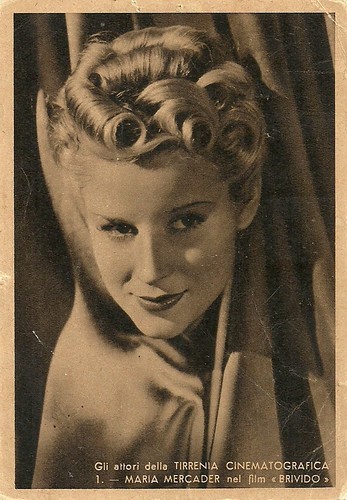
Italian postcard by Unione Fotoincisori Firenze. Photo: Prod. INCINE. Caption: Gli attori della Tirrenia Cinematografica (The actors of the Tirrenia film studio), no. 1. Maria Mercader in the film Brivido (Giacomo Gentilomo, 1941).
María Mercader (1918-2011) was a Spanish actress who acted in Spanish and Italian films, largely between 1939 and 1952. She was the second wife of Vittorio De Sica and mother of Christian and Manuel De Sica.
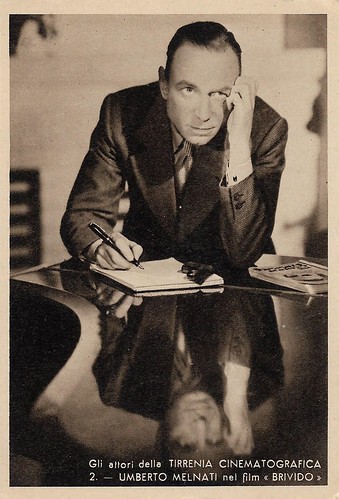
Italian postcard by Unione Fotoincisori Firenze. Photo: Prod. INCINE. Caption: Gli attori della Tirrenia Cinematografica (The actors of the Tirrenia film studio), no. 2. Umberto Melnati in the film Brivido (Giacomo Gentilomo, 1941). Photo: Gneme.
Though he also had various parts in dramas and precursors of the Giallo, Umberto Melnati (1897-1979) is mostly known for his screen comedies, in particular, the 'Telefoni Bianchi' comedies of the 1930s and 1940s. In these films, he often acted with Vittorio De Sica (Due cuori felici, Il signor Max, etc.), Alida Valli (Mille lire al mese), and others. Before, he had longtime acted on stage with De Sica and Checco Rissone. After the war, Melnati acted e.g. the lead in La valigia dei sogni (1953) by Luigi Comencini.
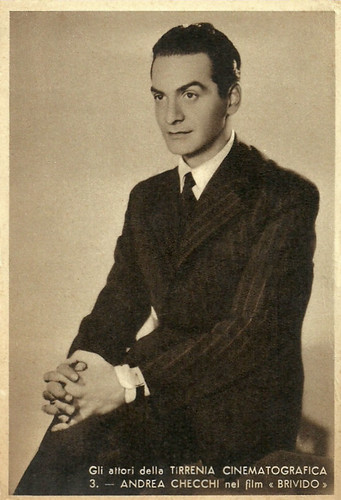
Italian postcard by Unione Fotoincisori Firenze. Photo: Prod. INCINE. Caption: Gli attori della Tirrenia Cinematografica (The actors of the Tirrenia film studio), no. 3. Andrea Checchi in the film Brivido (Giacomo Gentilomo, 1941). Photo: Gneme.
Andrea Checchi (1916-1974) was a prolific Italian film and television actor, who peaked in the early 1940s as a leading actor, while he had important supporting parts in post-war Neorealism and beyond.
The start of Mario Monicelli and the Tavianis
Initiators of the Tirrenia Studios were Giovanni and Edoardo Agnelli, grandfather and father of the more famous Gianni Agnelli (FIAT), together with director-producer-playwright Giovacchino Forzano. Forzano had made his claim with a blatant fascist propaganda film, Camicia nera (1933).
Sources differ what his first film at Pisorno was, some say Camicia nera, others claim it is Campo di maggio (1934), also shot in a German version. Afterward followed Forzano's Fiordalisi d’oro (1936), with Fosco Giachetti and Marie Bell , also shot in a French version by Forzano and Marc Cravenne as Sous la terreur, Colpo di vento (1936), with Ermete Zacconi and Dria Paola .
After that Forzano did films based on original scripts: Sei bambini ed il Perseo (1940), with Elena Zareschi and Augusto Di Giovanni, and Il re d’Inghilterra non paga (1941), with Silvana Jachino and Andrea Checchi . His last film, Piazza di San Sepolcro (1943), with Vivi Gioi and Rossano Brazzi, was never released.
Eugenio De Liguoro shot Piccola mia (1933), Enrico Guazzoni did La Signora Paradiso (1934), while French filmmaker Jean Epstein shot Cuor di vagabondo (1936). Other foreign filmmakers discovered the studios too, such as Abel Gance for Ladro di donne/Le voleur de femmes (1938), Luis Trenker for L'imperatore di California/Der Kaiser von Kalifornien (1936), and Gustav Machaty for Ballerine (1937).
Mario Zampi, who had produced Forzano's WWI drama Tredici uomini e un cannone in 1936, two years after he also directed at Pisorno an all British version of this, 13 Men and a Gun (1938). It was his calling card to the British film industry, where he was particularly active as a producer and director in the late 1940s to early 1960s.
Thanks to a friendship with Forzano's son, future director Mario Monicelli started his career at Pisorno, while the Taviani brothers knew the studio in their youth as well. Meanwhile, other directors worked too at the vast territory of the Tirrenia studios, which offered all the necessary modern equipment.
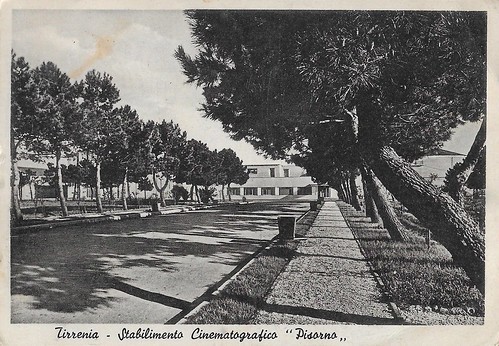
Italian postcard by Ed. Berti Cafiero, Tirrenia / Alterocca, Terni, no. 20880. The Pisorno film studios at Tirrenia. Card mailed in 1951.
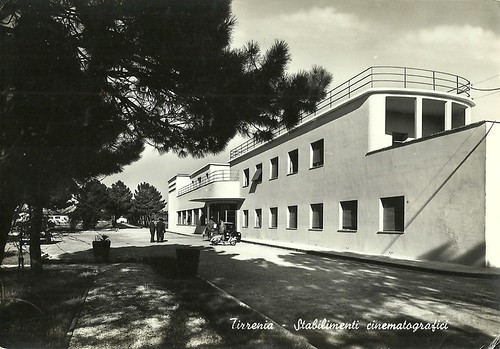
Italian postcard by Alterocca, Terni / Ed. Tabacchi Torelli, no. 20881. The Pisorno film studios at Tirrenia, between Livorno and Pisa.
Carlo Ponti and his Comopolitan
During the later stages of the Second World War, the Tirrenia Studios were requisitioned for other use first by the Germans and later by the Allies.
In the post-war years, the studios returned to film production, although this has been sporadic. Forzano's son, Andrea Forzano, meanwhile had taken over the studio and made a few films there himself, such as Imbarco a mezzanotte (1952), with Paul Muni and Luisa Rossi.
In the 1960s the producer Carlo Ponti took over the studios with his company Cosmopolitan. His first film there was Madame Sans-Gêne (Christian Jaque, 1961), with Sophia Loren and Robert Hossein .
Other memorable titles are Cyrano e d’Artagnan (Abel Gance, 1963), with Jean-Pierre Cassel and José Ferrer, and I sequestrati di Altona (Vittorio De Sica, 1968), with Sophia Loren , Fredrich March, and Maximilian Schell .
Still, film production became scarce at the Tirrenia studios. Ponti preferred other studios and thought the studio was too expensive, so by the late 1960s, the complex closed down.
Despite attempts to turn it into TV studios of the RAI, a tourist resort, or a sports center, nothing came of the ideas. The Taviani brothers made a tribute to the studios in their film Good Morning Babilonia (1987). In 2016 an exhibition on the Tirrenia Studios was made in Pisa, at Palazzo Blu. All in all some 160 films were made at the Tirrenia studios, the last one being L'assoluto naturale (1969) by Mauro Bolognini.
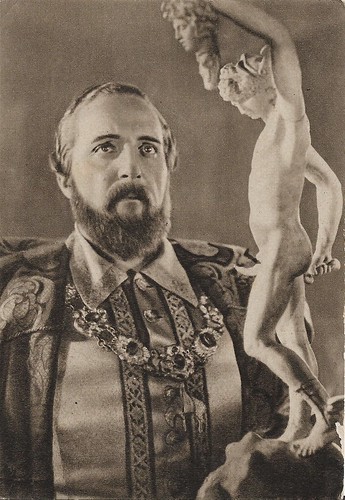
Italian postcard. Postcard for Sei bambine ed il Perseo (Giovacchino Forzano, 1939), shot at the Pisorno studios at Tirrenia and based on the life of Benvenuto Cellini. Produced by Pisorno Cinematografica and distributed by S.A. Cinematografica Tirrenia. The actor depicted here may be Manlio Mannozzi, who plays Cosimo De' Medici. He wears the Order of the Golden Fleece, which Cosimo De' Medici obtained in 1546.
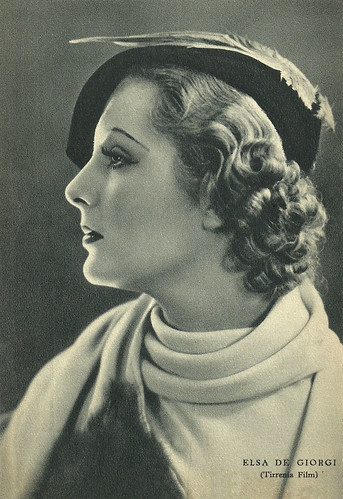
Italian postcard by Rizzoli, Milano, 1938. Photo: Tirrenia Film.
Elsa De Giorgi (1914-1997) was an Italian writer, director, art director, and Italian stage and screen actress.
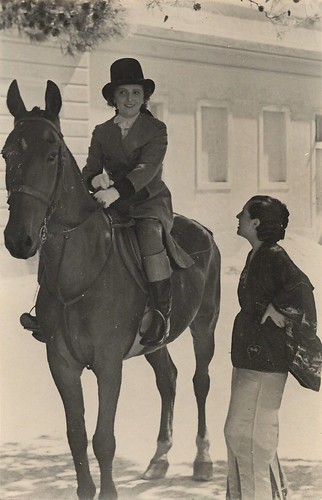
Vintage photo-postcard. Marie Bell horse riding while acting at the Pisorno film studios at Tirrenia, near Livorno. August 1935. The photo may have been taken during the shooting of the multi-version film Sous la terreur/Fiordalisi d'oro, shot in 1935-1936 at the Tirrenia studios. The Italian version was shot by Giovacchino Forzano, the French one by Marc Cravenne and Forzano.
Sources: Franco Baccarini (Pressitalia - Italian), Ansa (Italian) and Wikipedia.

Italian postcard by Unione Fotoincisori Firenze. Photo: Prod. INCINE. Caption: Gli attori della Tirrenia Cinematografica (The actors of the Tirrenia film studio), no. 1. Maria Mercader in the film Brivido (Giacomo Gentilomo, 1941).
María Mercader (1918-2011) was a Spanish actress who acted in Spanish and Italian films, largely between 1939 and 1952. She was the second wife of Vittorio De Sica and mother of Christian and Manuel De Sica.

Italian postcard by Unione Fotoincisori Firenze. Photo: Prod. INCINE. Caption: Gli attori della Tirrenia Cinematografica (The actors of the Tirrenia film studio), no. 2. Umberto Melnati in the film Brivido (Giacomo Gentilomo, 1941). Photo: Gneme.
Though he also had various parts in dramas and precursors of the Giallo, Umberto Melnati (1897-1979) is mostly known for his screen comedies, in particular, the 'Telefoni Bianchi' comedies of the 1930s and 1940s. In these films, he often acted with Vittorio De Sica (Due cuori felici, Il signor Max, etc.), Alida Valli (Mille lire al mese), and others. Before, he had longtime acted on stage with De Sica and Checco Rissone. After the war, Melnati acted e.g. the lead in La valigia dei sogni (1953) by Luigi Comencini.

Italian postcard by Unione Fotoincisori Firenze. Photo: Prod. INCINE. Caption: Gli attori della Tirrenia Cinematografica (The actors of the Tirrenia film studio), no. 3. Andrea Checchi in the film Brivido (Giacomo Gentilomo, 1941). Photo: Gneme.
Andrea Checchi (1916-1974) was a prolific Italian film and television actor, who peaked in the early 1940s as a leading actor, while he had important supporting parts in post-war Neorealism and beyond.
The start of Mario Monicelli and the Tavianis
Initiators of the Tirrenia Studios were Giovanni and Edoardo Agnelli, grandfather and father of the more famous Gianni Agnelli (FIAT), together with director-producer-playwright Giovacchino Forzano. Forzano had made his claim with a blatant fascist propaganda film, Camicia nera (1933).
Sources differ what his first film at Pisorno was, some say Camicia nera, others claim it is Campo di maggio (1934), also shot in a German version. Afterward followed Forzano's Fiordalisi d’oro (1936), with Fosco Giachetti and Marie Bell , also shot in a French version by Forzano and Marc Cravenne as Sous la terreur, Colpo di vento (1936), with Ermete Zacconi and Dria Paola .
After that Forzano did films based on original scripts: Sei bambini ed il Perseo (1940), with Elena Zareschi and Augusto Di Giovanni, and Il re d’Inghilterra non paga (1941), with Silvana Jachino and Andrea Checchi . His last film, Piazza di San Sepolcro (1943), with Vivi Gioi and Rossano Brazzi, was never released.
Eugenio De Liguoro shot Piccola mia (1933), Enrico Guazzoni did La Signora Paradiso (1934), while French filmmaker Jean Epstein shot Cuor di vagabondo (1936). Other foreign filmmakers discovered the studios too, such as Abel Gance for Ladro di donne/Le voleur de femmes (1938), Luis Trenker for L'imperatore di California/Der Kaiser von Kalifornien (1936), and Gustav Machaty for Ballerine (1937).
Mario Zampi, who had produced Forzano's WWI drama Tredici uomini e un cannone in 1936, two years after he also directed at Pisorno an all British version of this, 13 Men and a Gun (1938). It was his calling card to the British film industry, where he was particularly active as a producer and director in the late 1940s to early 1960s.
Thanks to a friendship with Forzano's son, future director Mario Monicelli started his career at Pisorno, while the Taviani brothers knew the studio in their youth as well. Meanwhile, other directors worked too at the vast territory of the Tirrenia studios, which offered all the necessary modern equipment.

Italian postcard by Ed. Berti Cafiero, Tirrenia / Alterocca, Terni, no. 20880. The Pisorno film studios at Tirrenia. Card mailed in 1951.

Italian postcard by Alterocca, Terni / Ed. Tabacchi Torelli, no. 20881. The Pisorno film studios at Tirrenia, between Livorno and Pisa.
Carlo Ponti and his Comopolitan
During the later stages of the Second World War, the Tirrenia Studios were requisitioned for other use first by the Germans and later by the Allies.
In the post-war years, the studios returned to film production, although this has been sporadic. Forzano's son, Andrea Forzano, meanwhile had taken over the studio and made a few films there himself, such as Imbarco a mezzanotte (1952), with Paul Muni and Luisa Rossi.
In the 1960s the producer Carlo Ponti took over the studios with his company Cosmopolitan. His first film there was Madame Sans-Gêne (Christian Jaque, 1961), with Sophia Loren and Robert Hossein .
Other memorable titles are Cyrano e d’Artagnan (Abel Gance, 1963), with Jean-Pierre Cassel and José Ferrer, and I sequestrati di Altona (Vittorio De Sica, 1968), with Sophia Loren , Fredrich March, and Maximilian Schell .
Still, film production became scarce at the Tirrenia studios. Ponti preferred other studios and thought the studio was too expensive, so by the late 1960s, the complex closed down.
Despite attempts to turn it into TV studios of the RAI, a tourist resort, or a sports center, nothing came of the ideas. The Taviani brothers made a tribute to the studios in their film Good Morning Babilonia (1987). In 2016 an exhibition on the Tirrenia Studios was made in Pisa, at Palazzo Blu. All in all some 160 films were made at the Tirrenia studios, the last one being L'assoluto naturale (1969) by Mauro Bolognini.

Italian postcard. Postcard for Sei bambine ed il Perseo (Giovacchino Forzano, 1939), shot at the Pisorno studios at Tirrenia and based on the life of Benvenuto Cellini. Produced by Pisorno Cinematografica and distributed by S.A. Cinematografica Tirrenia. The actor depicted here may be Manlio Mannozzi, who plays Cosimo De' Medici. He wears the Order of the Golden Fleece, which Cosimo De' Medici obtained in 1546.

Italian postcard by Rizzoli, Milano, 1938. Photo: Tirrenia Film.
Elsa De Giorgi (1914-1997) was an Italian writer, director, art director, and Italian stage and screen actress.

Vintage photo-postcard. Marie Bell horse riding while acting at the Pisorno film studios at Tirrenia, near Livorno. August 1935. The photo may have been taken during the shooting of the multi-version film Sous la terreur/Fiordalisi d'oro, shot in 1935-1936 at the Tirrenia studios. The Italian version was shot by Giovacchino Forzano, the French one by Marc Cravenne and Forzano.
Sources: Franco Baccarini (Pressitalia - Italian), Ansa (Italian) and Wikipedia.
Published on March 15, 2021 23:00
March 14, 2021
Lionel Barrymore
American actor Lionel Barrymore (1878-1954) was first seen on the silver screen in 1908. Between 1911 and 1917, Lionel made 93 films. Later, at MGM, he worked non-stop in the most famous films during the 1930s, 1940s, and 1950s. Lionel received an Oscar for A Free Soul (1930).
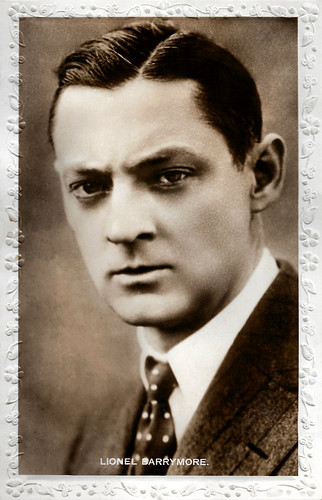
British "Real Photograph" postcard.
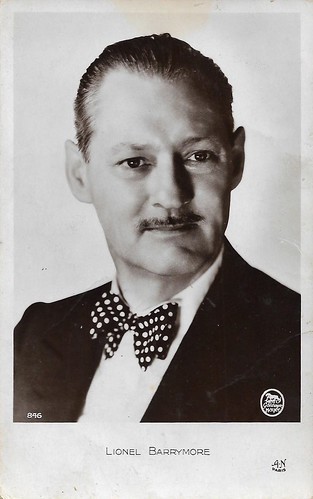
French postcard by A.N. (A. Noyer), Paris, no. 846. Photo: Metro-Goldwyn-Mayer.
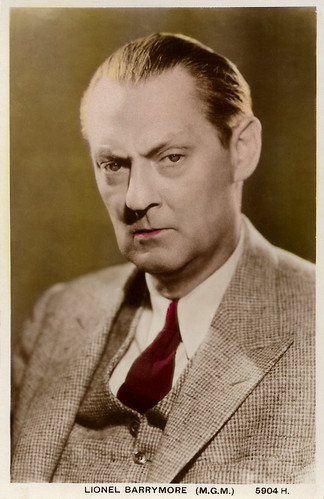
British postcard by Valentine's, no. 5904 H. Photo: M.G.M. (Metro Goldwyn Mayer).
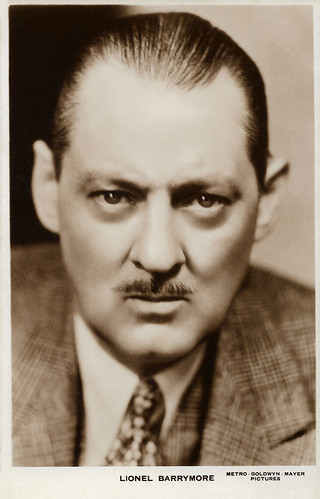
British Real Photograph postcard. Photo: Metro-Goldwyn-Mayer Pictures.
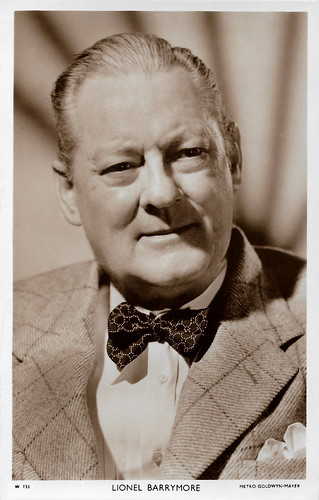
British postcard in the Picturegoer Series, London, no. W 733. Photo: MGM (Metro Goldwyn Mayer).
A real stage family
Lionel Barrymore was born Lionel Herbert Blythe in Philadelphia, Pennsylvania, in 1878. His family was a real stage family: his mother, Georgiana Drew, was an actress, and his grandfather was legendary theater actor John Drew.
His sister was Ethel Barrymore and his brother was John Barrymore. He first acted with his kid brother John in the 1905 play 'Pantaloon'.
Lionel was first seen on the silver screen in 1908. It wasn't until 3 years later, in 1911, that he really became a film actor at Biograph under the direction of D.W. Griffith . Barrymore made The Battle (1911), The New York Hat (1912), and Friends and Three Friends (1913). In 1915 he co-starred with Lillian Russell in a film called Wildfire, one of the legendary Russell's few film appearances. He acted in more than 60 silent films with Griffth.
In addition to acting at Biograph, Lionel also tried his hand at directing. At Metro Pictures, he helmed many pictures, including directing his sister Ethel in Life's Whirlpool (1917). In 1923, Barrymore and Irene Fenwick went to Italy to film The Eternal City (George Fitzmaurice, 1923) for Metro Pictures in Rome, combining work with their honeymoon.
He occasionally freelanced, returning to Griffith in 1924 to film America (D.W. Griffith, 1924), starring Carol Dempster. In 1924, he also went to Germany to star opposite Ivy Duke and Werner Krauss in the Anglo-German co-production Decameron Nights (Herbert Wilcox, 1924), based on the novel Decameron by Giovanni Boccaccio, and filmed at Ufa's Babelsberg studios outside of Berlin.
In 1926, Lionel joined MGM. He was their favourite and therefore worked non-stop in the most famous films. Famous silent films on his resumé are The Temptress (Fred Niblo, 1928) with Greta Garbo and Sadie Thompson (George Walsh, 1928) with Gloria Swanson .
He also proved himself as a director in the period from 1929-1931. He directed John Gilbert in His Glorious Night (1929) and guided Ruth Chatterton to consideration for an Oscar in Madame X (1929), for which he garnered his own Oscar nod as Best director.
In 1930, Lionel received an Academy Award for his role in the film A Free Soul (Clarence Brown, 1930) with Norma Shearer , Leslie Howard , and Clark Gable .
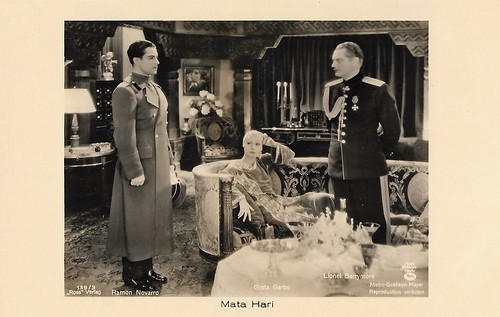
German postcard by Ross Verlag, Berlin, no. 139/3. Photo: Metro-Goldwyn-Mayer. Greta Garbo , Ramon Novarro , and Lionel Barrymore in Mata Hari (George Fitzmaurice, 1931).
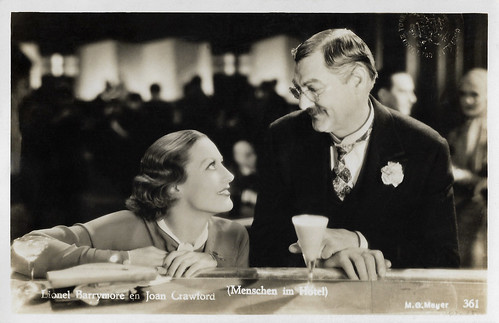
Dutch postcard by JosPe, no. 361. Photo: MGM. Joan Crawford and Lionel Barrymore in Grand Hotel (Edmund Goulding, 1932).
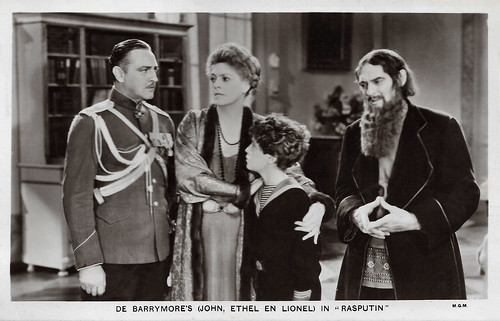
Dutch postcard for Rembrandt Theater, Utrecht, 1933. Photo: M.G.M. (Metro-Goldwyn-Mayer). John Barrymore, Ethel Barrymore, and Lionel Barrymore in Rasputin and the Empress (Richard Boleslavsky, 1932).
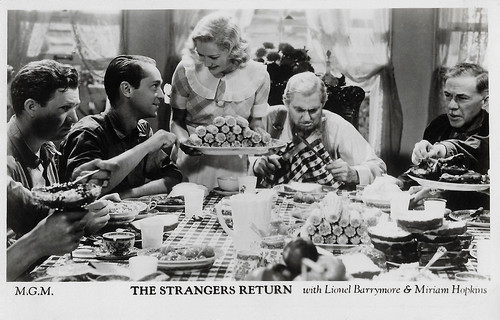
British postcard by Film Weekly. Photo: MGM. Miriam Hopkins , Stuart Erwin, Franchot Tone, and Lionel Barrymore in The Stranger's Return (King Vidor, 1933).
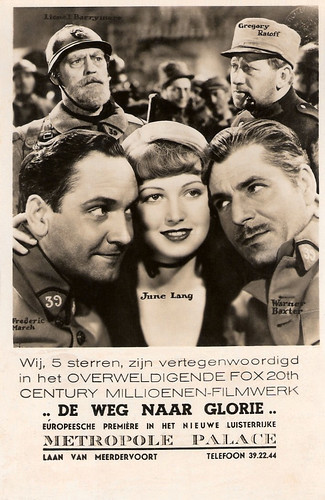
Dutch postcard for Metropole Palace, Den Haag (The Hague). Photos: 20th Century Fox. Fredric March, June Lang, Warner Baxter, Lionel Barrymore, and Gregory Ratoff in The Road to Glory (Howard Hawks, 1936). Caption: We, 5 stars, are represented in the overwhelming Fox 20th Century millions-film work The Way to Glory. European premiere in the new glorious Metropole Palace, Laan van Meerdervoort, telephone 39.22.44.
The third main actor of the cast
Lionel Barrymore was most famous in the 1930s, 1940s, and 1950s. Barrymore appeared in Mata Hari (George Fitzmaurice, 1931) with Greta Garbo and Ramon Novarro .
With Garbo, he also appeared in Grand Hotel (Edmund Goulding, 1932) with an all-star cast including Joan Crawford , Wallace Beery , and Lionel's brother John Barrymore. Lionel reunited with his brother John in another classic, Dinner at Eight (George Cukor, 1933), again with an all-star cast including Wallace Beery, Marie Dressler, and Jean Harlow .
His other films of that decade include Treasure Island (Victor Fleming 1934) again with Beery, Camille (George Cukor, 1936) with Garbo, Saratoga (Jack Conway, 1937) with Clark Gable and Jean Harlow , and Captains Courageous (Victor Fleming, 1937) with Spencer Tracy.
For director Frank Capra, he acted in You Can't Take It with You (Frank Capra, 1938) with James Stewart and Jean Arthur, and the popular Christmas film It's a Wonderful Life (Frank Capra, 1946) again with Stewart. He was well-known for playing Doctor Gillespie in the Doctor Kildare films of the 1930s and 1940s.
Often, Barrymore was the third main actor of the cast. Among his last films were Duel in the Sun (King Vidor, 1946), Key Largo (John Huston, 1948), Down to the Sea in Ships (Henry Hathaway, 1949), and Right Cross (John Sturges, 1950).
By then, Barrymore was disabled, having broken his hip twice, with his deteriorating condition exacerbated by arthritis. He played his later roles in a wheelchair. His final film was the musical comedy Main Street to Broadway (Tay Garnett, 1953), in which he appeared with his sister Ethel.
He worked as an actor until his death in Van Nuys, California, in 1954. Lionel Barrymore's family remained a real theatre and film family: he was the uncle of John Drew Barrymore and the great uncle of Drew Barrymore.
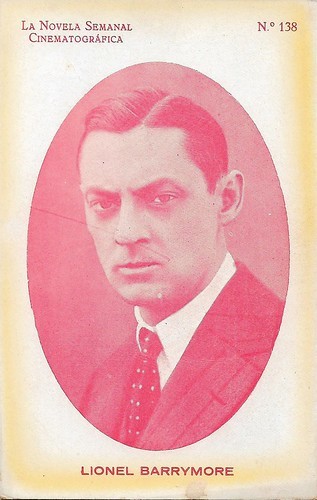
Spanish collector's card by La Novela Semanal Cinematografica, no. 138.
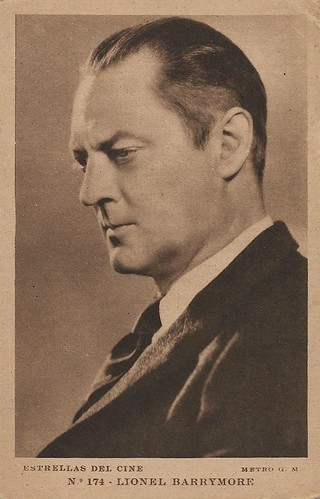
Spanish postcard in the Estrellas del cine series by Editorial Grafica, Barcelona, no. 174. Photo: Metro-Goldwyn-Mayer.
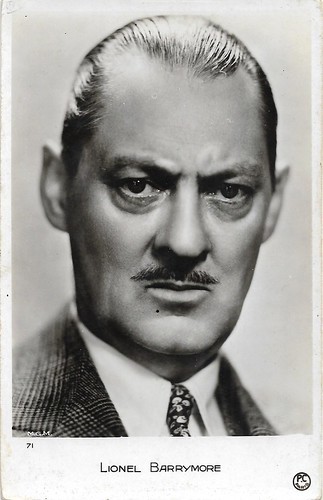
French postcard by P.C., Paris, no. 71. Photo: MGM.
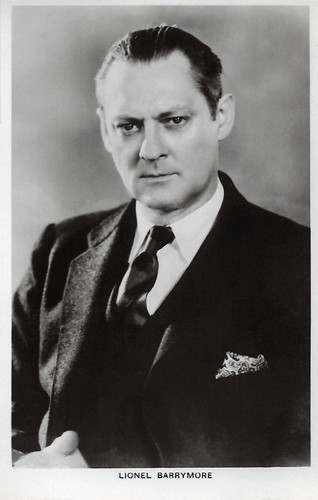
British Real Photograph postcard in the Picturegoer Series, London, no. 632.
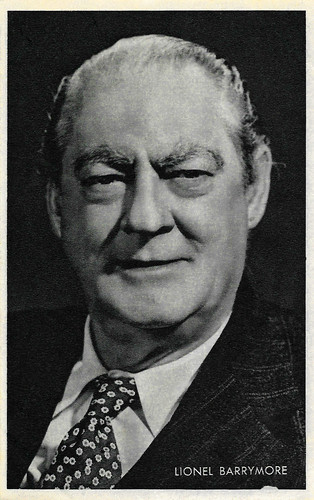
Belgian Collectors Card by Kwatta, Bois-d'Haine, no. C. 133. Photo: M.G.M. (Metro-Goldwyn-Mayer). Serie C. 99-196.
Sources: (IMDb), Wikipedia, and .

British "Real Photograph" postcard.

French postcard by A.N. (A. Noyer), Paris, no. 846. Photo: Metro-Goldwyn-Mayer.

British postcard by Valentine's, no. 5904 H. Photo: M.G.M. (Metro Goldwyn Mayer).

British Real Photograph postcard. Photo: Metro-Goldwyn-Mayer Pictures.

British postcard in the Picturegoer Series, London, no. W 733. Photo: MGM (Metro Goldwyn Mayer).
A real stage family
Lionel Barrymore was born Lionel Herbert Blythe in Philadelphia, Pennsylvania, in 1878. His family was a real stage family: his mother, Georgiana Drew, was an actress, and his grandfather was legendary theater actor John Drew.
His sister was Ethel Barrymore and his brother was John Barrymore. He first acted with his kid brother John in the 1905 play 'Pantaloon'.
Lionel was first seen on the silver screen in 1908. It wasn't until 3 years later, in 1911, that he really became a film actor at Biograph under the direction of D.W. Griffith . Barrymore made The Battle (1911), The New York Hat (1912), and Friends and Three Friends (1913). In 1915 he co-starred with Lillian Russell in a film called Wildfire, one of the legendary Russell's few film appearances. He acted in more than 60 silent films with Griffth.
In addition to acting at Biograph, Lionel also tried his hand at directing. At Metro Pictures, he helmed many pictures, including directing his sister Ethel in Life's Whirlpool (1917). In 1923, Barrymore and Irene Fenwick went to Italy to film The Eternal City (George Fitzmaurice, 1923) for Metro Pictures in Rome, combining work with their honeymoon.
He occasionally freelanced, returning to Griffith in 1924 to film America (D.W. Griffith, 1924), starring Carol Dempster. In 1924, he also went to Germany to star opposite Ivy Duke and Werner Krauss in the Anglo-German co-production Decameron Nights (Herbert Wilcox, 1924), based on the novel Decameron by Giovanni Boccaccio, and filmed at Ufa's Babelsberg studios outside of Berlin.
In 1926, Lionel joined MGM. He was their favourite and therefore worked non-stop in the most famous films. Famous silent films on his resumé are The Temptress (Fred Niblo, 1928) with Greta Garbo and Sadie Thompson (George Walsh, 1928) with Gloria Swanson .
He also proved himself as a director in the period from 1929-1931. He directed John Gilbert in His Glorious Night (1929) and guided Ruth Chatterton to consideration for an Oscar in Madame X (1929), for which he garnered his own Oscar nod as Best director.
In 1930, Lionel received an Academy Award for his role in the film A Free Soul (Clarence Brown, 1930) with Norma Shearer , Leslie Howard , and Clark Gable .

German postcard by Ross Verlag, Berlin, no. 139/3. Photo: Metro-Goldwyn-Mayer. Greta Garbo , Ramon Novarro , and Lionel Barrymore in Mata Hari (George Fitzmaurice, 1931).

Dutch postcard by JosPe, no. 361. Photo: MGM. Joan Crawford and Lionel Barrymore in Grand Hotel (Edmund Goulding, 1932).

Dutch postcard for Rembrandt Theater, Utrecht, 1933. Photo: M.G.M. (Metro-Goldwyn-Mayer). John Barrymore, Ethel Barrymore, and Lionel Barrymore in Rasputin and the Empress (Richard Boleslavsky, 1932).

British postcard by Film Weekly. Photo: MGM. Miriam Hopkins , Stuart Erwin, Franchot Tone, and Lionel Barrymore in The Stranger's Return (King Vidor, 1933).

Dutch postcard for Metropole Palace, Den Haag (The Hague). Photos: 20th Century Fox. Fredric March, June Lang, Warner Baxter, Lionel Barrymore, and Gregory Ratoff in The Road to Glory (Howard Hawks, 1936). Caption: We, 5 stars, are represented in the overwhelming Fox 20th Century millions-film work The Way to Glory. European premiere in the new glorious Metropole Palace, Laan van Meerdervoort, telephone 39.22.44.
The third main actor of the cast
Lionel Barrymore was most famous in the 1930s, 1940s, and 1950s. Barrymore appeared in Mata Hari (George Fitzmaurice, 1931) with Greta Garbo and Ramon Novarro .
With Garbo, he also appeared in Grand Hotel (Edmund Goulding, 1932) with an all-star cast including Joan Crawford , Wallace Beery , and Lionel's brother John Barrymore. Lionel reunited with his brother John in another classic, Dinner at Eight (George Cukor, 1933), again with an all-star cast including Wallace Beery, Marie Dressler, and Jean Harlow .
His other films of that decade include Treasure Island (Victor Fleming 1934) again with Beery, Camille (George Cukor, 1936) with Garbo, Saratoga (Jack Conway, 1937) with Clark Gable and Jean Harlow , and Captains Courageous (Victor Fleming, 1937) with Spencer Tracy.
For director Frank Capra, he acted in You Can't Take It with You (Frank Capra, 1938) with James Stewart and Jean Arthur, and the popular Christmas film It's a Wonderful Life (Frank Capra, 1946) again with Stewart. He was well-known for playing Doctor Gillespie in the Doctor Kildare films of the 1930s and 1940s.
Often, Barrymore was the third main actor of the cast. Among his last films were Duel in the Sun (King Vidor, 1946), Key Largo (John Huston, 1948), Down to the Sea in Ships (Henry Hathaway, 1949), and Right Cross (John Sturges, 1950).
By then, Barrymore was disabled, having broken his hip twice, with his deteriorating condition exacerbated by arthritis. He played his later roles in a wheelchair. His final film was the musical comedy Main Street to Broadway (Tay Garnett, 1953), in which he appeared with his sister Ethel.
He worked as an actor until his death in Van Nuys, California, in 1954. Lionel Barrymore's family remained a real theatre and film family: he was the uncle of John Drew Barrymore and the great uncle of Drew Barrymore.

Spanish collector's card by La Novela Semanal Cinematografica, no. 138.

Spanish postcard in the Estrellas del cine series by Editorial Grafica, Barcelona, no. 174. Photo: Metro-Goldwyn-Mayer.

French postcard by P.C., Paris, no. 71. Photo: MGM.

British Real Photograph postcard in the Picturegoer Series, London, no. 632.

Belgian Collectors Card by Kwatta, Bois-d'Haine, no. C. 133. Photo: M.G.M. (Metro-Goldwyn-Mayer). Serie C. 99-196.
Sources: (IMDb), Wikipedia, and .
Published on March 14, 2021 23:00
March 13, 2021
Before Hollywood: Edison
The Edison Manufacturing Company was founded in 1889 by the inventor and entrepreneur Thomas A. Edison. The company manufactured batteries, machinery and equipment, and also produced kinetoscope films. Edison's films were made by the Kinetograph Department of the Edison Manufacturing Company. The Edison Studios first produced kinetoscope films in Manhattan, then from 1905 in a studio in the Bronx. The pioneering film studio produced such silent films as Bicycle Trick Riding, No. 2 (1899), The Trick Cyclist (1901), and the first American film version of Frankenstein (1910). In 1911 the company's assets were assigned to Thomas A. Edison, Inc. The Edison Manufacturing Company was formally dissolved in 1926.
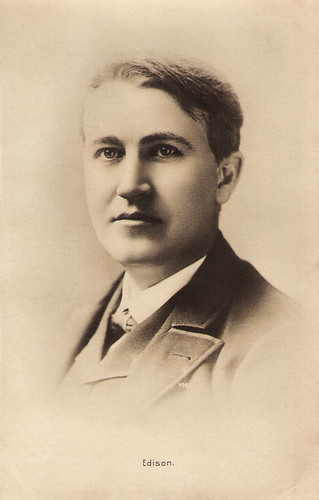
Vintage postcard.
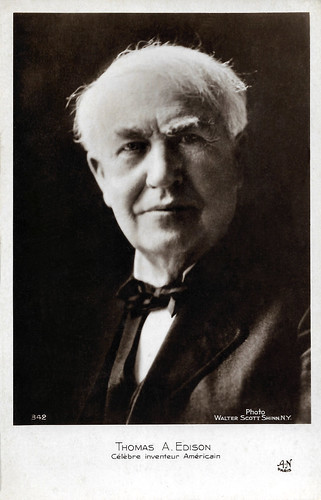
French postcard by A.N., Paris, no. 342. Photo: Walter Scott Shinn, New York.
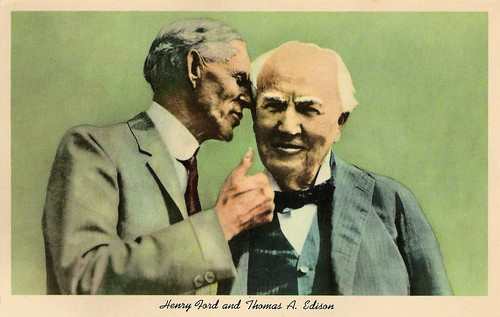
American postcard by Art Creation for the Henry Ford Museum and Greenfield Village, Dearborn, Michigan. Caption: Henry Ford and Thomas A. Edison in conversation at Greenfield Village, in 1928. Their friendship had begun in 1896 when Edison encouraged the then young and unknown Ford's automobile experiments. The deafness, which had afflicted the inventor since childhood, is evident in this pose, as Henry Ford speaks loudly in his ear.
The instigator of the exodus to Hollywood
Thomas Alva Edison was born in 1847 in Milan, Ohio, USA. His father, Samuel Edison, was of Dutch ancestry and his mother, Nancy Elliot, was of English descent. Thomas was home-schooled. He used a primitive cylinder and foil device to create the first known recording of a human voice (his own, reciting the poem 'Mary Had A Little Lamb'). Although he invented the cylinder recorder (phonograph), it was Emile Berliner who created the flat disc. Edison licensed the patent(s) from him.
Other inventions to his credit include cellophane tape, waxed paper, an improved version of the typewriter keyboard, and 'the electric pencil', a forerunner to the fax machine. He is often credited with the invention of the incandescent light bulb, but that is untrue; he only perfected it. Similar bulbs were already in existence but they were expensive, did not last long, and gave off a bad smell. By developing a low-cost, long-lasting, carbonized cotton filament, Edison made electrical light cheap enough to be financially practical.
Thomas Edison is credited with the invention of sprocketed cinema film. He also invented the Kinetograph camera and the peephole kinetoscope viewer. The Edison Manufacturing Company's earliest films were produced solely to demonstrate the use of the peephole viewer. The studio made several experimental short films, some lasting only several seconds, mostly to test his equipment. One film, Edison Kinetoscopic Record of a Sneeze (1894), features a man sneezing, runs for 1-1/2 seconds.
Many of Edison's experimental films were made in a small wooden building dubbed 'The Black Maria' because it resembled a police wagon of the same name. Edison's Black Maria was built on a lot next to his lab and office. The building, essentially a large wooden shed covered with tar paper, was small enough that it was mounted on circular tracks so it could be turned to accommodate sunlight through an opening in the roof. The original has long since burned down, but a reproduction of the structure is located at the Edison National Historic Site, a museum with a preserved laboratory facility in West Orange, New Jersey.
Edison himself played virtually no role in the production of individual films by his company which produced the first American film version of Frankenstein (J. Searle Dawley, 1910). Edison formed the Motion Picture Patent Company (MPPC), and teamed up with a few other prominent figures in film production, giving them a sort of monopoly on filmmaking. They wouldn't let other filmmakers use their technology, and they controlled the different steps of production. Supposedly, they even hired goons to enforce their monopoly. His attempts to force independent filmmakers to use his patented movie equipment resulted in an exodus of the film industry from the East Coast, where almost all films were produced, to California and a little town called Hollywoodland, now known as Hollywood.
The last years of Edison's life were plagued by financial failures, including plans to make houses out of poured formed concrete (it never caught on with the public) and making rubber from goldenrod (it decomposed too quickly). In 1928, he was awarded a Congressional Gold Meda. Thomas Edison was married to Mina Miller and Mary Stilwell. He died in 1931 in West Orange, New Jersey, USA. When he lay dying at his home in New Jersey, newspaper reporters were anxiously awaiting a sign from his wife of Edison's death. She signaled Edison's passing by turning a light ON, not off, in his bedroom. Edison's son allegedly captured his last breath in a glass jar. The jar is on display at the reconstructed Menlo Park at Greenfield Village in Dearborn, Michigan.
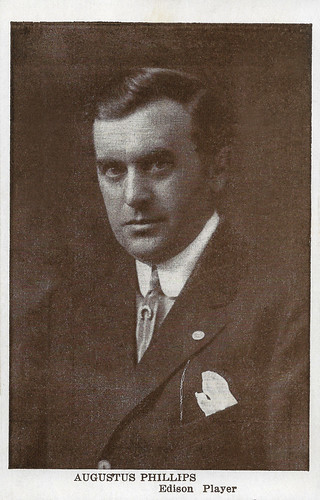
Vintage postcard. Photo: Edison.
American actor Augustus Phillips (1874-1944) appeared in 134 films between 1910 and 1921. He played Victor Frankenstein, as a young medical student in Frankenstein (J. Searle Dawley, 1910), the very first adaptation produced by the Edison company.
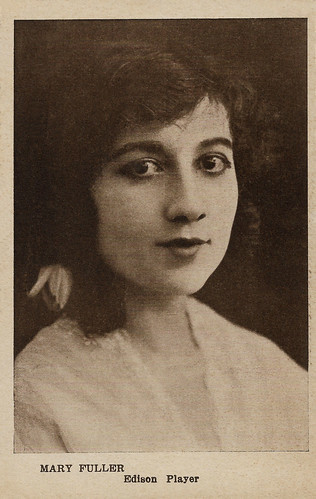
American postcard. Photo: Edison.
American actress Mary Fuller (1988-1973) started her film career at Vitagraph and had her breakthrough at Edison. At Universal, Fuller became a major early film star who rivaled Mary Pickford in popularity. In 1917, she left the film industry and ended her life in a mental hospital.
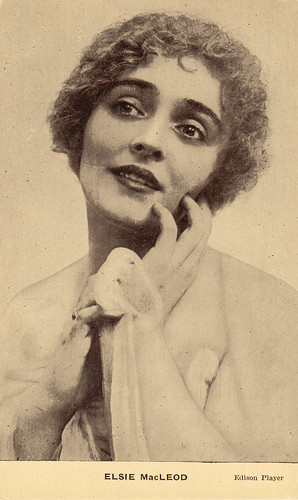
American postcard by Kraus Mfg. Photo: Edison. Collection: Marlene Pilaete.
Elsie MacLeod was an American film actress who worked in Hollywood in the 1910s and early 1920s. She was primarily known for her starring roles in short Edison comedies.
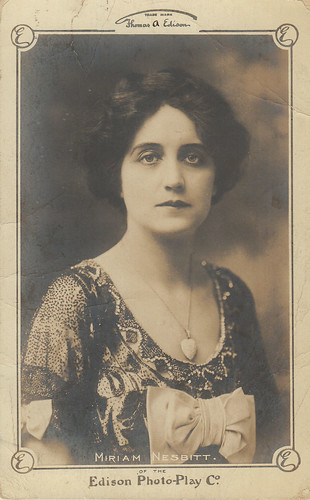
American postcard by Trade Mark Thomas A. Edison. Photo: Edison. Collection: Marlene Pilaete.
Miriam Nesbitt (1873-1954) was an American stage and film actress. Till 1917, she acted in over 140 silent films for the Edison Company.
The very first screen adaptation of Frankenstein
Probably the best-known film of the Edison Manufacturing Company is the short silent horror film Frankenstein (1910). This film paved the way for modern-day horror as we now know it. It was directed by J. Searle Dawley, who also wrote the one-reeler's screenplay, broadly basing his 'scenario' on Mary Shelley's 1818 novel 'Frankenstein; or, The Modern Prometheus'.
This short film is generally recognised by film historians as the first screen adaptation of Shelley's work. The small cast, who are not credited in the surviving 1910 print of the film, includes Augustus Phillips in his film debut as the young medical student Victor Frankenstein, Charles Ogle as Frankenstein's monster, and Mary Fuller as the doctor's fiancée.
Searle Dawley, working in his third year for Edison Studios, shot the film in three days at the company's Bronx facilities in New York City on 13, 15, and 17 January 1910. In the following years, Augustus Phillips and Mary Fuller became two of the brightest stars of the Edison studio. Both acted in dozens of short silent Edison films.
Mary Fuller starred in Edison's first popular series, What Ever Happened to Mary (Ashley Miller, Charles Brabin, 1912). Twelve one-reel episodes were released monthly beginning July 1912, coinciding with the literary serial of the same name published in McClure's The Ladies' World magazine. In addition to the films and regular magazine installments, What Happened to Mary was also adapted as a stage play, followed by a novelisation, making it an early precursor of the multimedia franchise.
For many years, Frankenstein (J. Searle Dawley, 1910) was believed a lost film. In the early 1950s, a print of this film was purchased by a Wisconsin film collector, Alois F. Dettlaff, from his mother-in-law, who also collected films. Its existence was first revealed in the mid-1970s. Although somewhat deteriorated, the film was in viewable condition, complete with titles and tints as seen in 1910. In 2018, in recognition of Mary Shelly's bicentennial, the Library of Congress completed a full restoration of the short film, having purchased the Dettlaff collection in 2014.
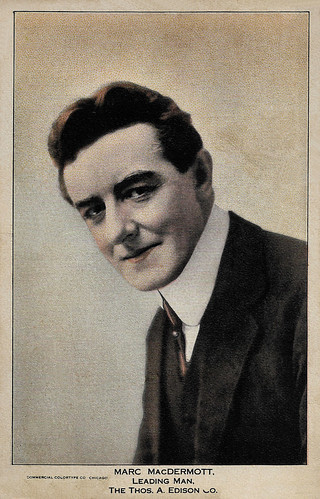
American postcard by the Commercial Colortype Co., Chicago. Photo: The Thos. A. Edison Co.
The Australian-born actor Marc McDermott (1881-1929) was one of the most popular leading men of the Edison company. From 1909 through the summer of 1916, he starred in over 140 films for Edison. In A Christmas Carol (J. Searle Dawley, 1910), he featured as Ebenezer Scrooge opposite Charles S. Ogle as Bob Cratchit. Appearing frequently in popular early film magazines like Photoplay, Motion Picture, and Moving Picture World, he was voted as one of the most popular leading men during these years. In 1911, Marc costarred with Mary Fuller in Edison's first popular series What Ever Happened to Mary (Ashley Miller, Charles Brabin, 1912). In 1914, Marc appeared in the first-ever 'chapter' series, The Man Who Disappeared (1914). Each printed chapter story was featured in Popular Magazine as each filmed chapter simultaneously appeared on the screen.
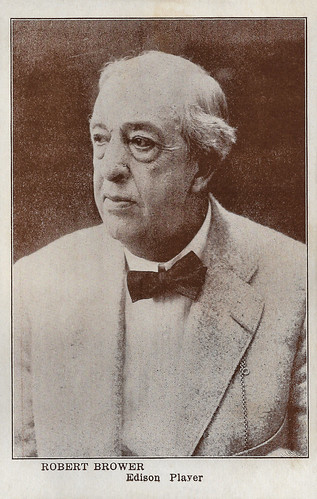
Vintage postcard. Photo: Edison.
Tall, mustachioed Robert Brower (1950-1934) was an American character actor of the silent cinema. The elderly gent joined Edison in 1911. He remained prolific during the 1920s and was still seen in small roles in early sound films.
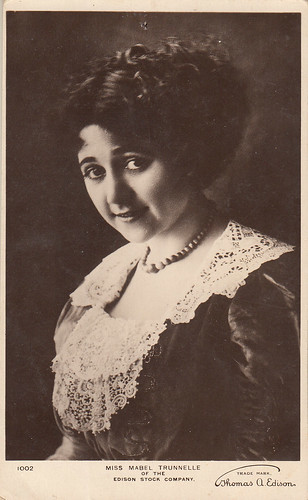
British postcard in the Photographic Series, no. 1002. Photo: Edison. Collection: Marlene Pilaete.
American actress Mabel Trunnelle (1879-1981) was a prominent star in the early silent films of the Edison company. She frequently co-starred with Herbert Prior. Between 1908 and 1923, Trunnelle appeared in 194 films.
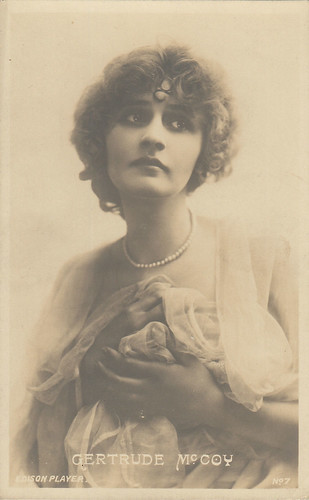
American postcard, no. 7. Photo: Edison. Collection: Marlene Pilaete.
Brunette Gertrude McCoy (1890-1967) was an American film actress of the silent era. She signed up with the Edison Company in 1910 and for at least the next five years appeared in scores of one- and two-reel comedies and melodramas.
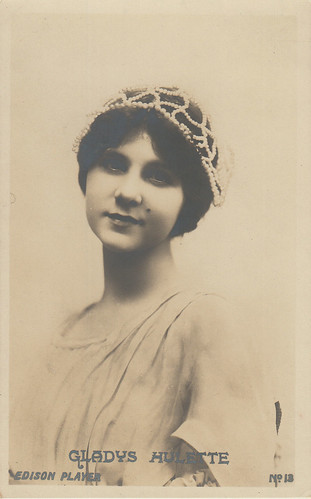
American postcard, no. 13. Photo: Edison. Collection: Marlene Pilaete.
Gladys Hulette (1896-1991) was an American silent film actress who started her career at the age of three as a child player on stage. She began her film career as a 7-years-old in the early years of silent movies and continued until the mid-1930s. During the 1910s and 1920s, she appeared variously in films with Edison, Biograph, Thanhouser, Vitagraph, Astra, and First National. Hulette was also a talented artist.
The restoration of Frankenstein (1910). Sources: Cranked Up Films (YouTube).
Sources: (IMDb), Wikipedia, and .
Check out our earlier Before Hollywood posts: Vitagraph, Essanay, Biograph, Lubin, Flying A, and Kalem.

Vintage postcard.

French postcard by A.N., Paris, no. 342. Photo: Walter Scott Shinn, New York.

American postcard by Art Creation for the Henry Ford Museum and Greenfield Village, Dearborn, Michigan. Caption: Henry Ford and Thomas A. Edison in conversation at Greenfield Village, in 1928. Their friendship had begun in 1896 when Edison encouraged the then young and unknown Ford's automobile experiments. The deafness, which had afflicted the inventor since childhood, is evident in this pose, as Henry Ford speaks loudly in his ear.
The instigator of the exodus to Hollywood
Thomas Alva Edison was born in 1847 in Milan, Ohio, USA. His father, Samuel Edison, was of Dutch ancestry and his mother, Nancy Elliot, was of English descent. Thomas was home-schooled. He used a primitive cylinder and foil device to create the first known recording of a human voice (his own, reciting the poem 'Mary Had A Little Lamb'). Although he invented the cylinder recorder (phonograph), it was Emile Berliner who created the flat disc. Edison licensed the patent(s) from him.
Other inventions to his credit include cellophane tape, waxed paper, an improved version of the typewriter keyboard, and 'the electric pencil', a forerunner to the fax machine. He is often credited with the invention of the incandescent light bulb, but that is untrue; he only perfected it. Similar bulbs were already in existence but they were expensive, did not last long, and gave off a bad smell. By developing a low-cost, long-lasting, carbonized cotton filament, Edison made electrical light cheap enough to be financially practical.
Thomas Edison is credited with the invention of sprocketed cinema film. He also invented the Kinetograph camera and the peephole kinetoscope viewer. The Edison Manufacturing Company's earliest films were produced solely to demonstrate the use of the peephole viewer. The studio made several experimental short films, some lasting only several seconds, mostly to test his equipment. One film, Edison Kinetoscopic Record of a Sneeze (1894), features a man sneezing, runs for 1-1/2 seconds.
Many of Edison's experimental films were made in a small wooden building dubbed 'The Black Maria' because it resembled a police wagon of the same name. Edison's Black Maria was built on a lot next to his lab and office. The building, essentially a large wooden shed covered with tar paper, was small enough that it was mounted on circular tracks so it could be turned to accommodate sunlight through an opening in the roof. The original has long since burned down, but a reproduction of the structure is located at the Edison National Historic Site, a museum with a preserved laboratory facility in West Orange, New Jersey.
Edison himself played virtually no role in the production of individual films by his company which produced the first American film version of Frankenstein (J. Searle Dawley, 1910). Edison formed the Motion Picture Patent Company (MPPC), and teamed up with a few other prominent figures in film production, giving them a sort of monopoly on filmmaking. They wouldn't let other filmmakers use their technology, and they controlled the different steps of production. Supposedly, they even hired goons to enforce their monopoly. His attempts to force independent filmmakers to use his patented movie equipment resulted in an exodus of the film industry from the East Coast, where almost all films were produced, to California and a little town called Hollywoodland, now known as Hollywood.
The last years of Edison's life were plagued by financial failures, including plans to make houses out of poured formed concrete (it never caught on with the public) and making rubber from goldenrod (it decomposed too quickly). In 1928, he was awarded a Congressional Gold Meda. Thomas Edison was married to Mina Miller and Mary Stilwell. He died in 1931 in West Orange, New Jersey, USA. When he lay dying at his home in New Jersey, newspaper reporters were anxiously awaiting a sign from his wife of Edison's death. She signaled Edison's passing by turning a light ON, not off, in his bedroom. Edison's son allegedly captured his last breath in a glass jar. The jar is on display at the reconstructed Menlo Park at Greenfield Village in Dearborn, Michigan.

Vintage postcard. Photo: Edison.
American actor Augustus Phillips (1874-1944) appeared in 134 films between 1910 and 1921. He played Victor Frankenstein, as a young medical student in Frankenstein (J. Searle Dawley, 1910), the very first adaptation produced by the Edison company.

American postcard. Photo: Edison.
American actress Mary Fuller (1988-1973) started her film career at Vitagraph and had her breakthrough at Edison. At Universal, Fuller became a major early film star who rivaled Mary Pickford in popularity. In 1917, she left the film industry and ended her life in a mental hospital.

American postcard by Kraus Mfg. Photo: Edison. Collection: Marlene Pilaete.
Elsie MacLeod was an American film actress who worked in Hollywood in the 1910s and early 1920s. She was primarily known for her starring roles in short Edison comedies.

American postcard by Trade Mark Thomas A. Edison. Photo: Edison. Collection: Marlene Pilaete.
Miriam Nesbitt (1873-1954) was an American stage and film actress. Till 1917, she acted in over 140 silent films for the Edison Company.
The very first screen adaptation of Frankenstein
Probably the best-known film of the Edison Manufacturing Company is the short silent horror film Frankenstein (1910). This film paved the way for modern-day horror as we now know it. It was directed by J. Searle Dawley, who also wrote the one-reeler's screenplay, broadly basing his 'scenario' on Mary Shelley's 1818 novel 'Frankenstein; or, The Modern Prometheus'.
This short film is generally recognised by film historians as the first screen adaptation of Shelley's work. The small cast, who are not credited in the surviving 1910 print of the film, includes Augustus Phillips in his film debut as the young medical student Victor Frankenstein, Charles Ogle as Frankenstein's monster, and Mary Fuller as the doctor's fiancée.
Searle Dawley, working in his third year for Edison Studios, shot the film in three days at the company's Bronx facilities in New York City on 13, 15, and 17 January 1910. In the following years, Augustus Phillips and Mary Fuller became two of the brightest stars of the Edison studio. Both acted in dozens of short silent Edison films.
Mary Fuller starred in Edison's first popular series, What Ever Happened to Mary (Ashley Miller, Charles Brabin, 1912). Twelve one-reel episodes were released monthly beginning July 1912, coinciding with the literary serial of the same name published in McClure's The Ladies' World magazine. In addition to the films and regular magazine installments, What Happened to Mary was also adapted as a stage play, followed by a novelisation, making it an early precursor of the multimedia franchise.
For many years, Frankenstein (J. Searle Dawley, 1910) was believed a lost film. In the early 1950s, a print of this film was purchased by a Wisconsin film collector, Alois F. Dettlaff, from his mother-in-law, who also collected films. Its existence was first revealed in the mid-1970s. Although somewhat deteriorated, the film was in viewable condition, complete with titles and tints as seen in 1910. In 2018, in recognition of Mary Shelly's bicentennial, the Library of Congress completed a full restoration of the short film, having purchased the Dettlaff collection in 2014.

American postcard by the Commercial Colortype Co., Chicago. Photo: The Thos. A. Edison Co.
The Australian-born actor Marc McDermott (1881-1929) was one of the most popular leading men of the Edison company. From 1909 through the summer of 1916, he starred in over 140 films for Edison. In A Christmas Carol (J. Searle Dawley, 1910), he featured as Ebenezer Scrooge opposite Charles S. Ogle as Bob Cratchit. Appearing frequently in popular early film magazines like Photoplay, Motion Picture, and Moving Picture World, he was voted as one of the most popular leading men during these years. In 1911, Marc costarred with Mary Fuller in Edison's first popular series What Ever Happened to Mary (Ashley Miller, Charles Brabin, 1912). In 1914, Marc appeared in the first-ever 'chapter' series, The Man Who Disappeared (1914). Each printed chapter story was featured in Popular Magazine as each filmed chapter simultaneously appeared on the screen.

Vintage postcard. Photo: Edison.
Tall, mustachioed Robert Brower (1950-1934) was an American character actor of the silent cinema. The elderly gent joined Edison in 1911. He remained prolific during the 1920s and was still seen in small roles in early sound films.

British postcard in the Photographic Series, no. 1002. Photo: Edison. Collection: Marlene Pilaete.
American actress Mabel Trunnelle (1879-1981) was a prominent star in the early silent films of the Edison company. She frequently co-starred with Herbert Prior. Between 1908 and 1923, Trunnelle appeared in 194 films.

American postcard, no. 7. Photo: Edison. Collection: Marlene Pilaete.
Brunette Gertrude McCoy (1890-1967) was an American film actress of the silent era. She signed up with the Edison Company in 1910 and for at least the next five years appeared in scores of one- and two-reel comedies and melodramas.

American postcard, no. 13. Photo: Edison. Collection: Marlene Pilaete.
Gladys Hulette (1896-1991) was an American silent film actress who started her career at the age of three as a child player on stage. She began her film career as a 7-years-old in the early years of silent movies and continued until the mid-1930s. During the 1910s and 1920s, she appeared variously in films with Edison, Biograph, Thanhouser, Vitagraph, Astra, and First National. Hulette was also a talented artist.
The restoration of Frankenstein (1910). Sources: Cranked Up Films (YouTube).
Sources: (IMDb), Wikipedia, and .
Check out our earlier Before Hollywood posts: Vitagraph, Essanay, Biograph, Lubin, Flying A, and Kalem.
Published on March 13, 2021 22:00
Paul van Yperen's Blog
- Paul van Yperen's profile
- 13 followers
Paul van Yperen isn't a Goodreads Author
(yet),
but they
do have a blog,
so here are some recent posts imported from
their feed.



